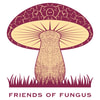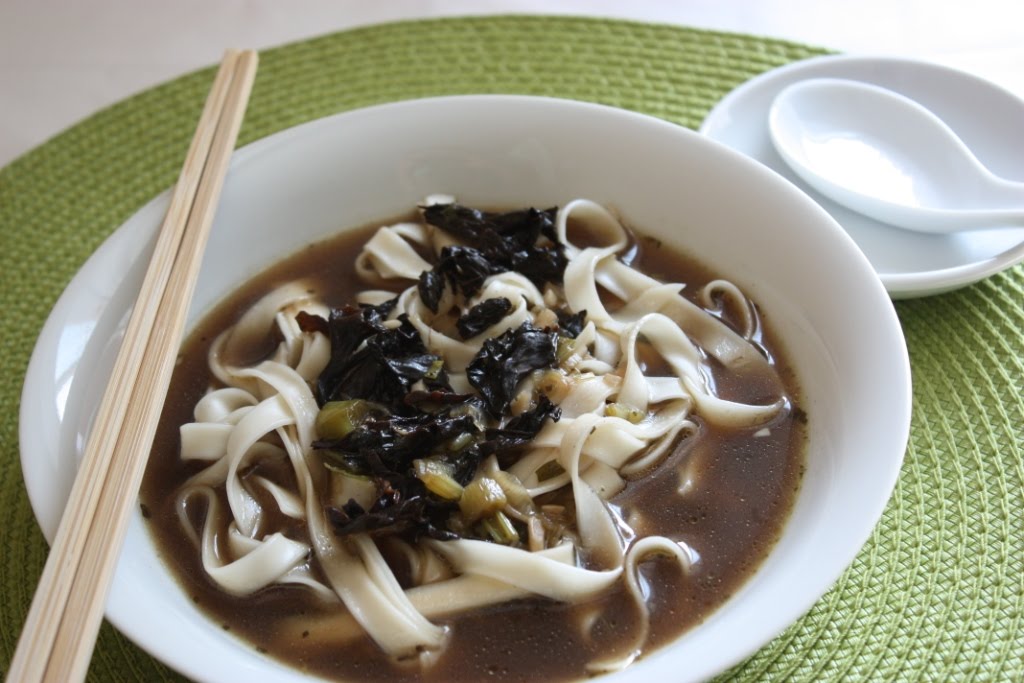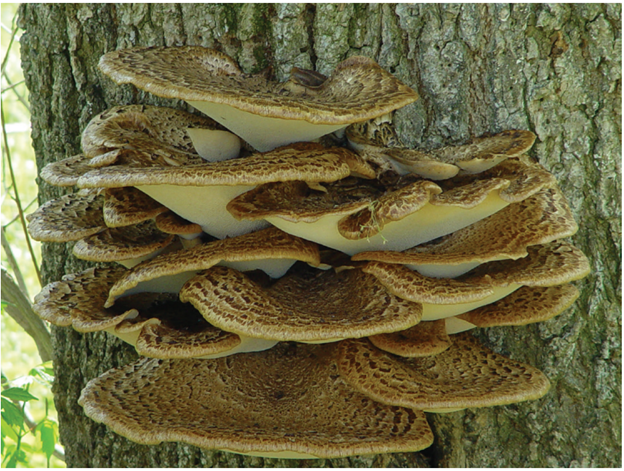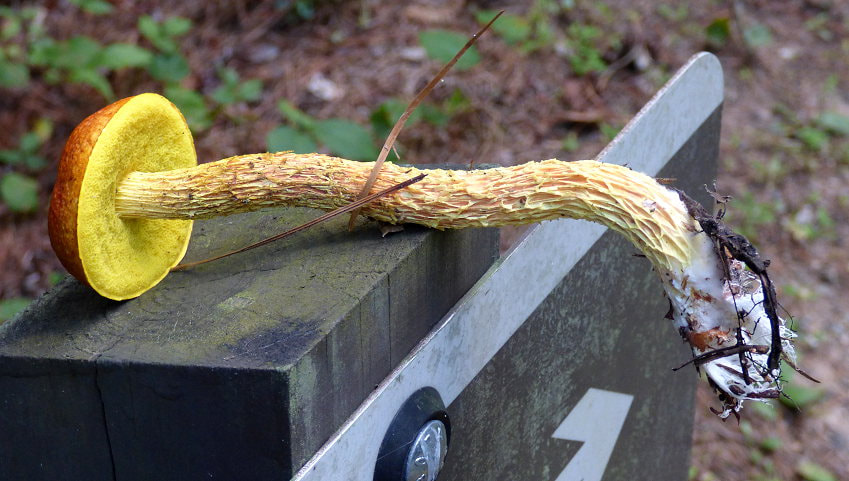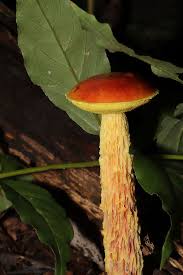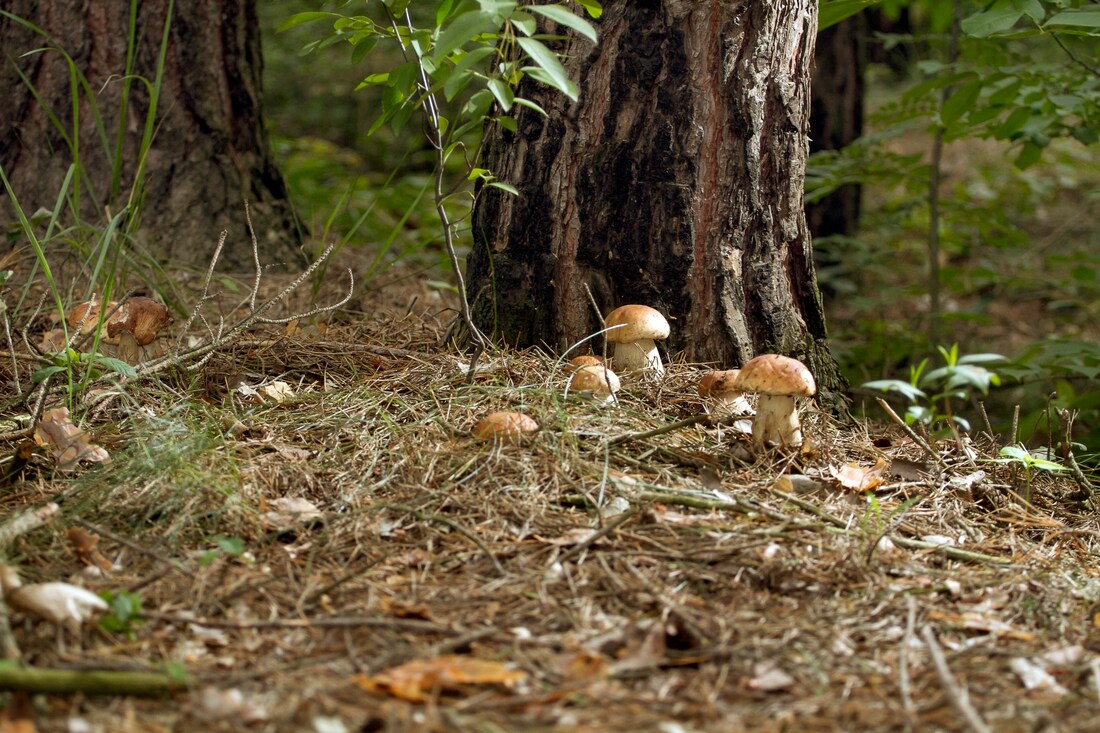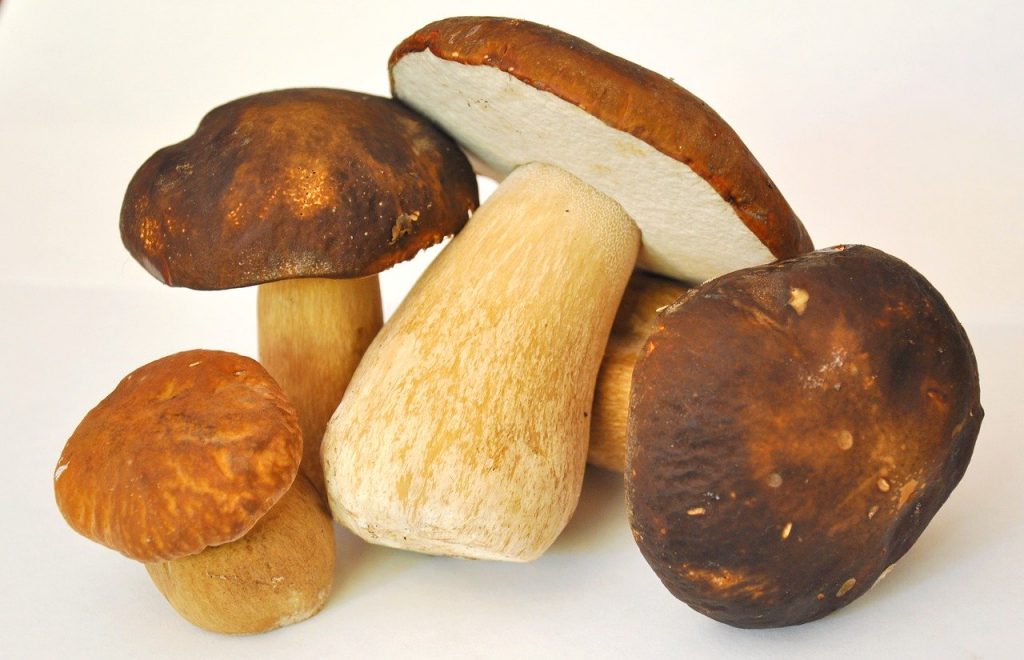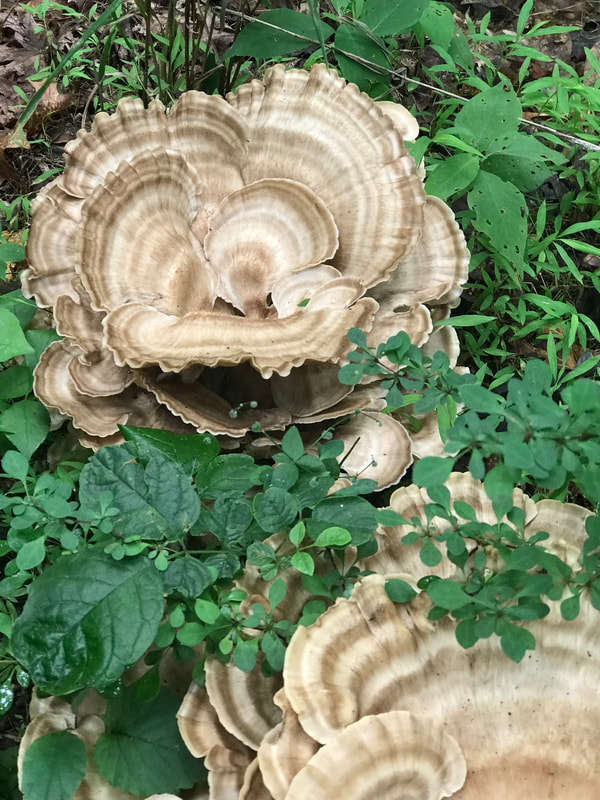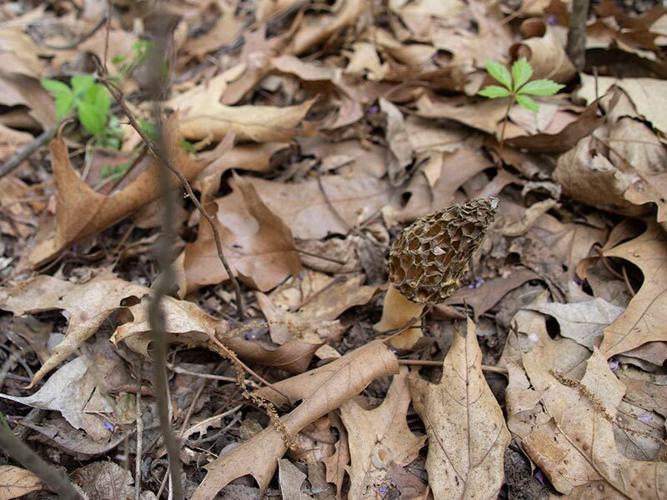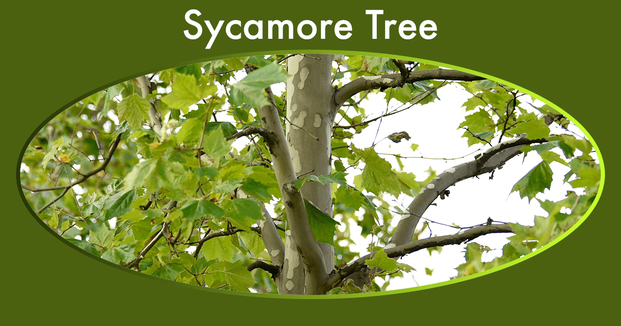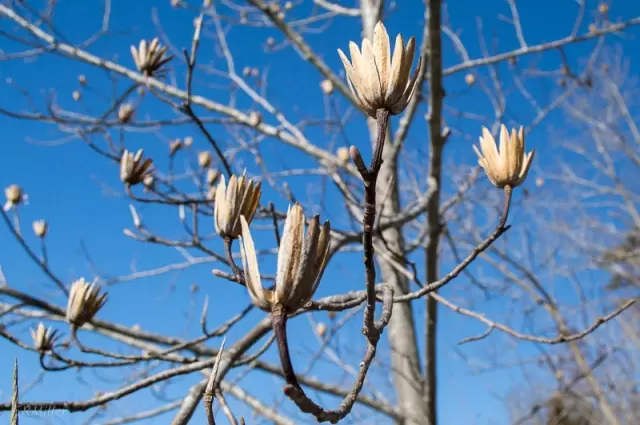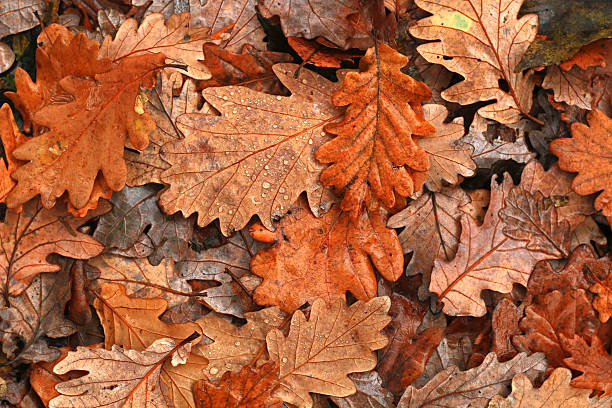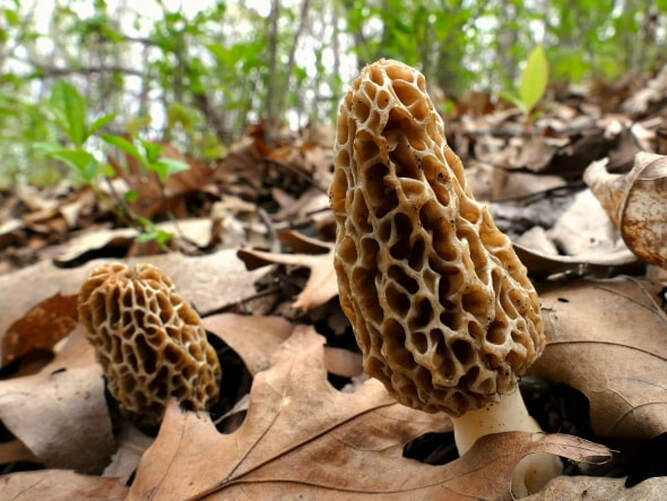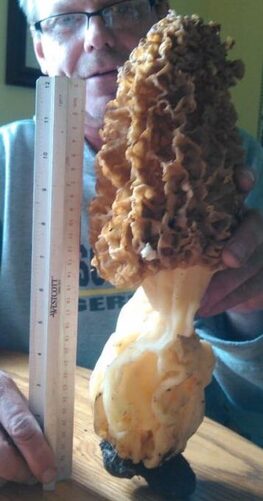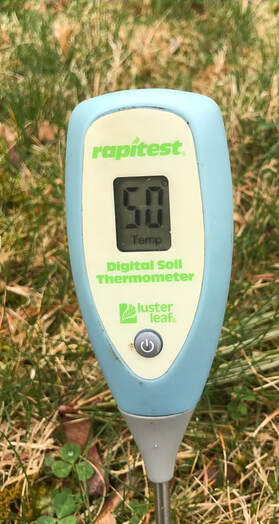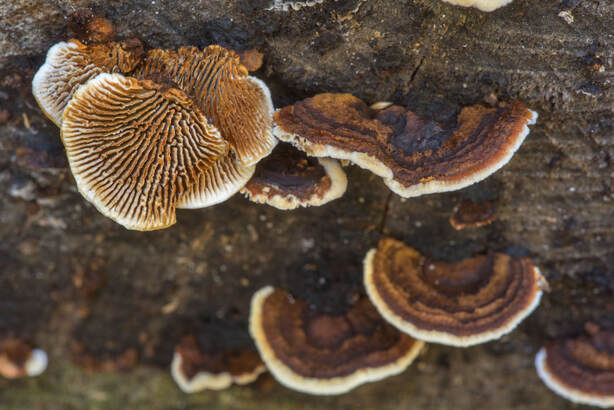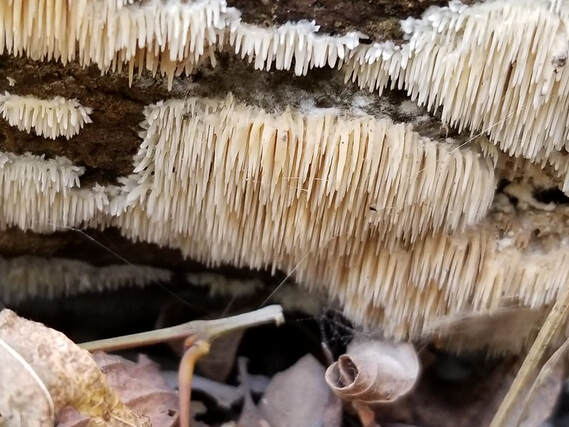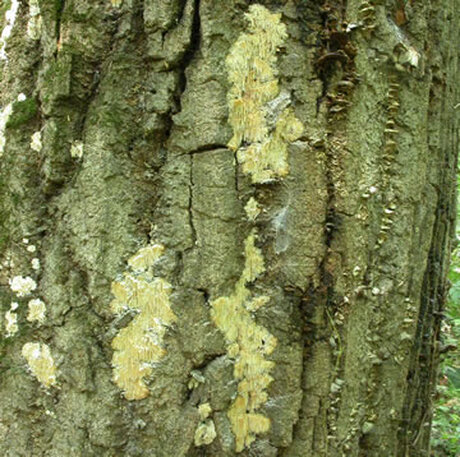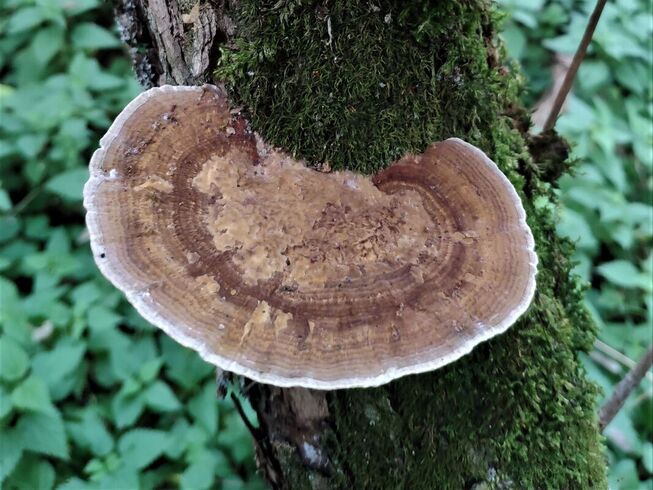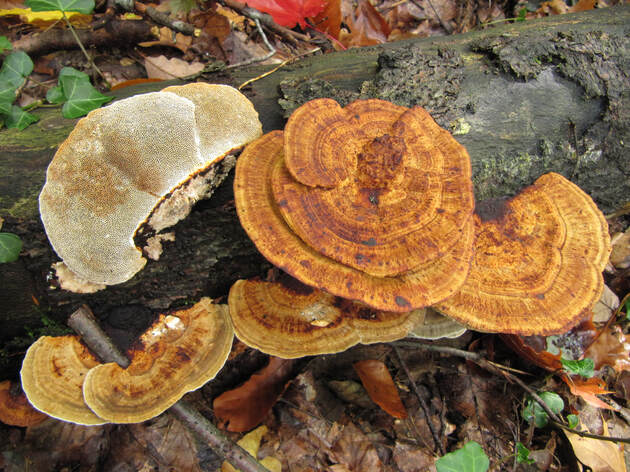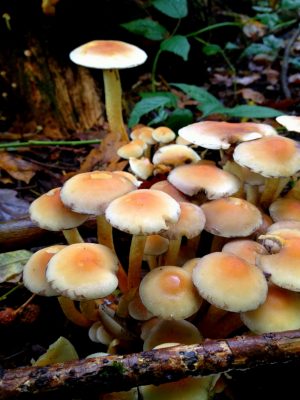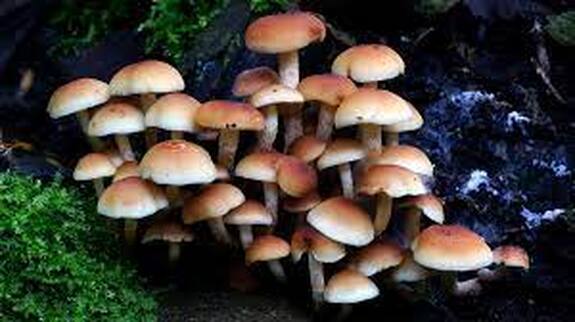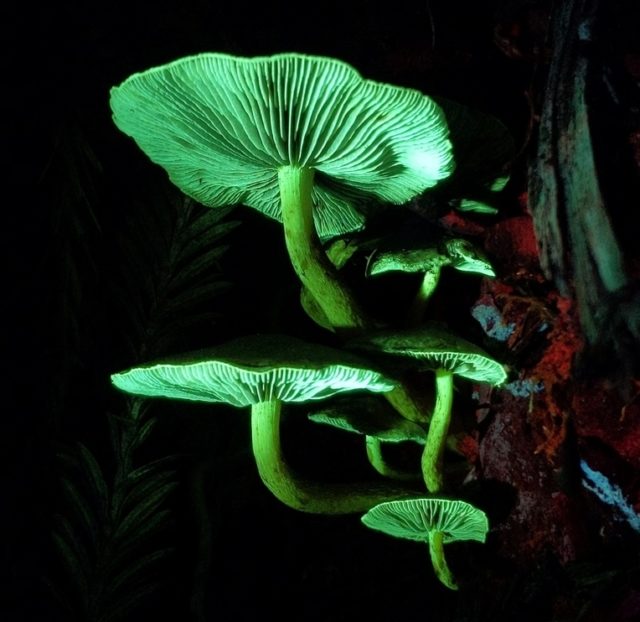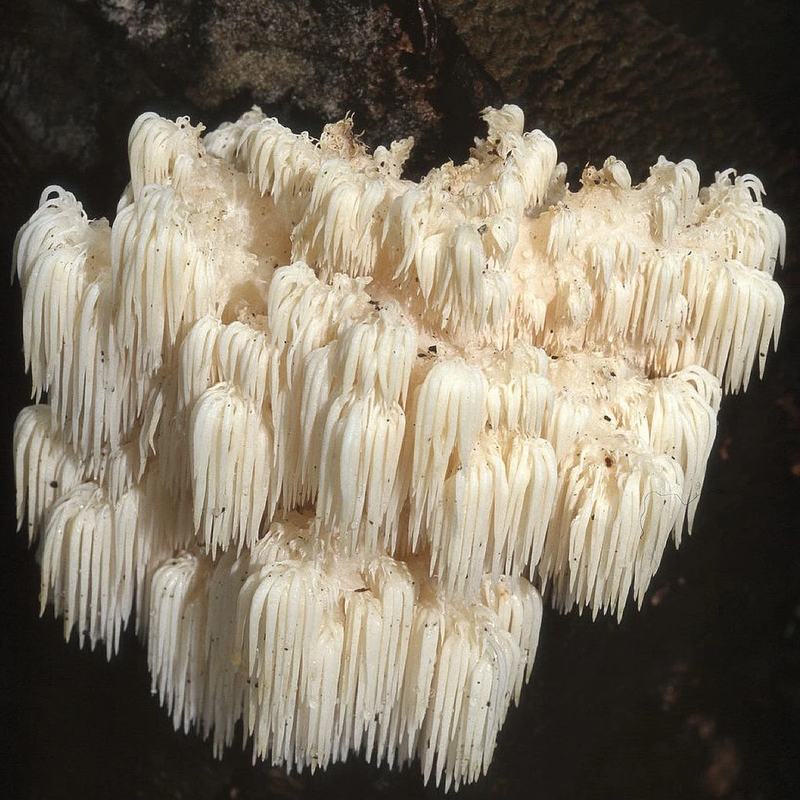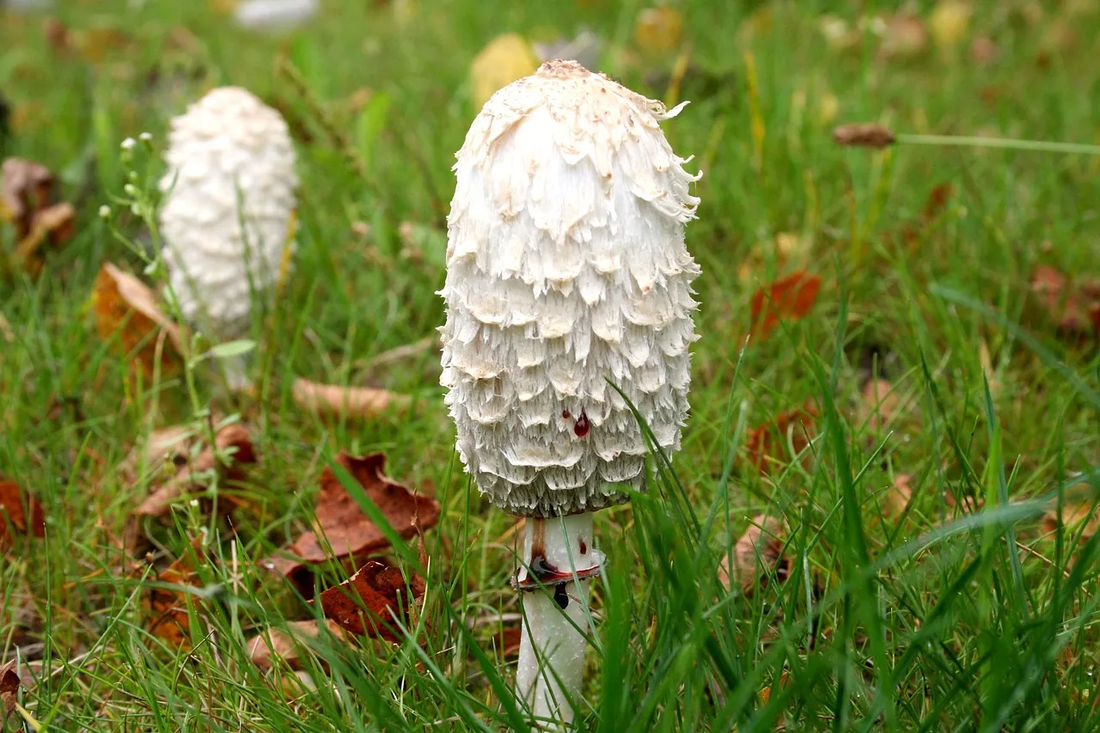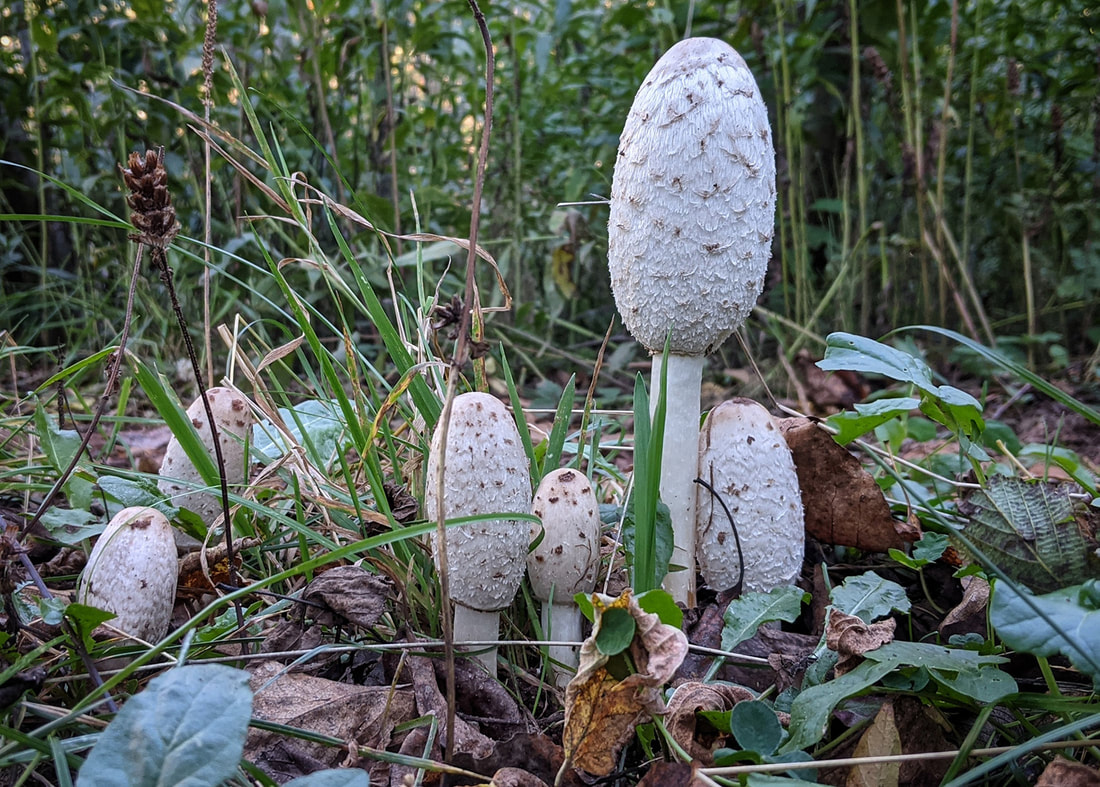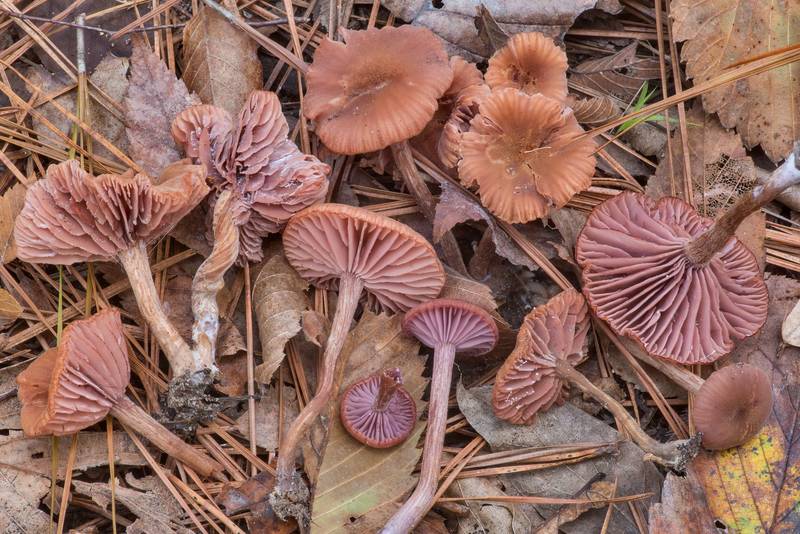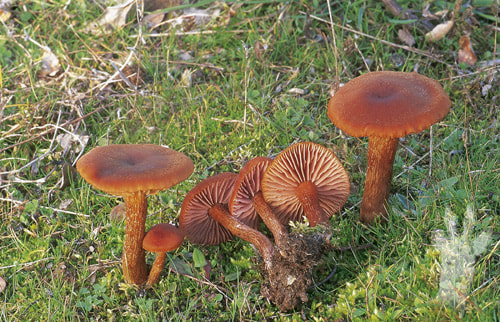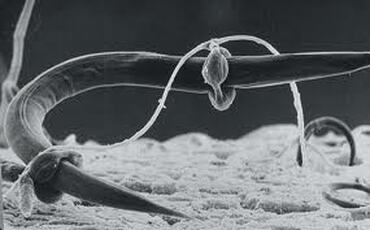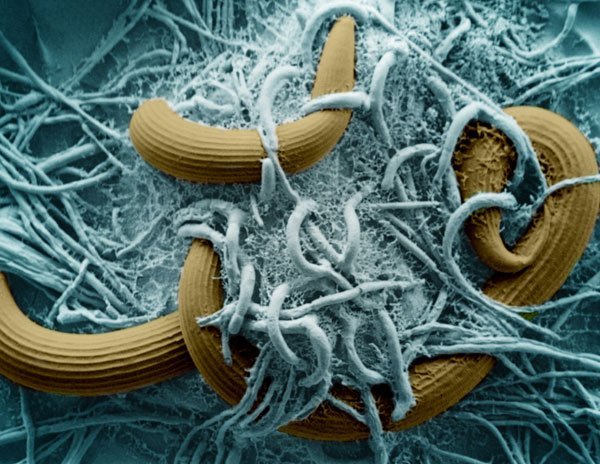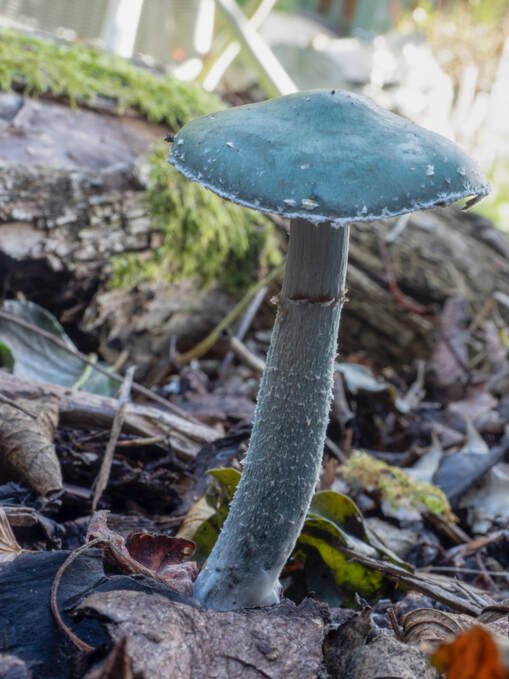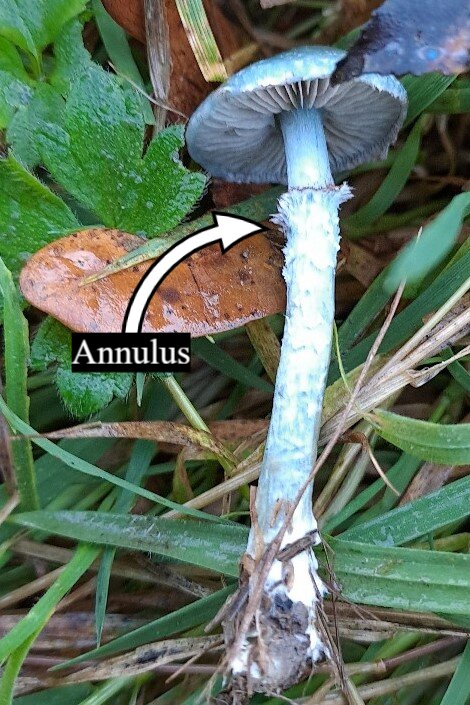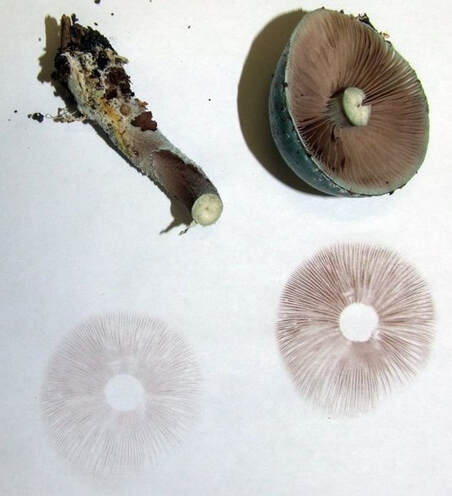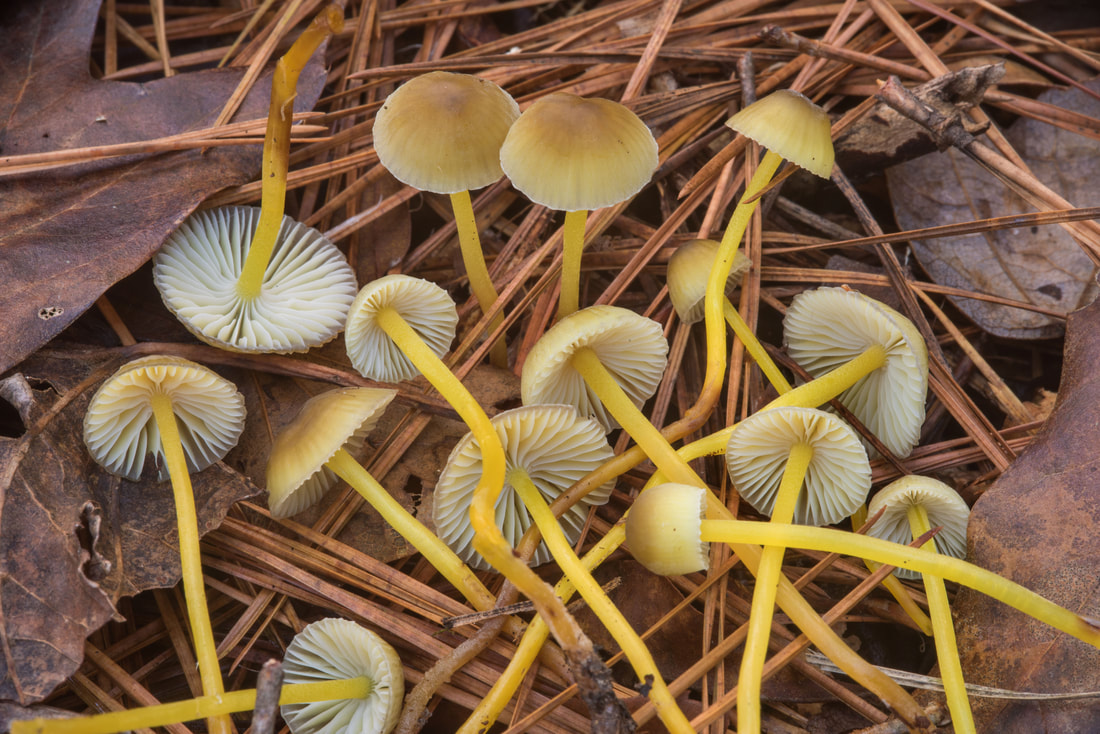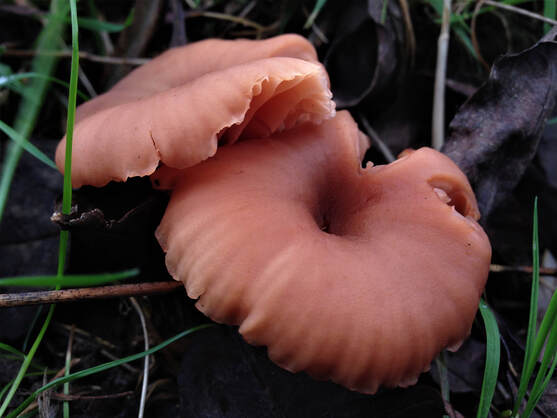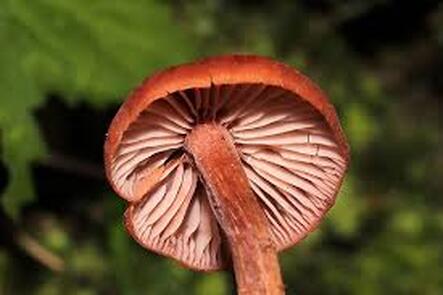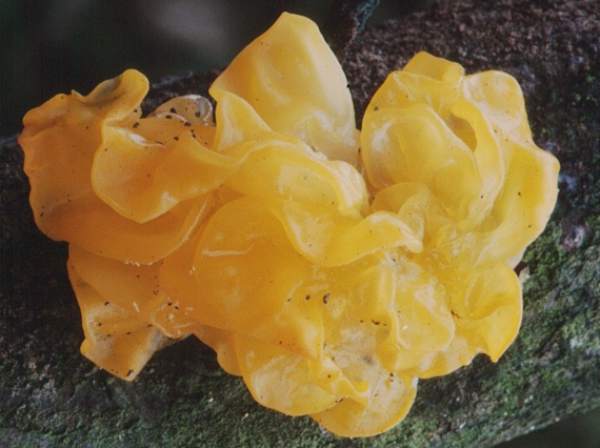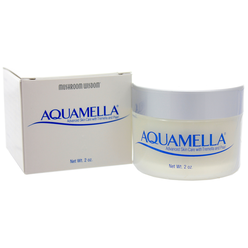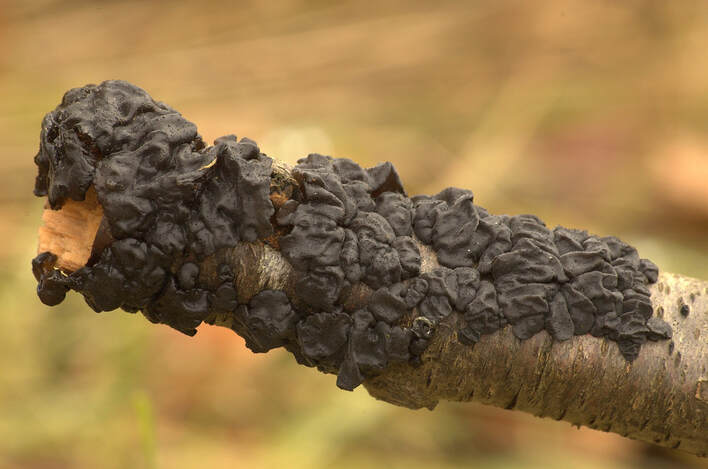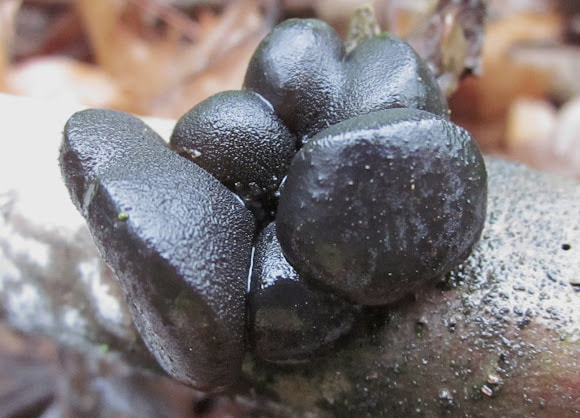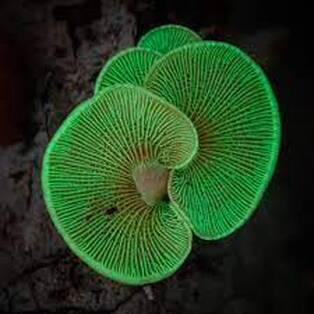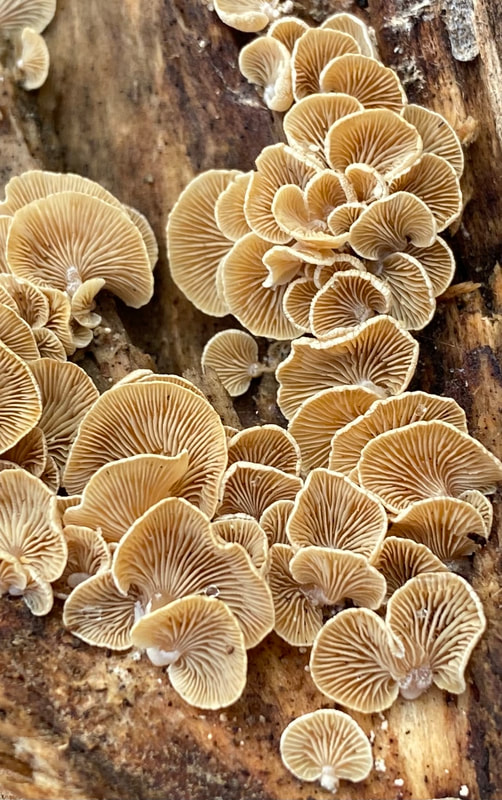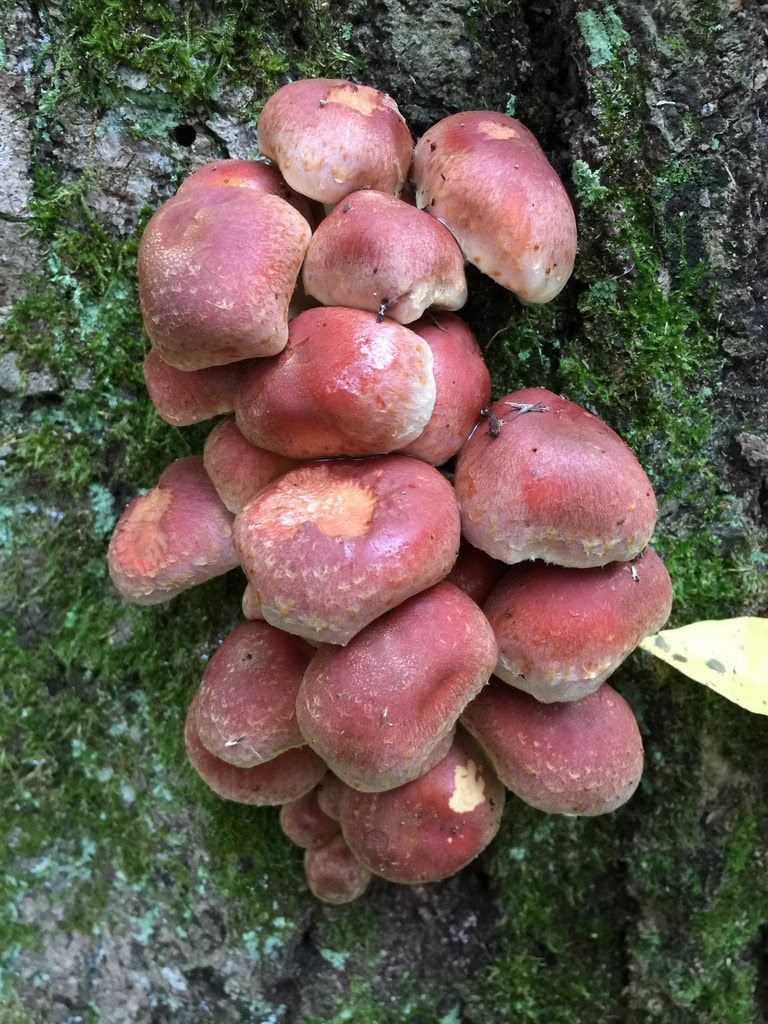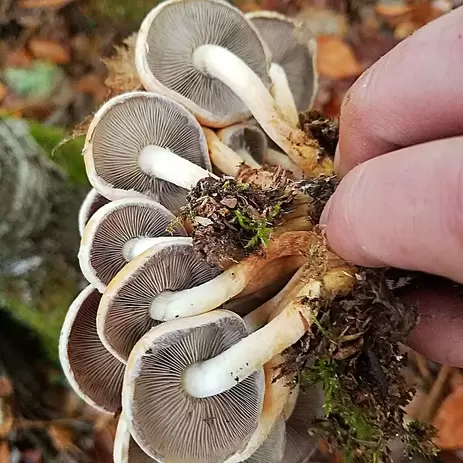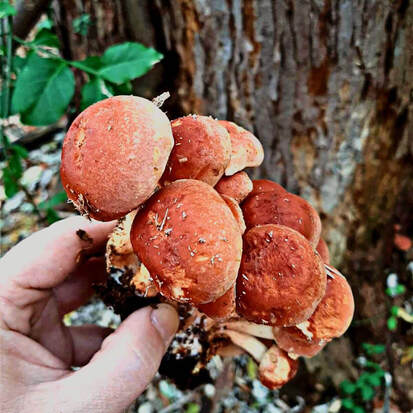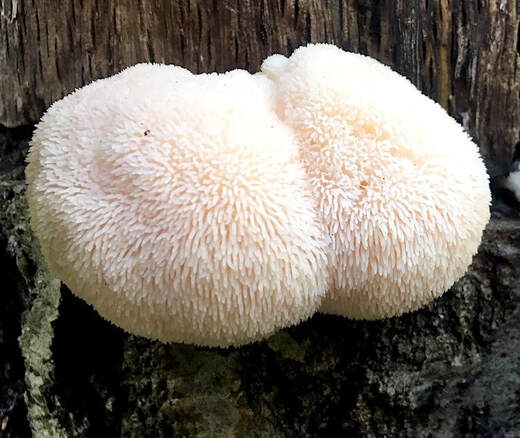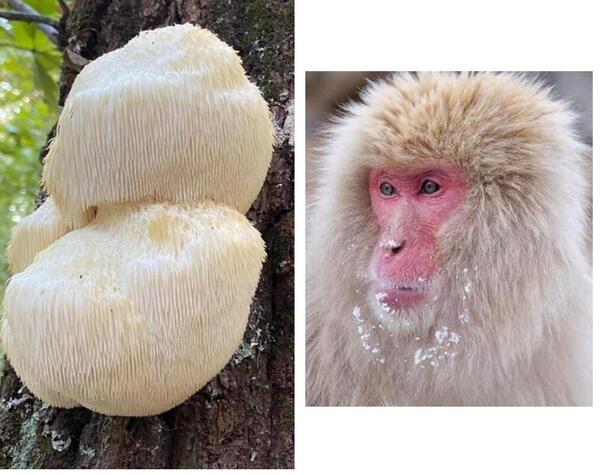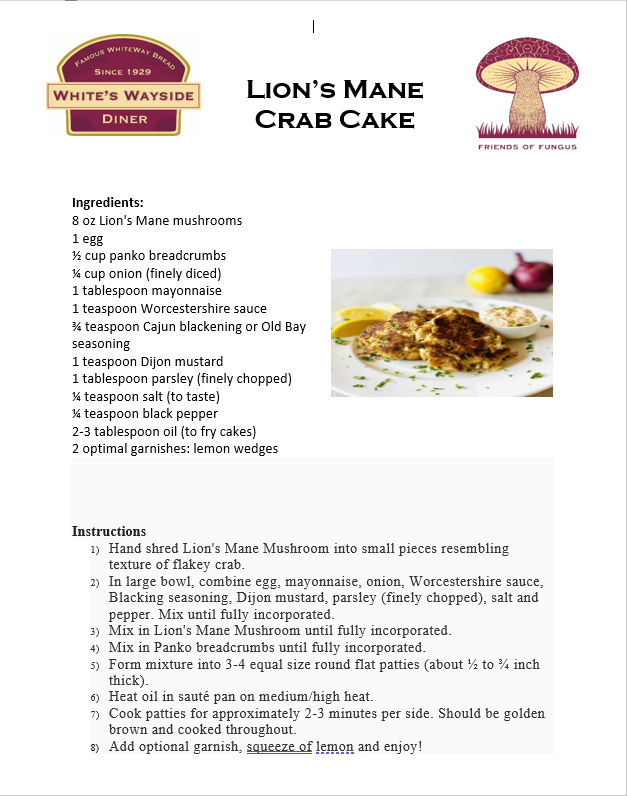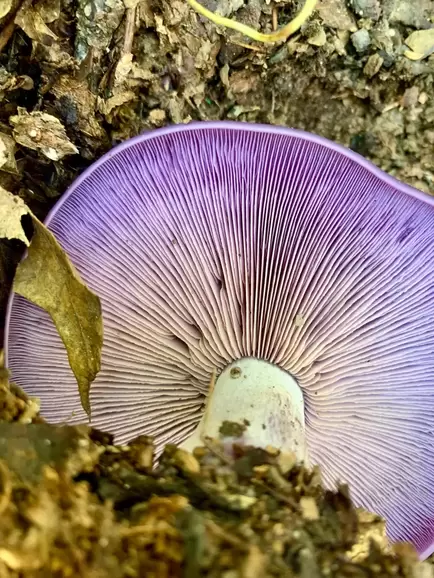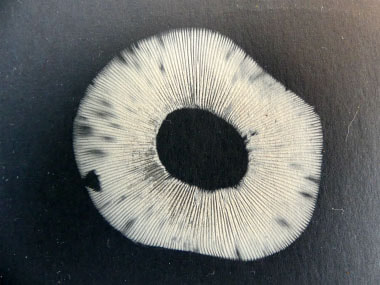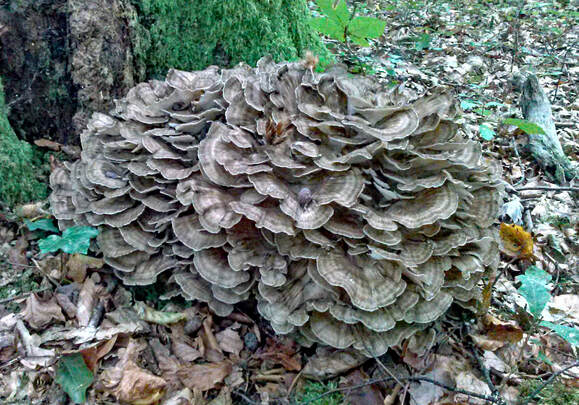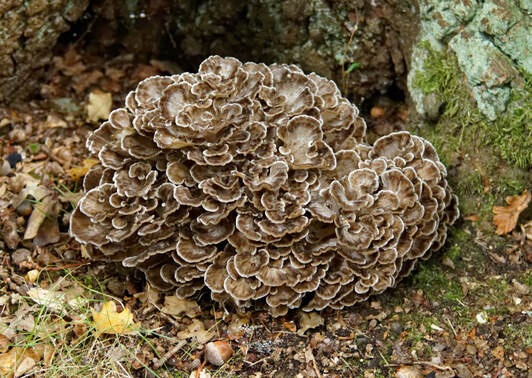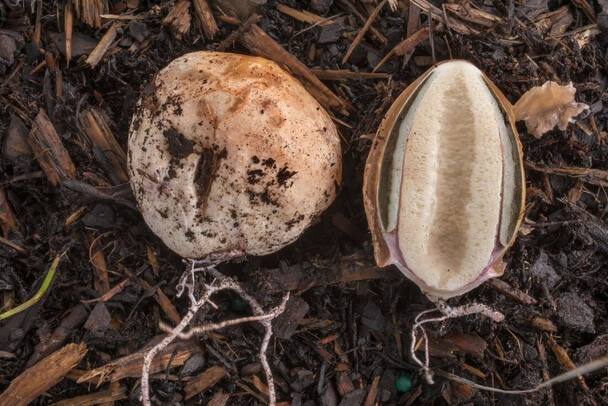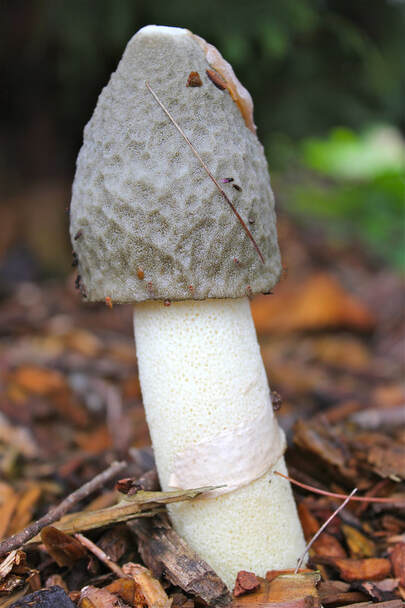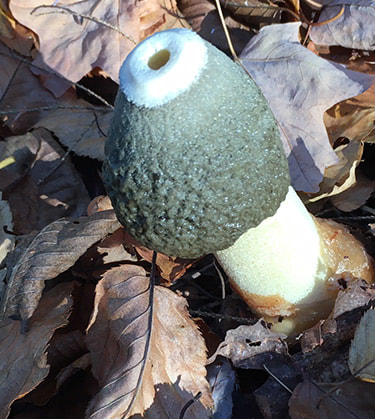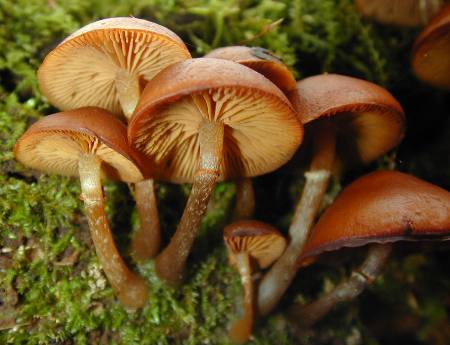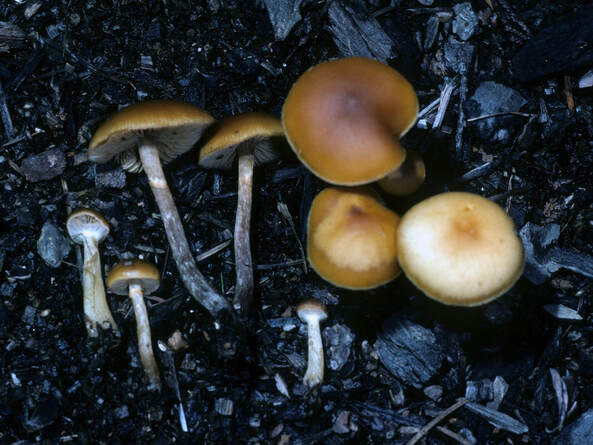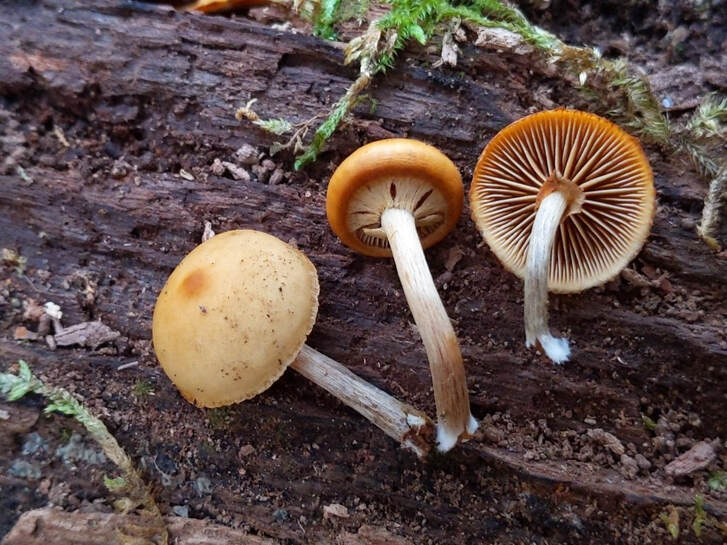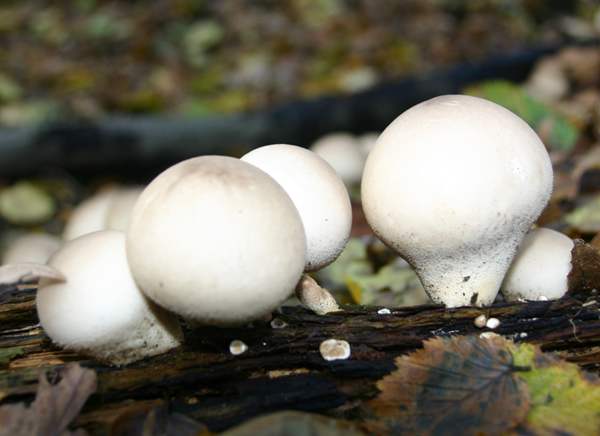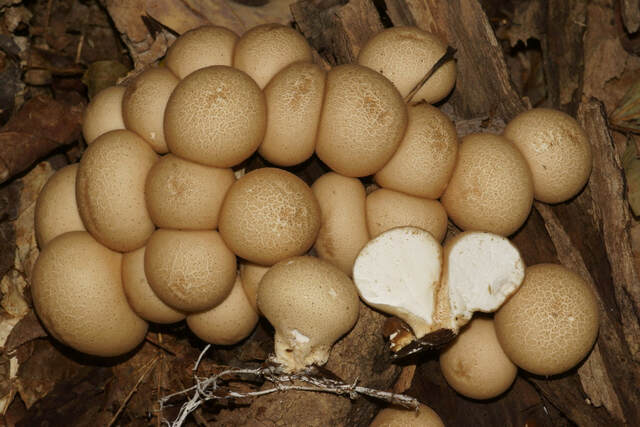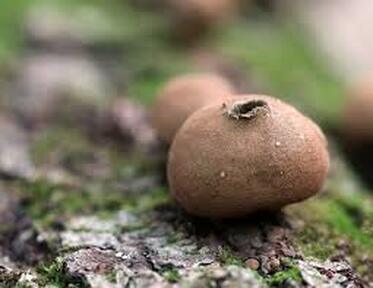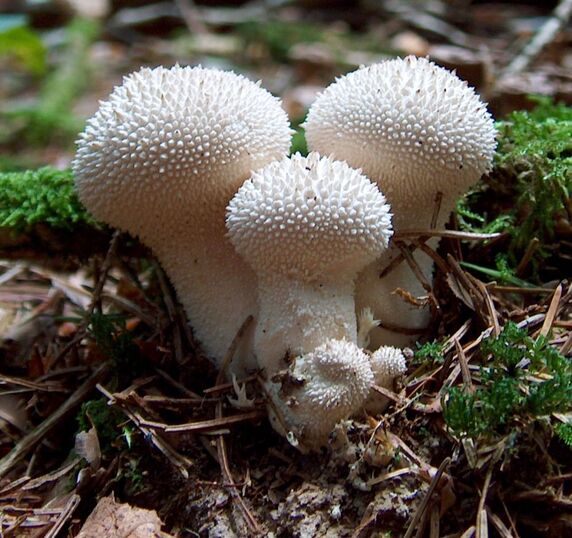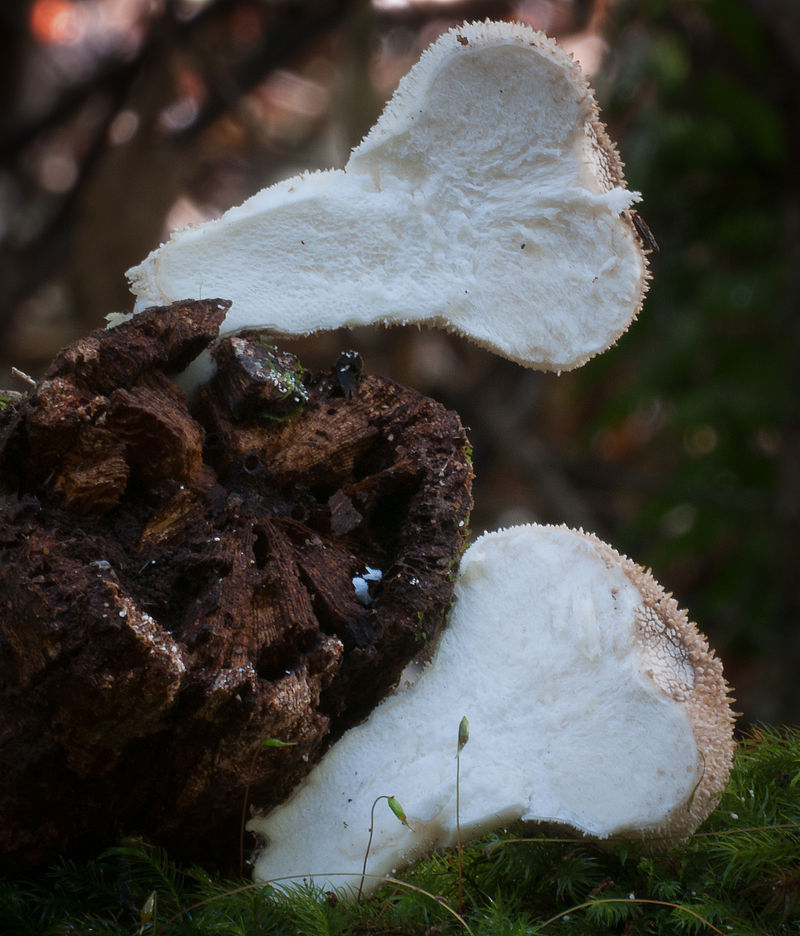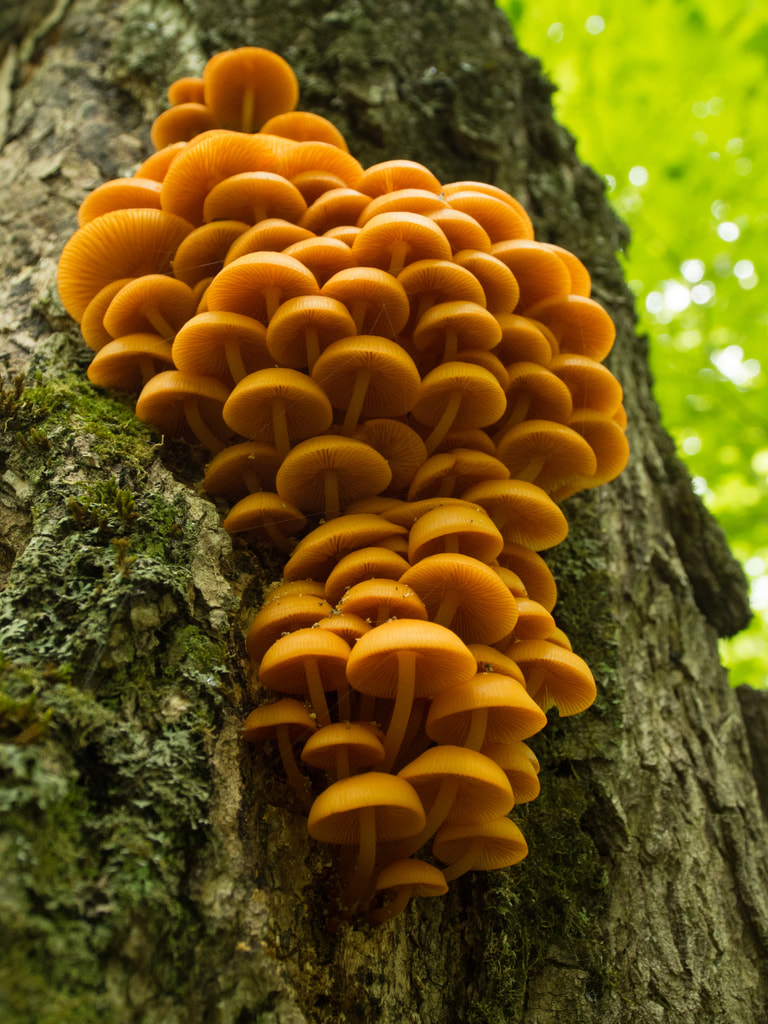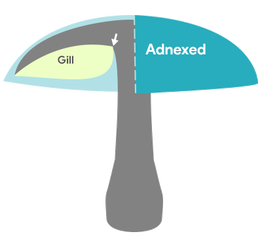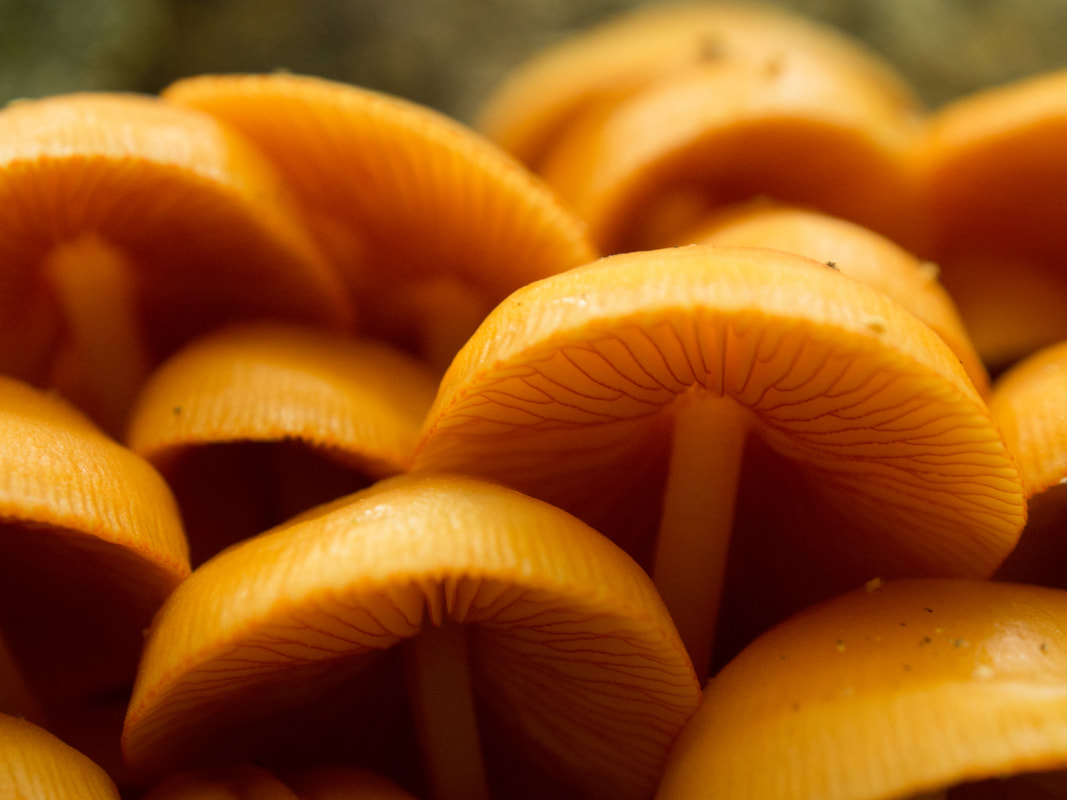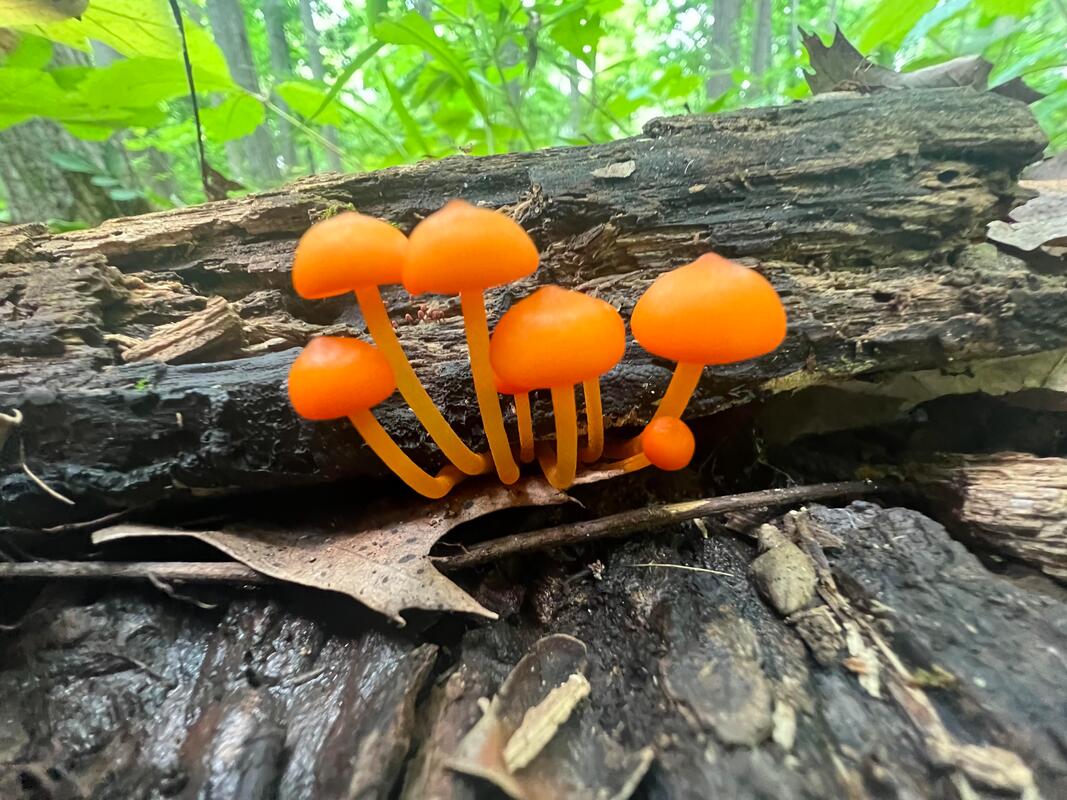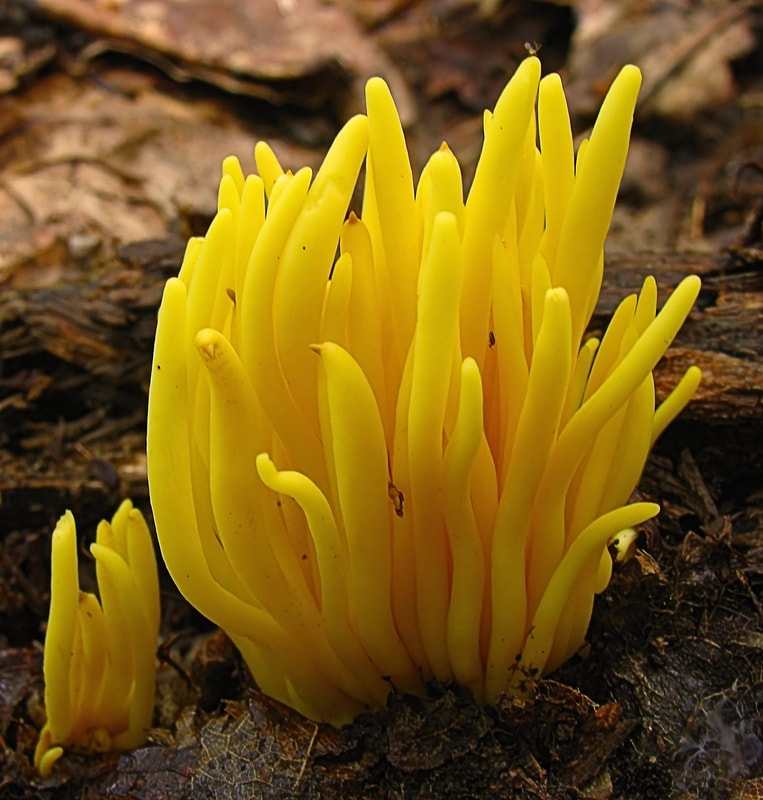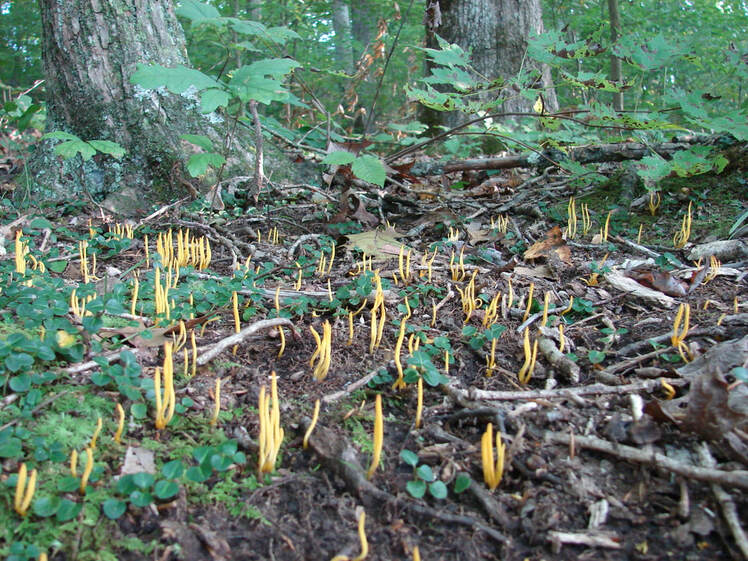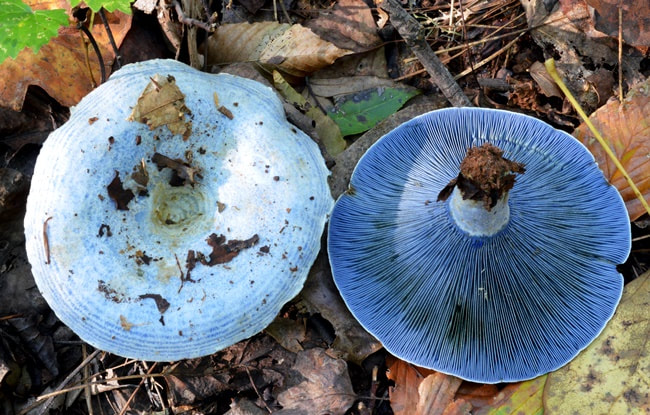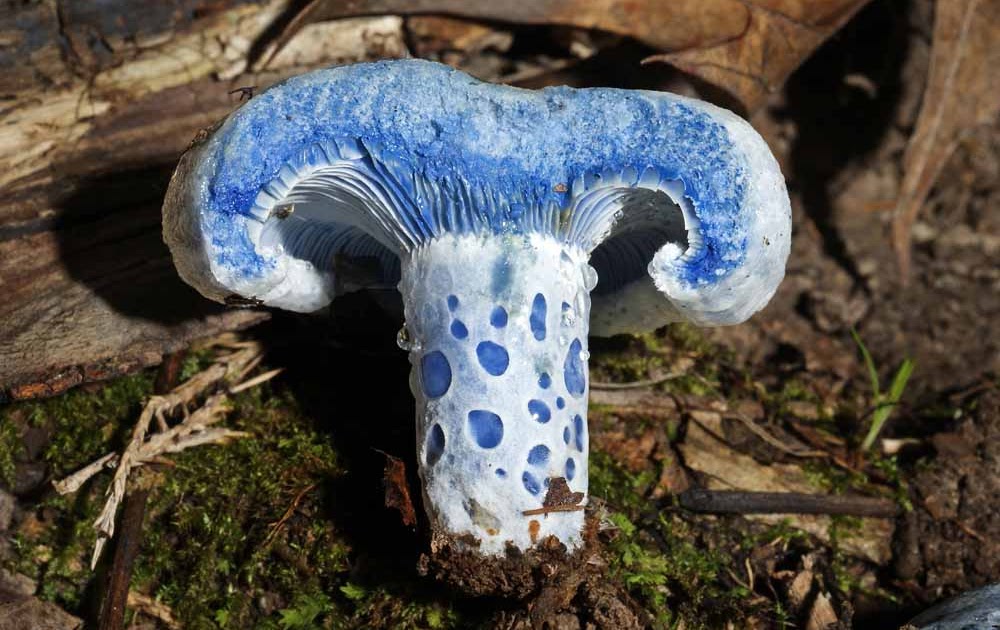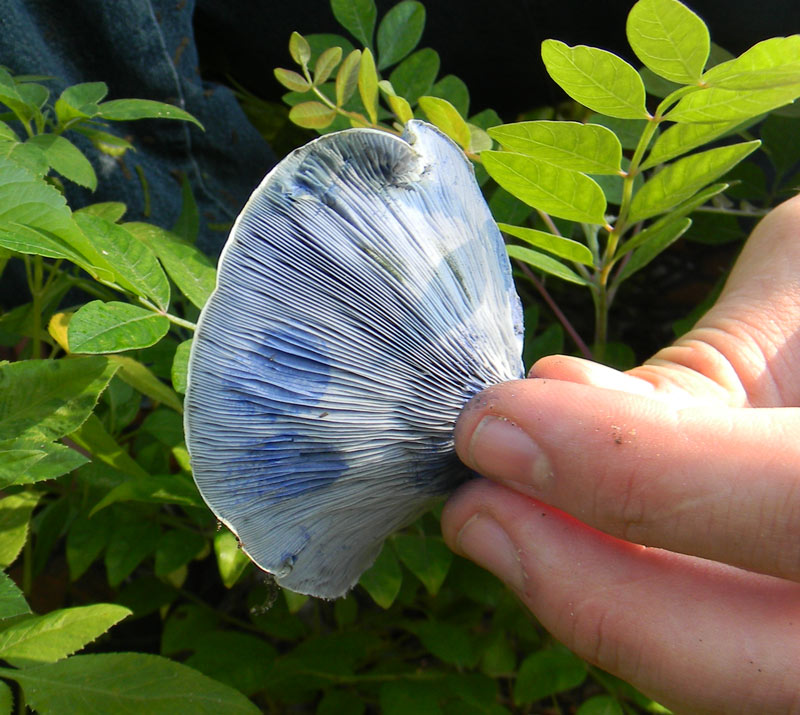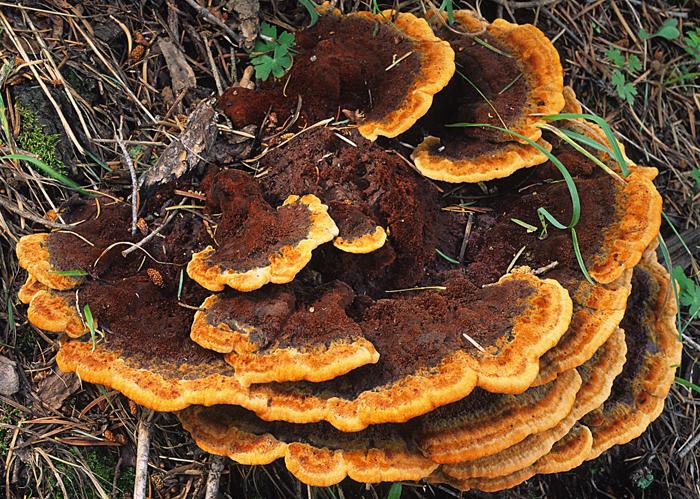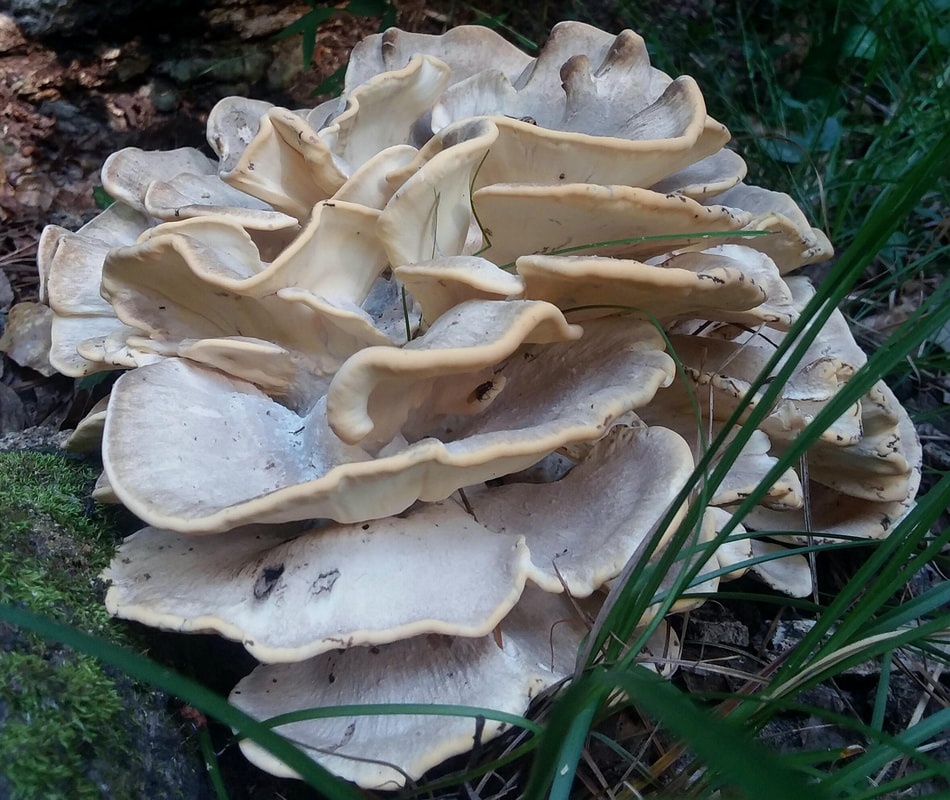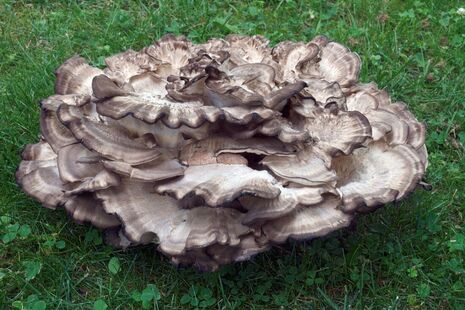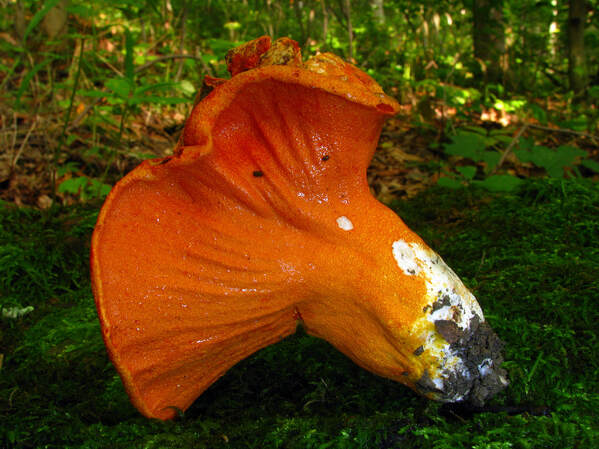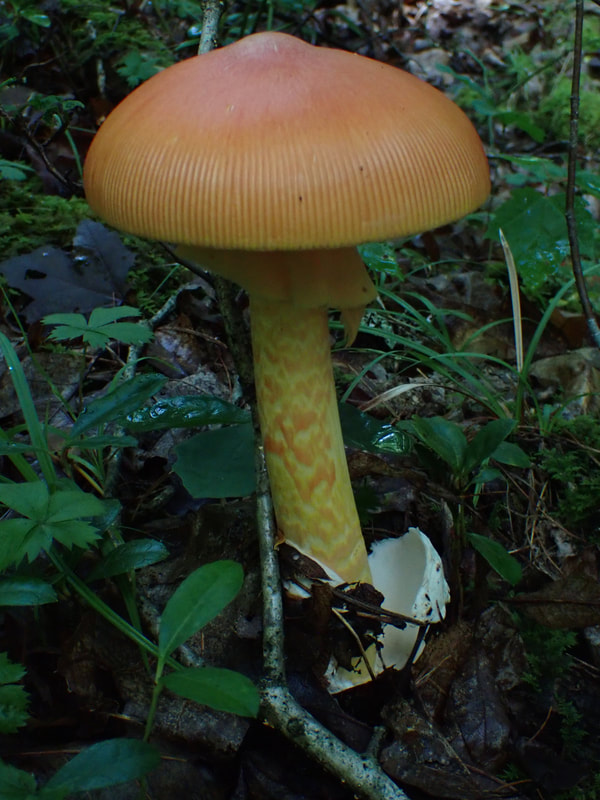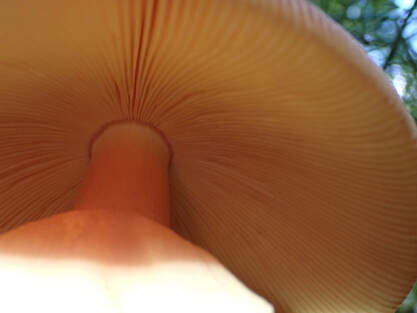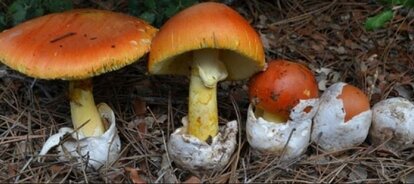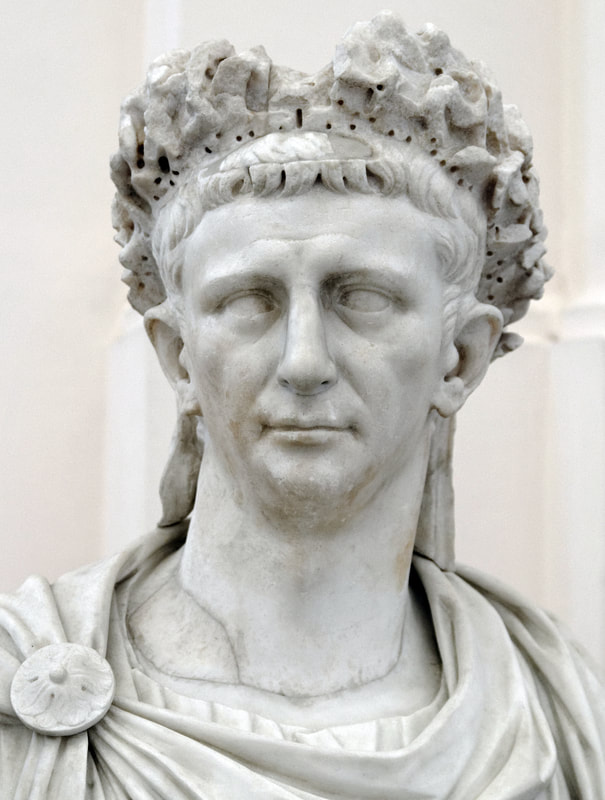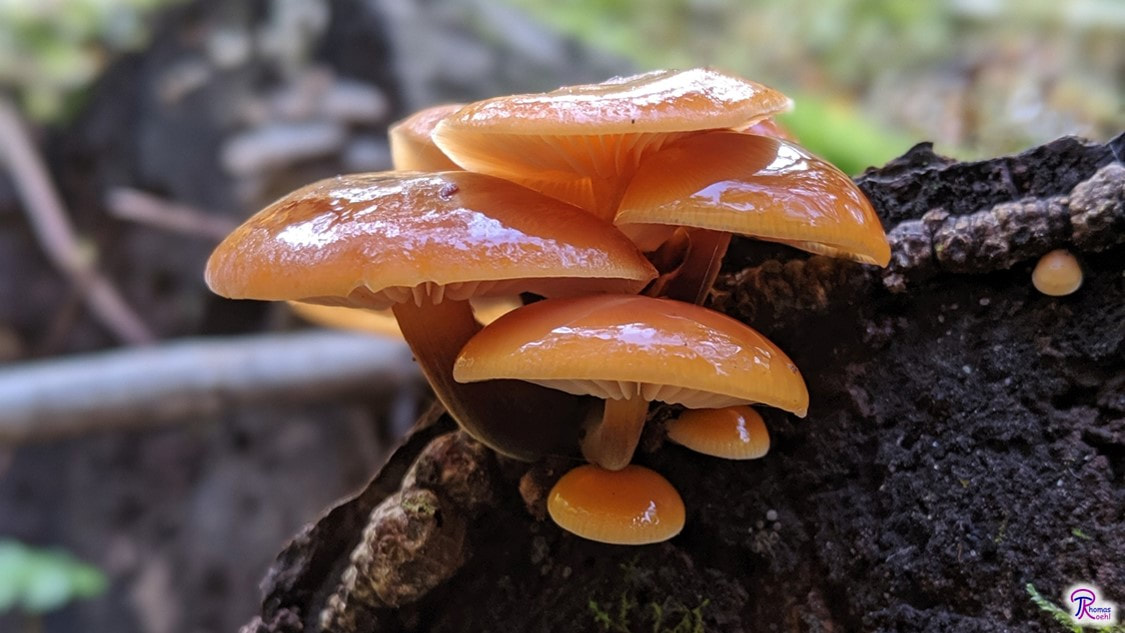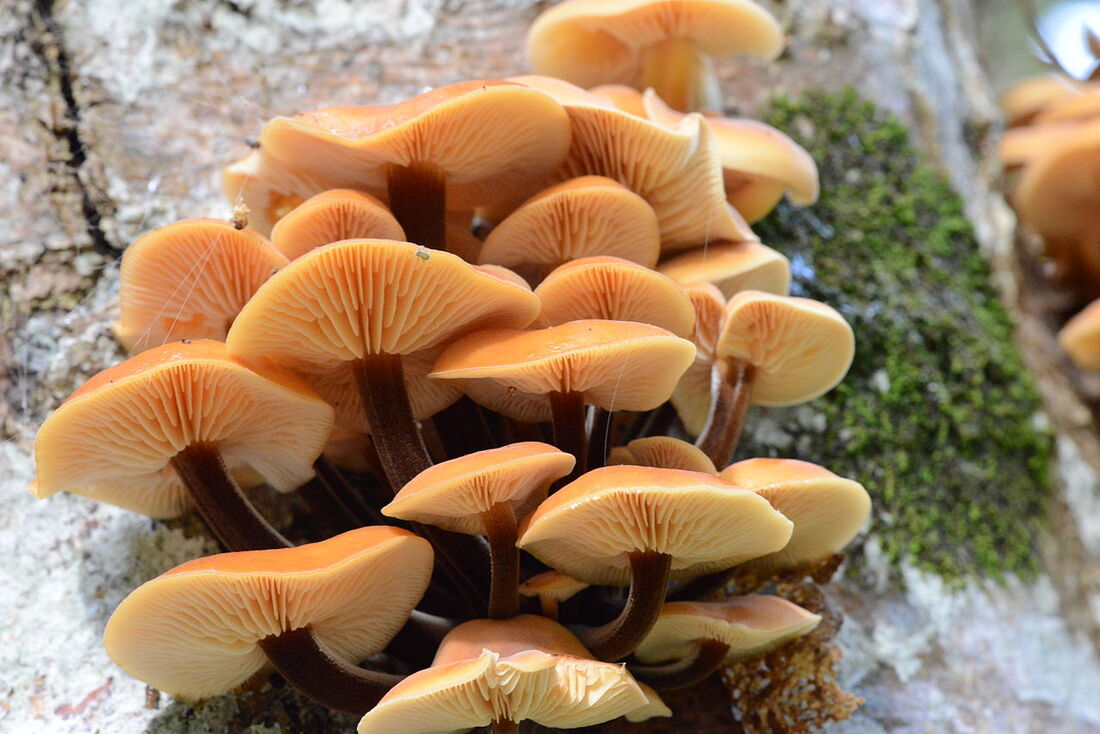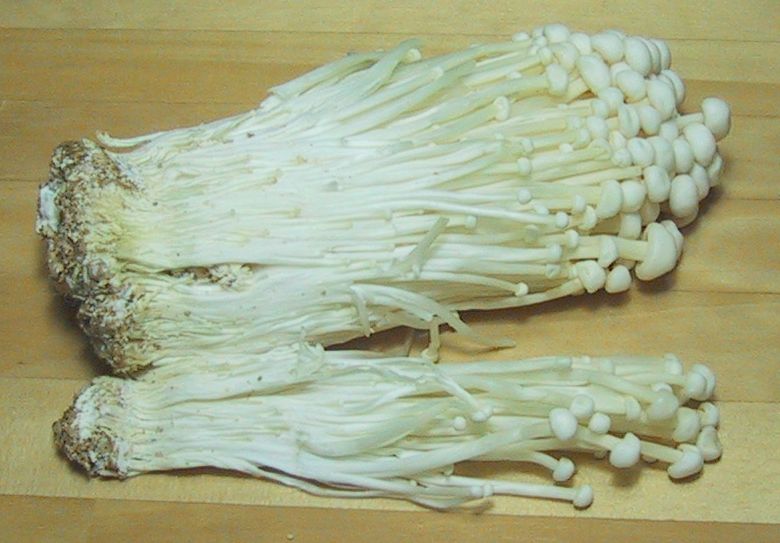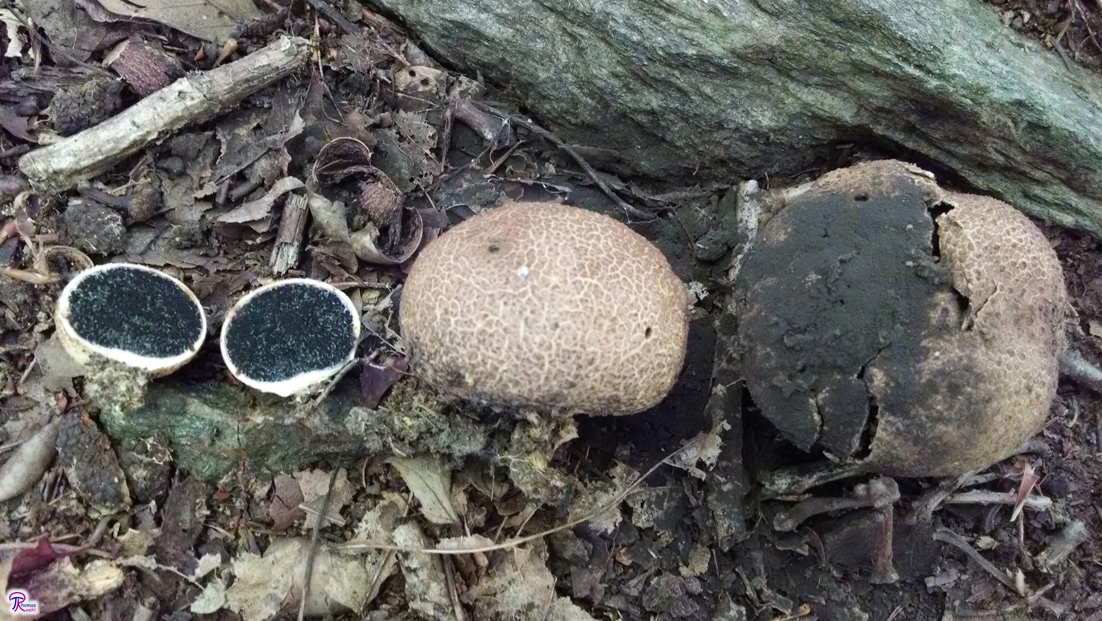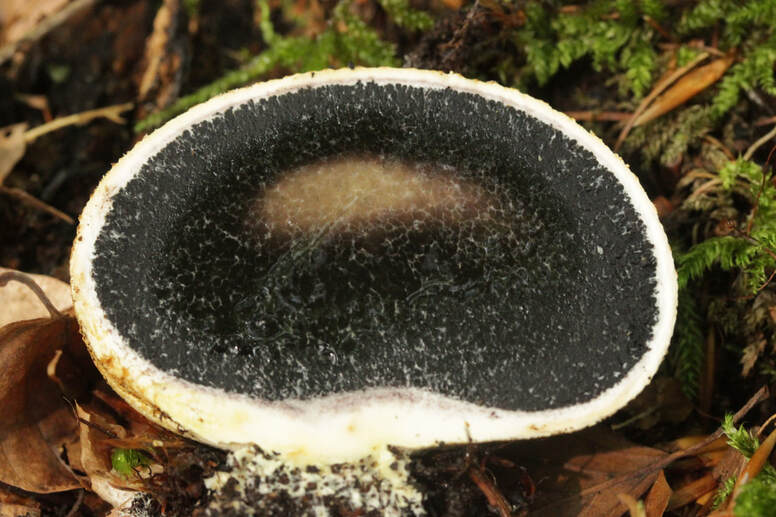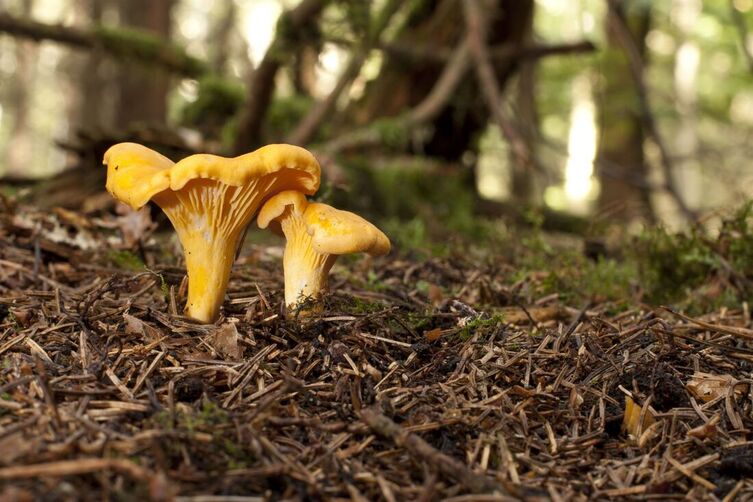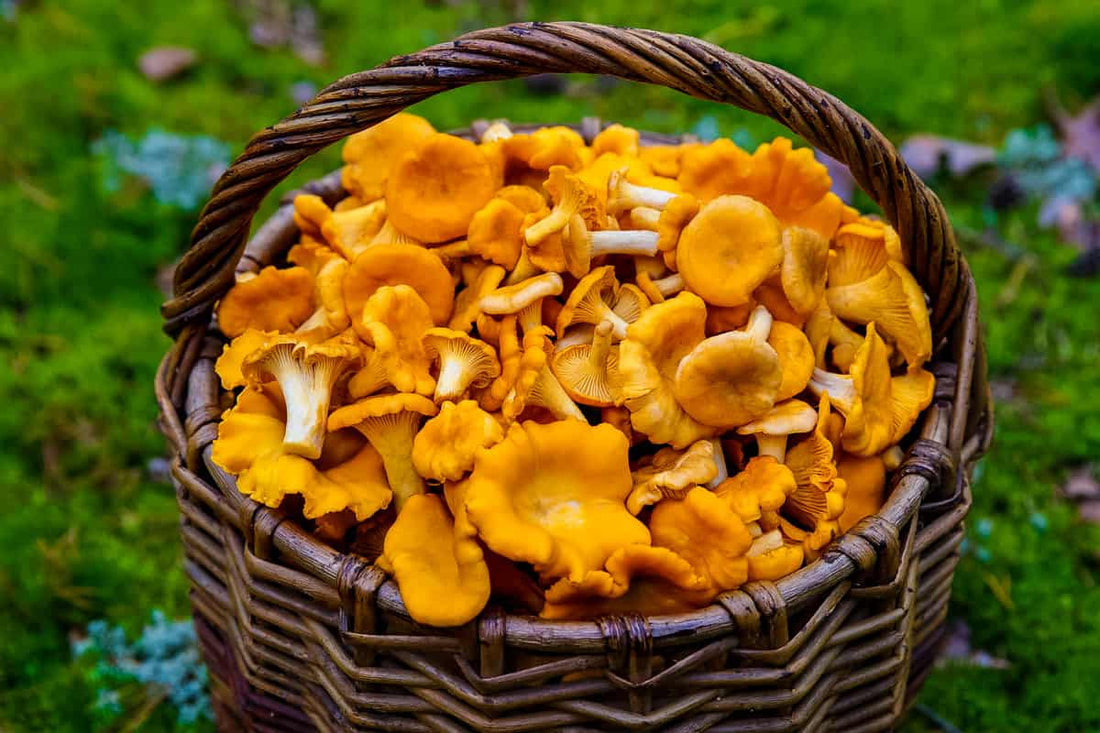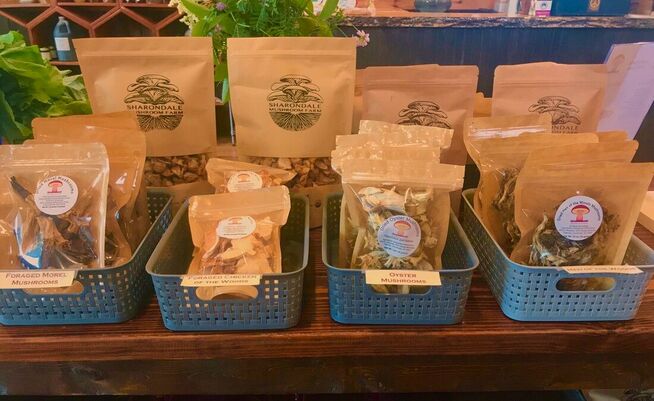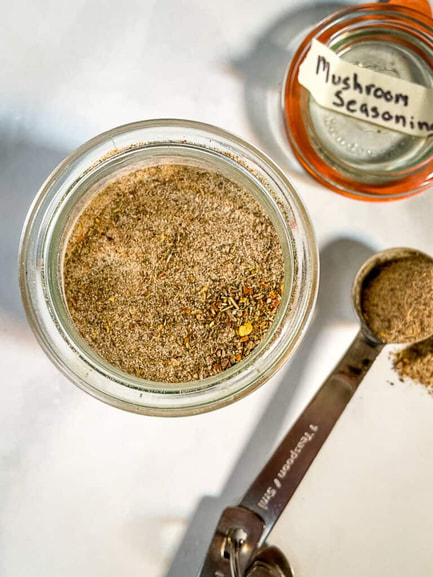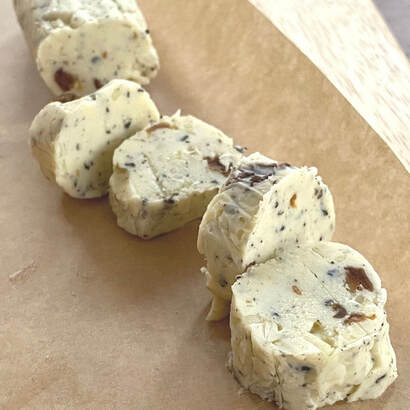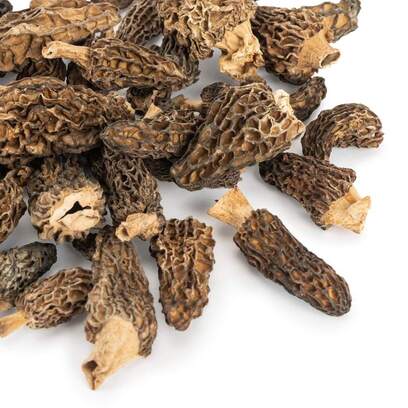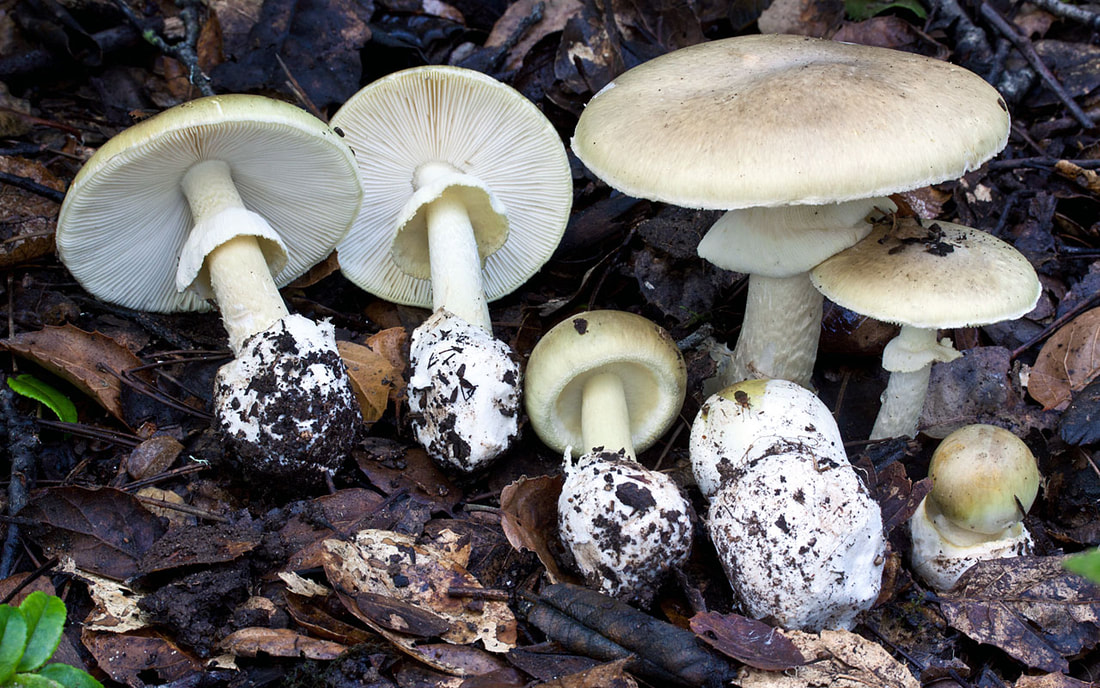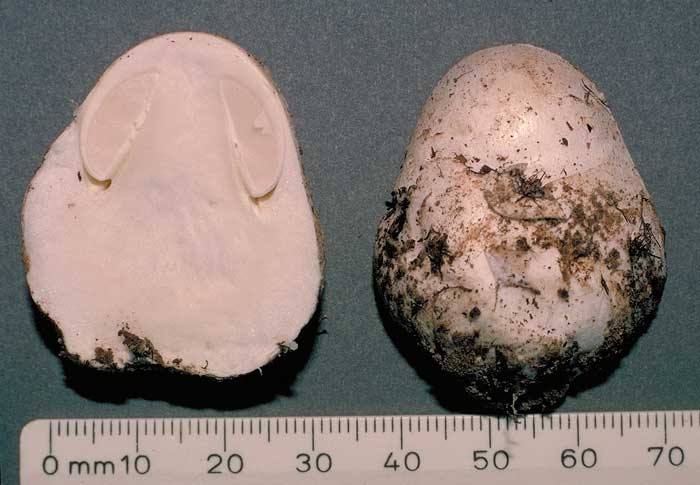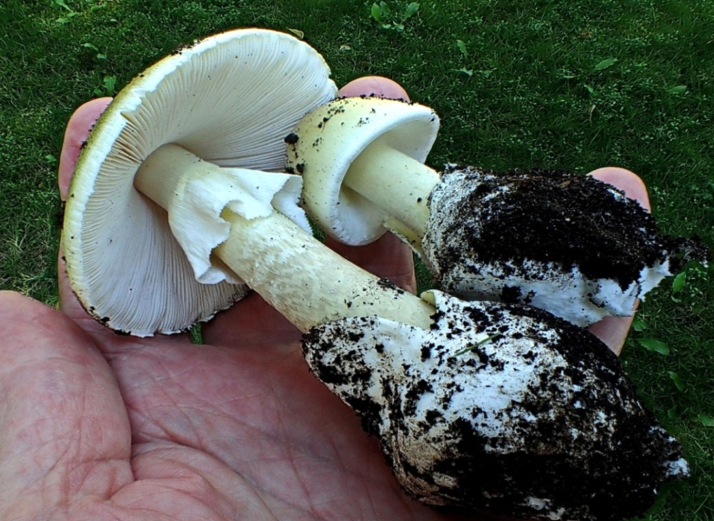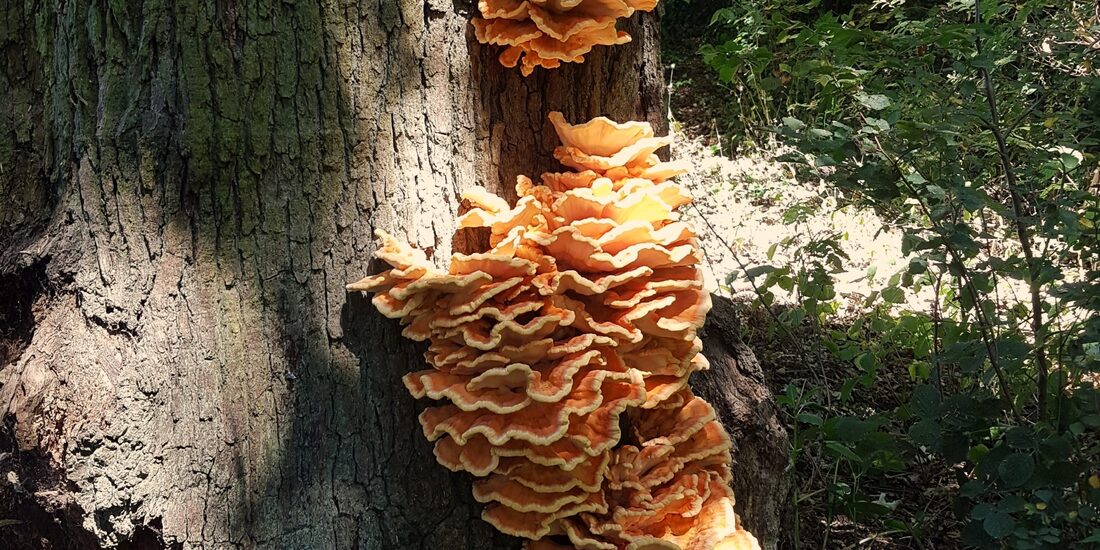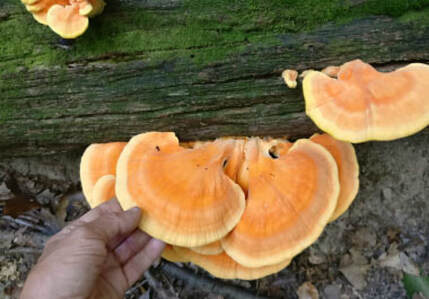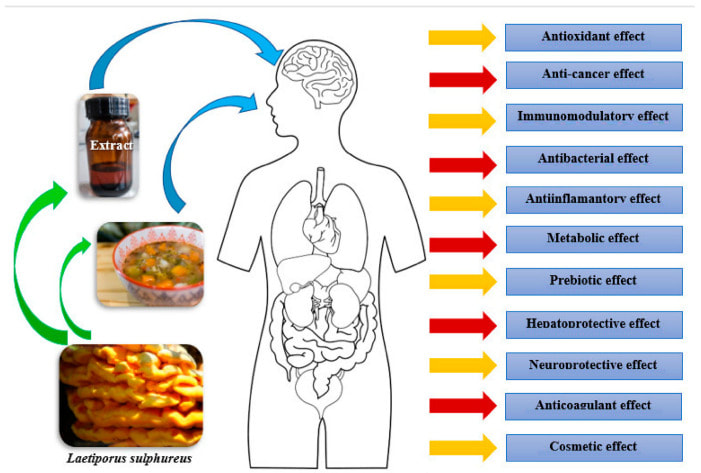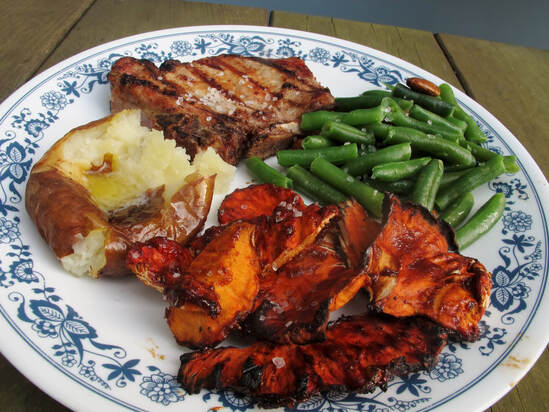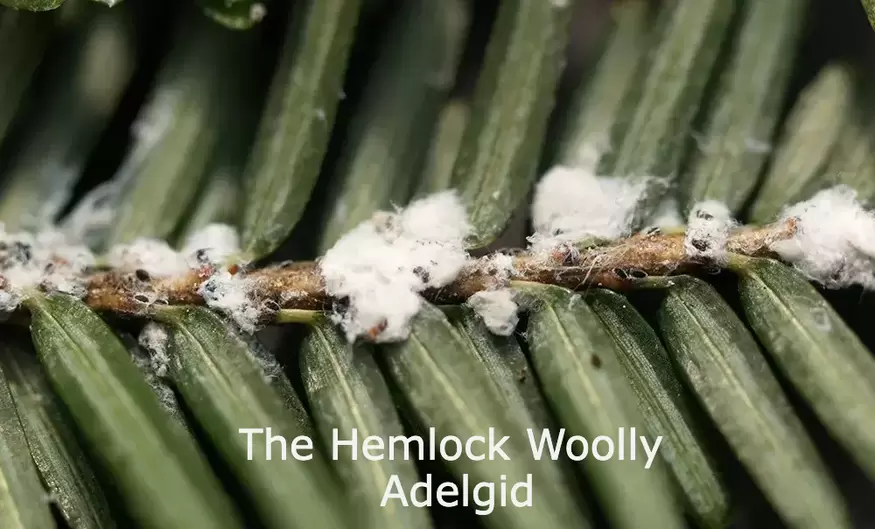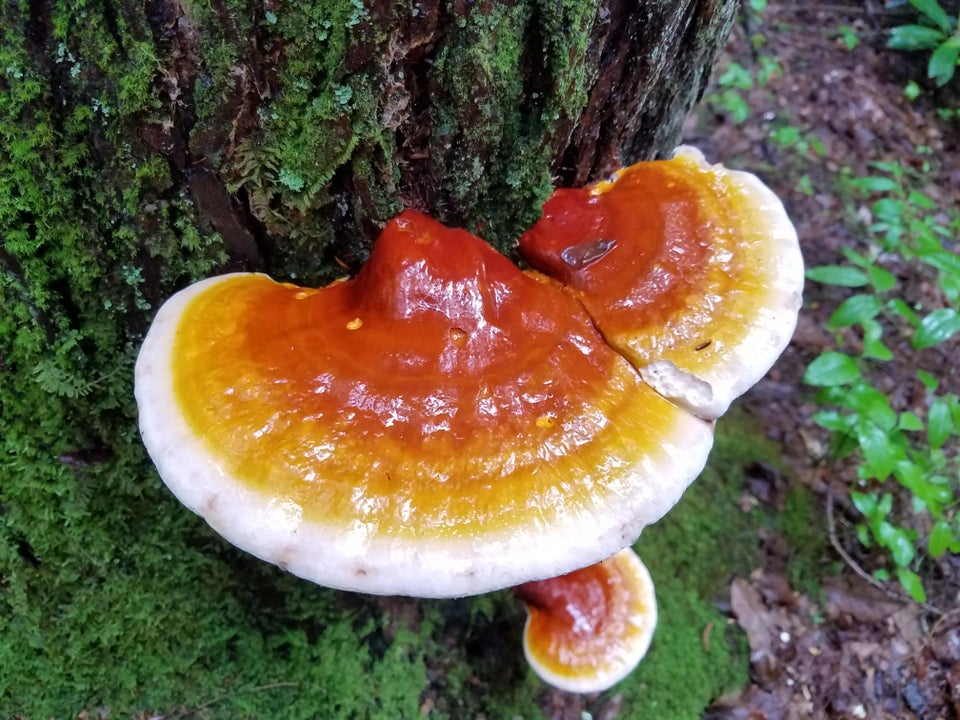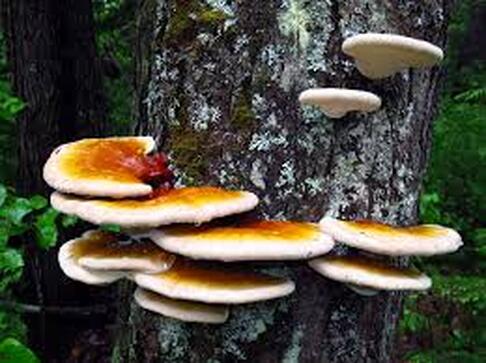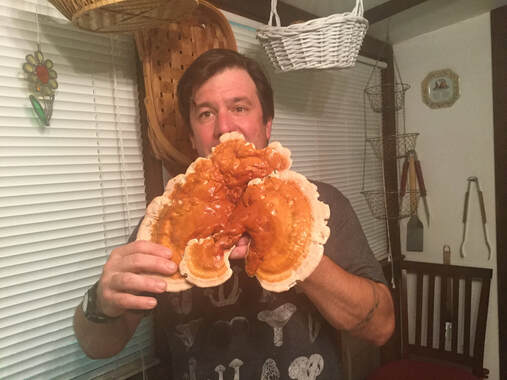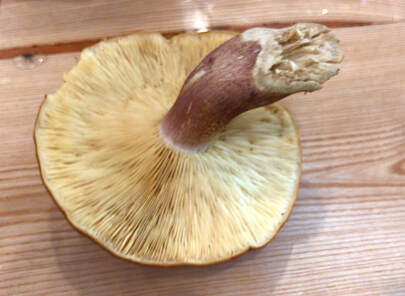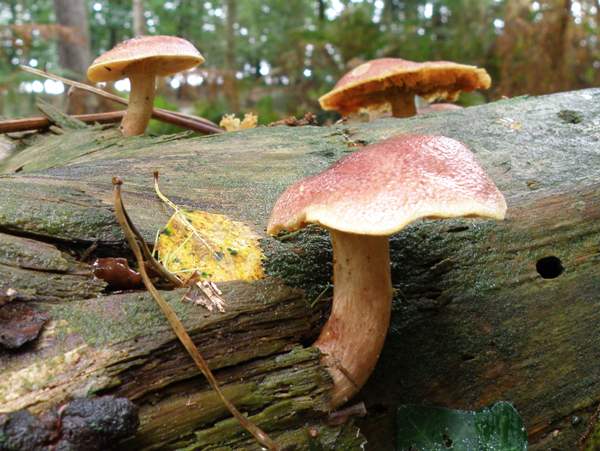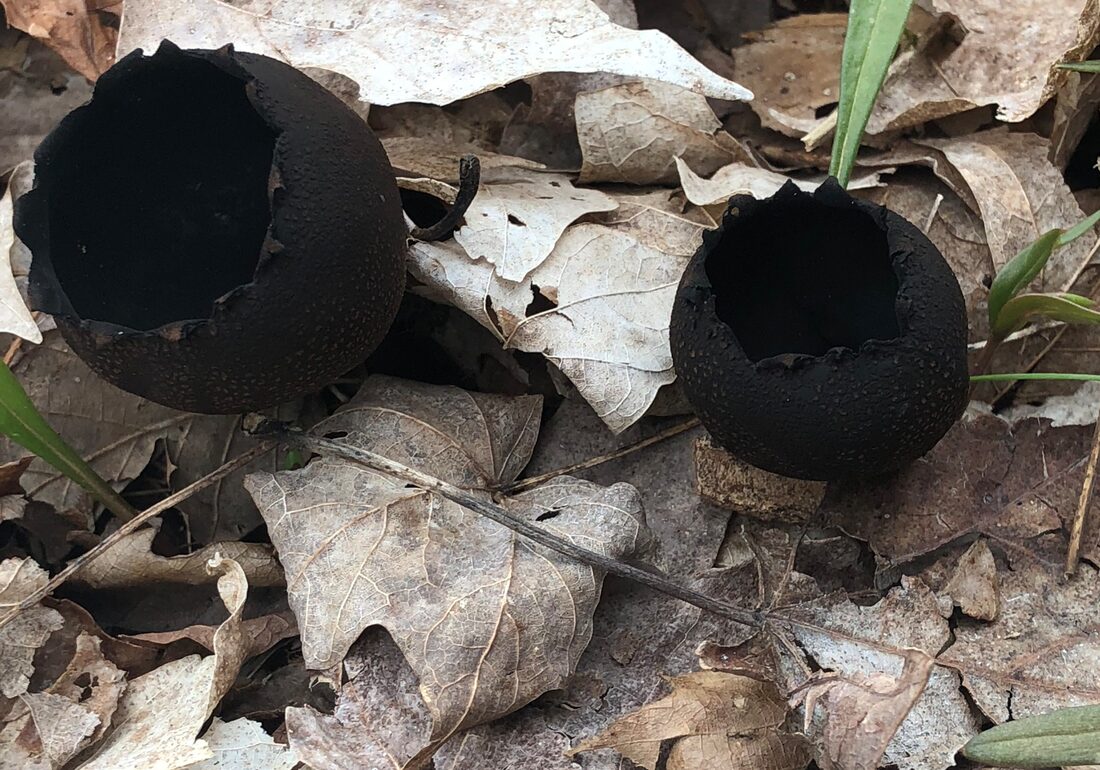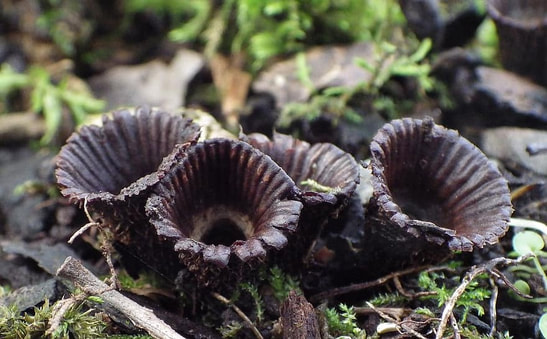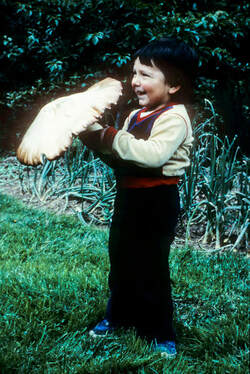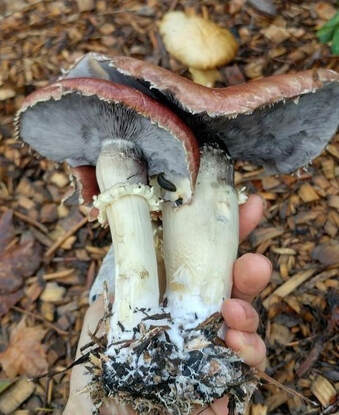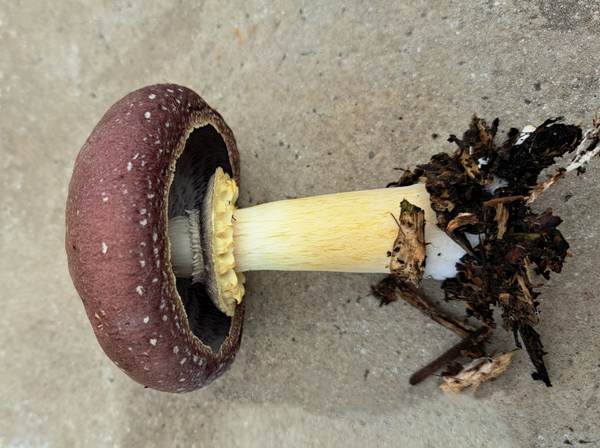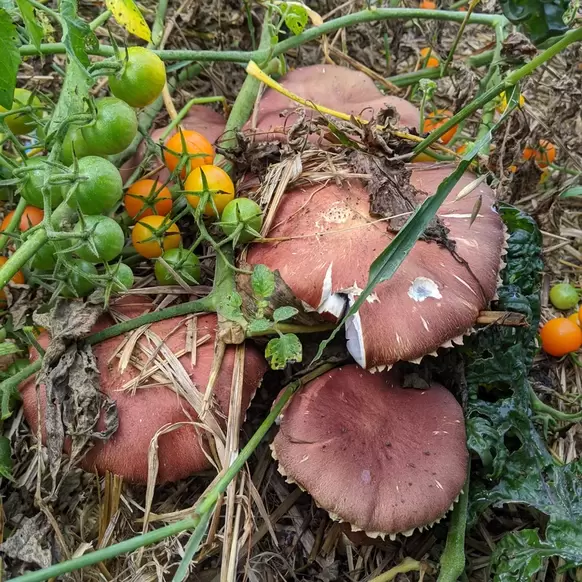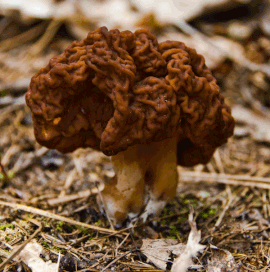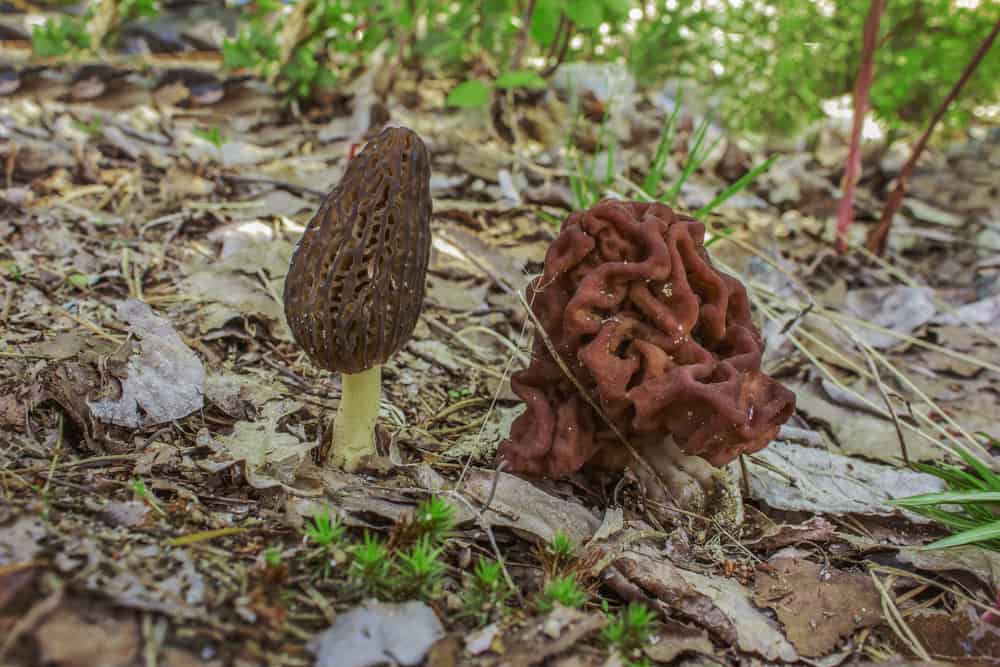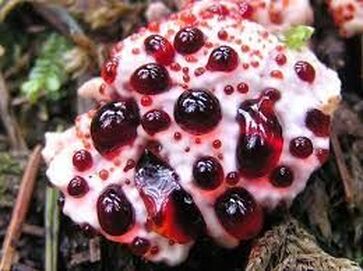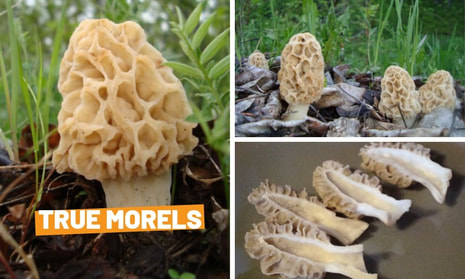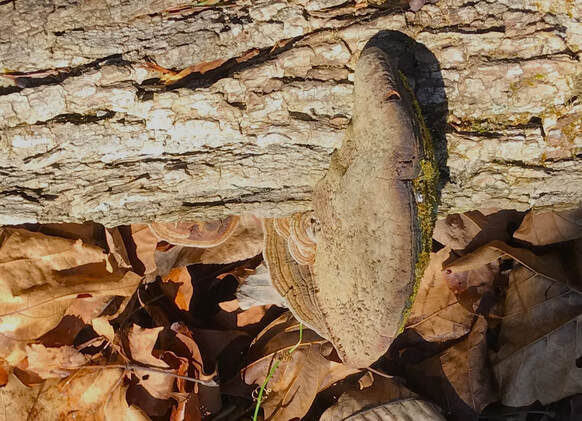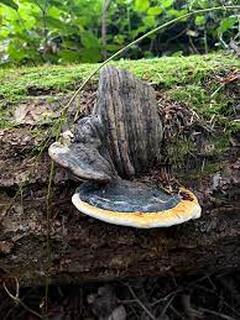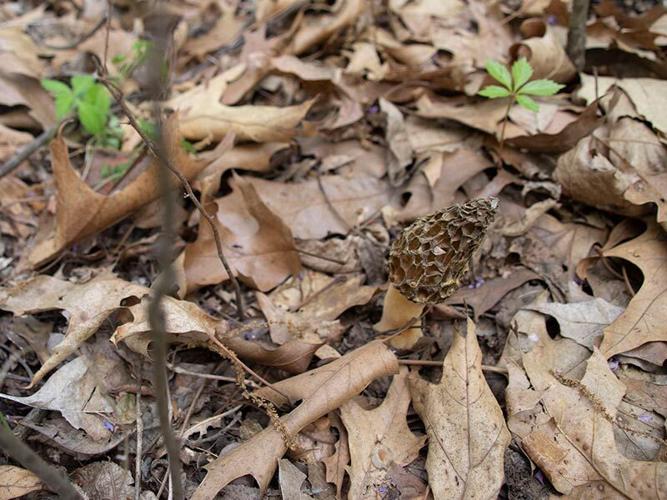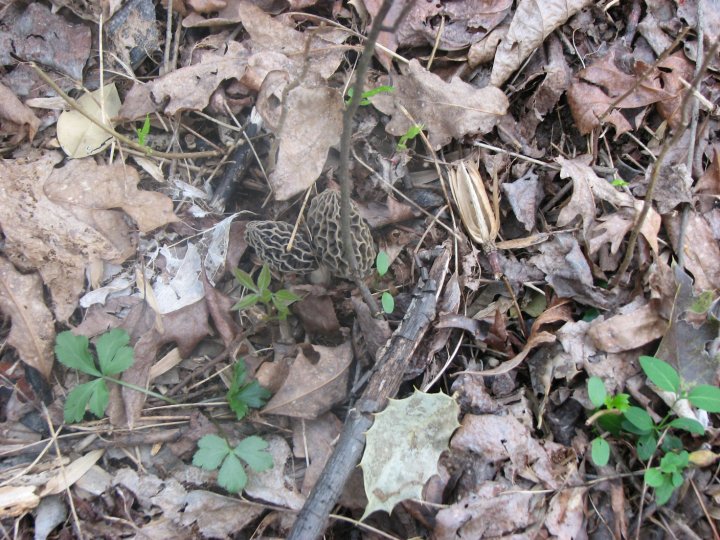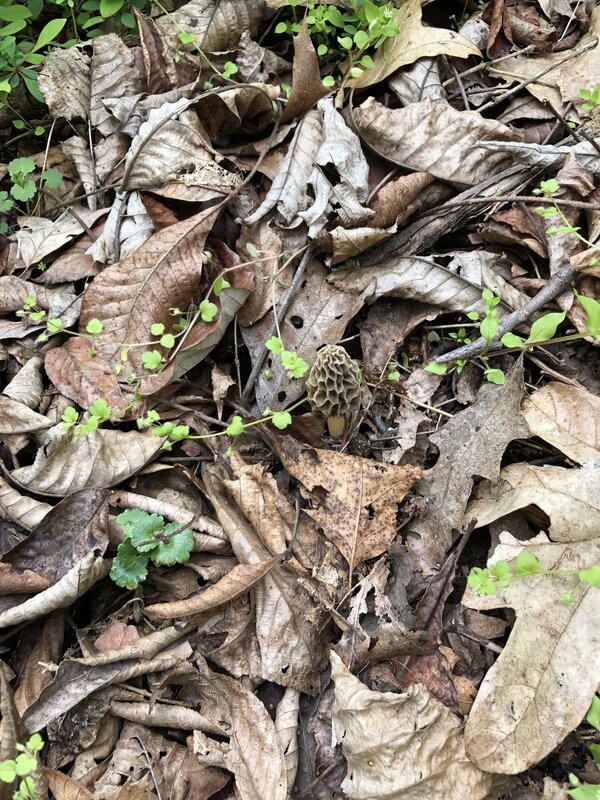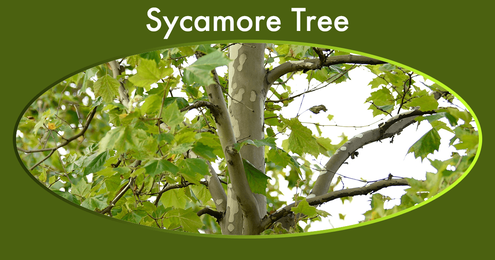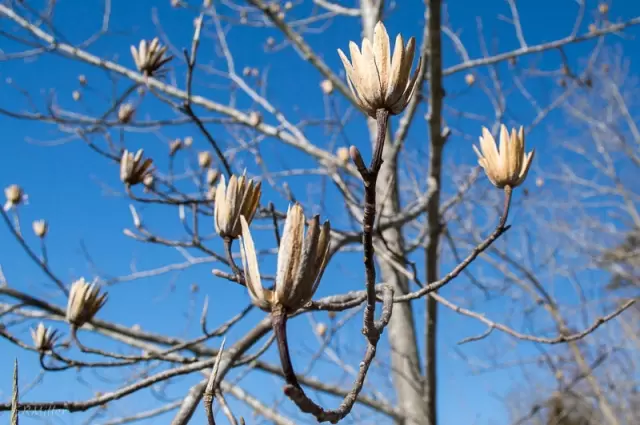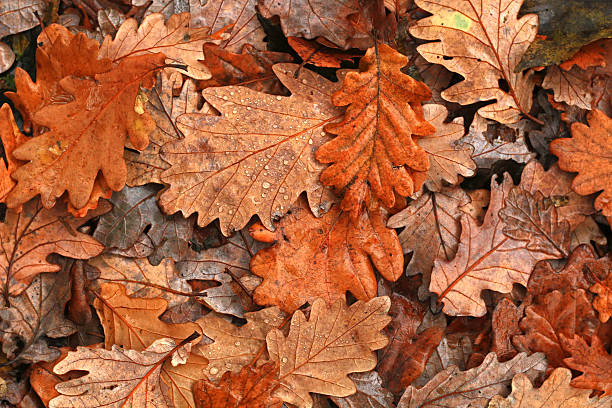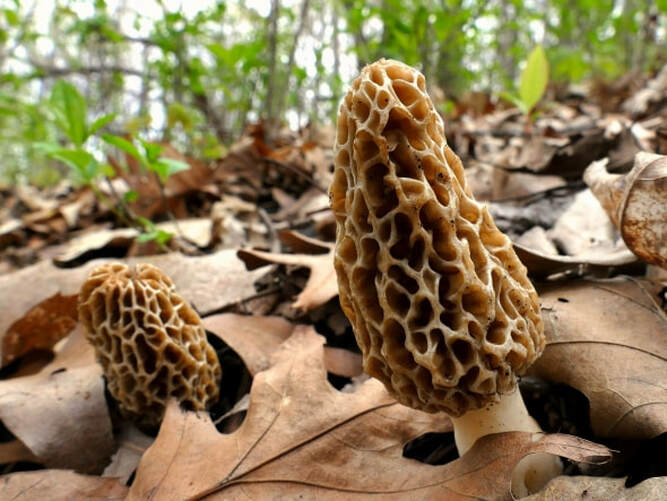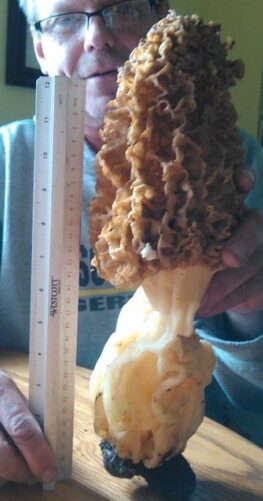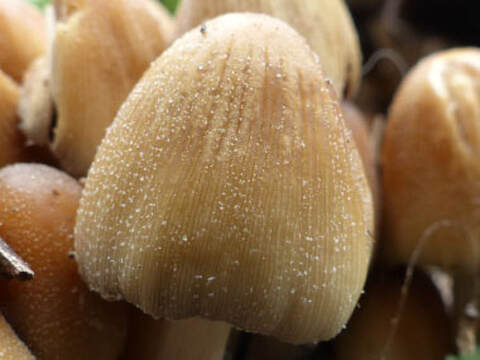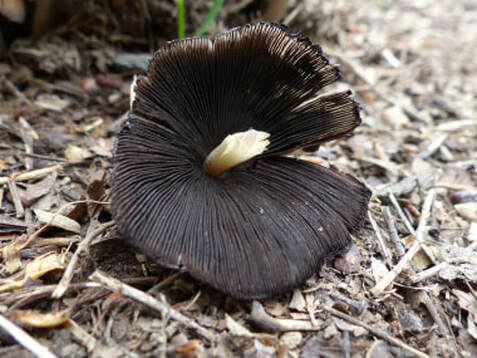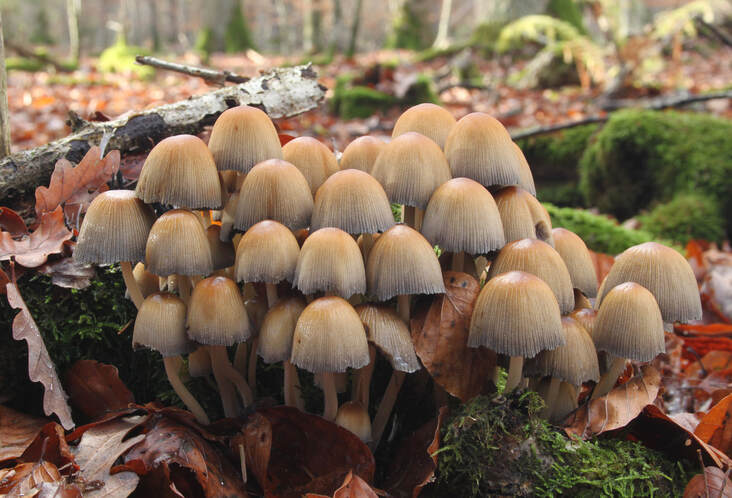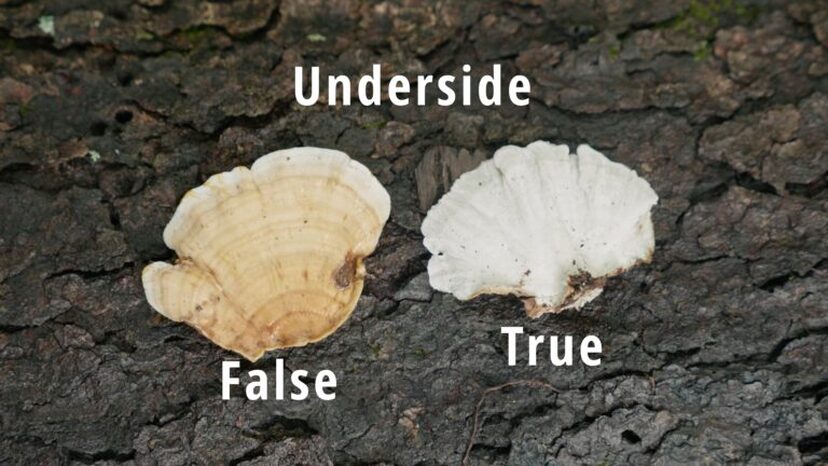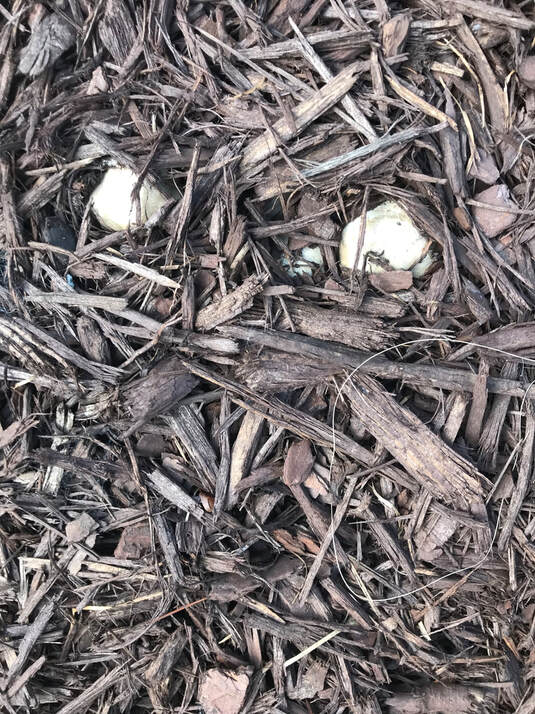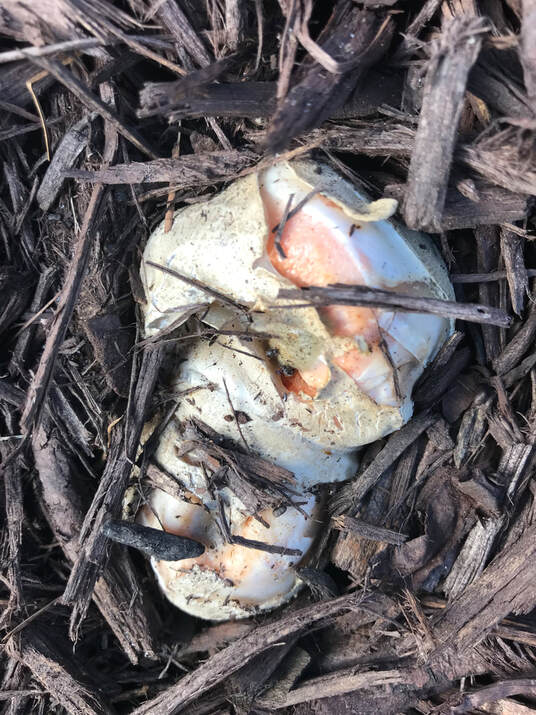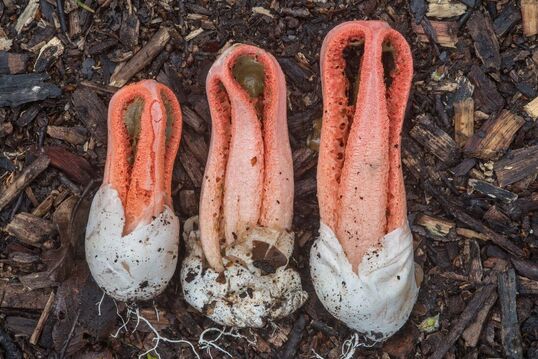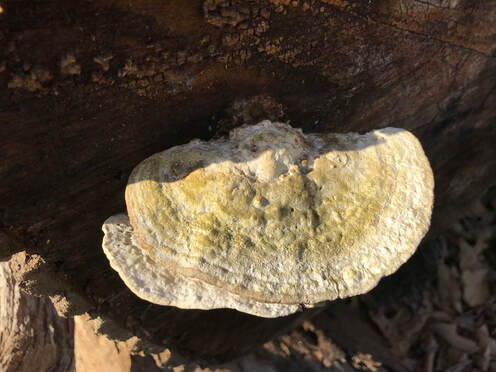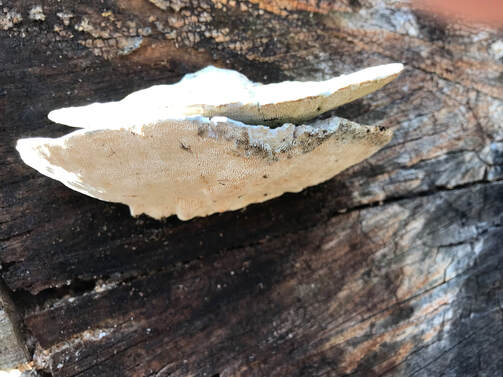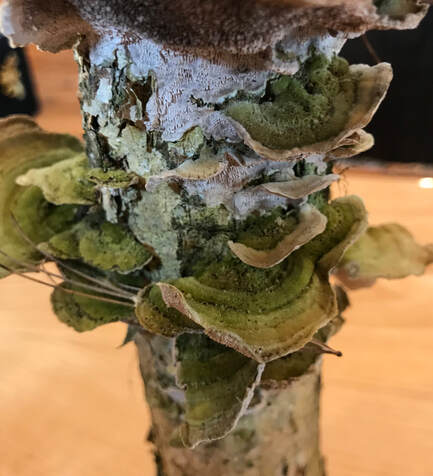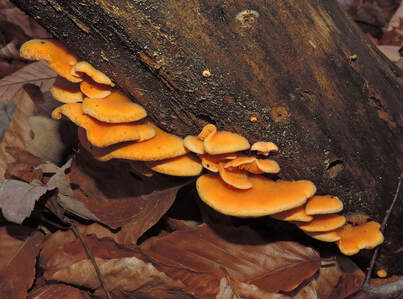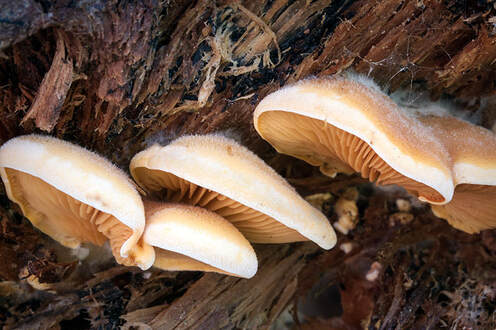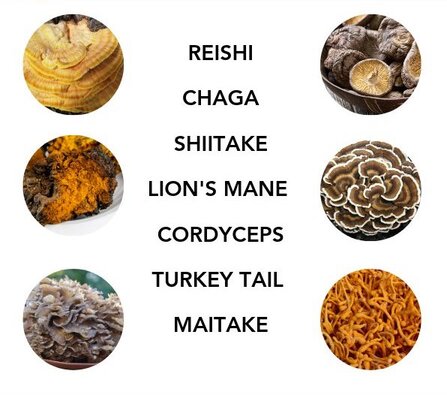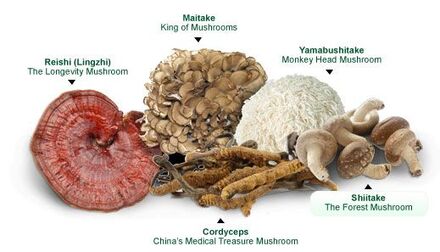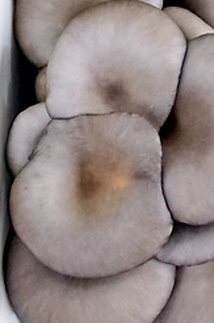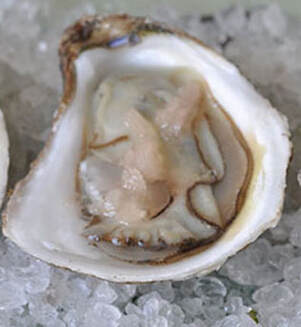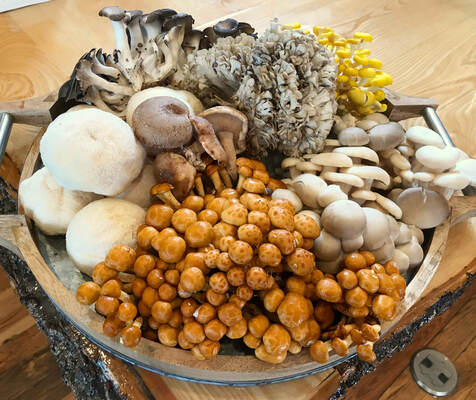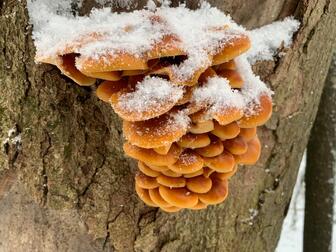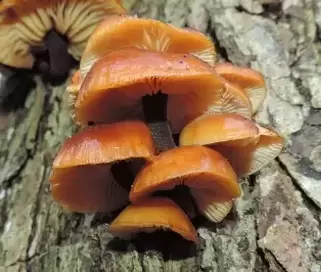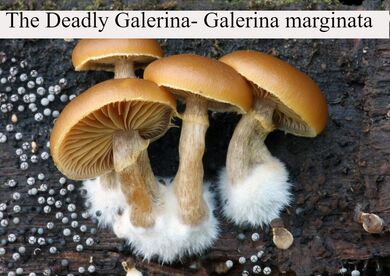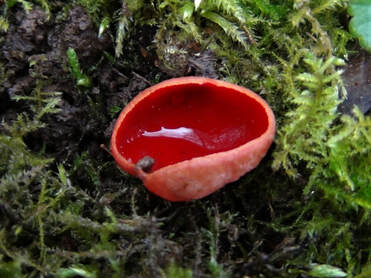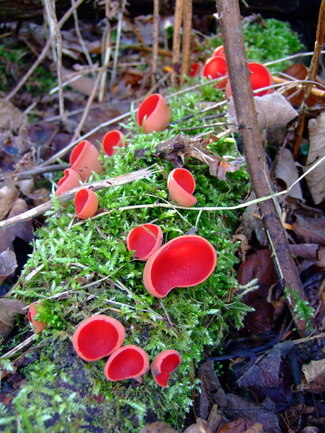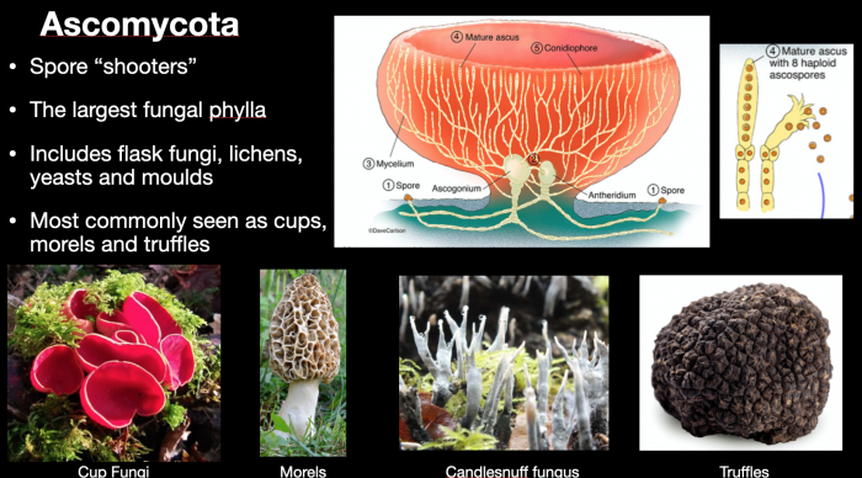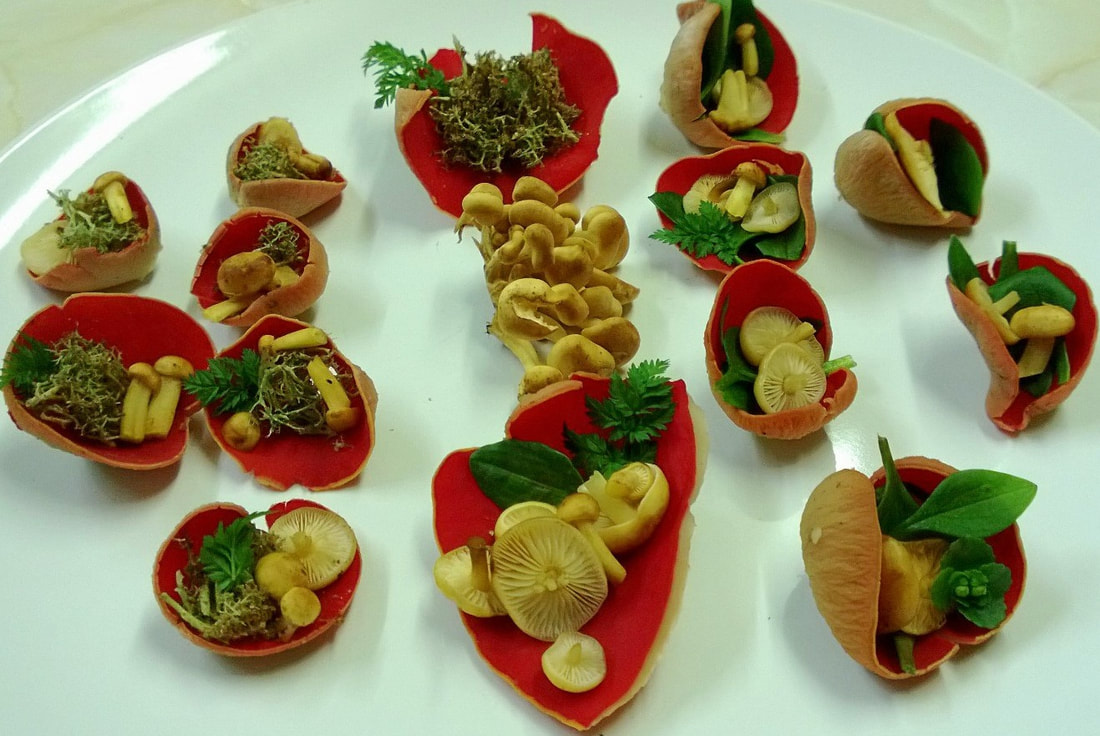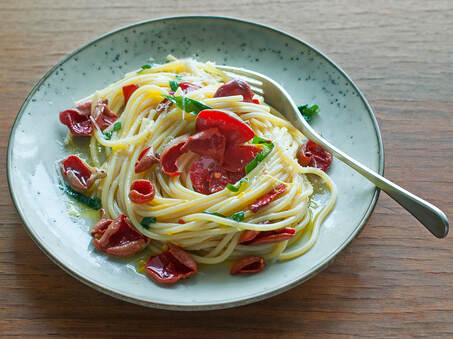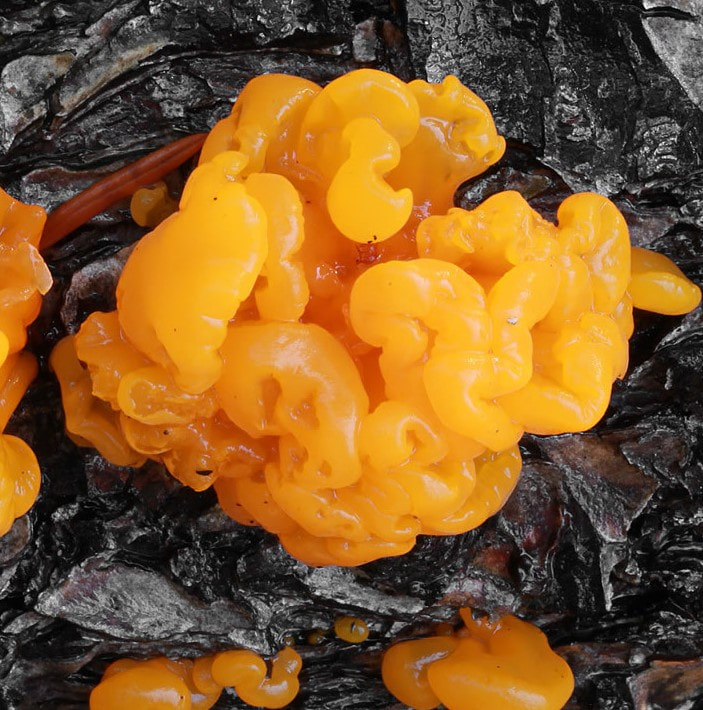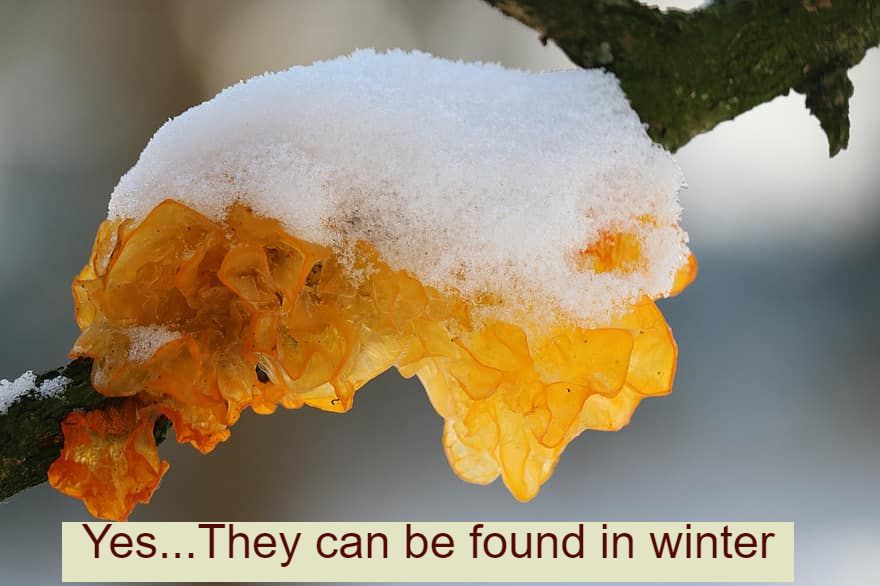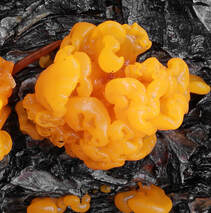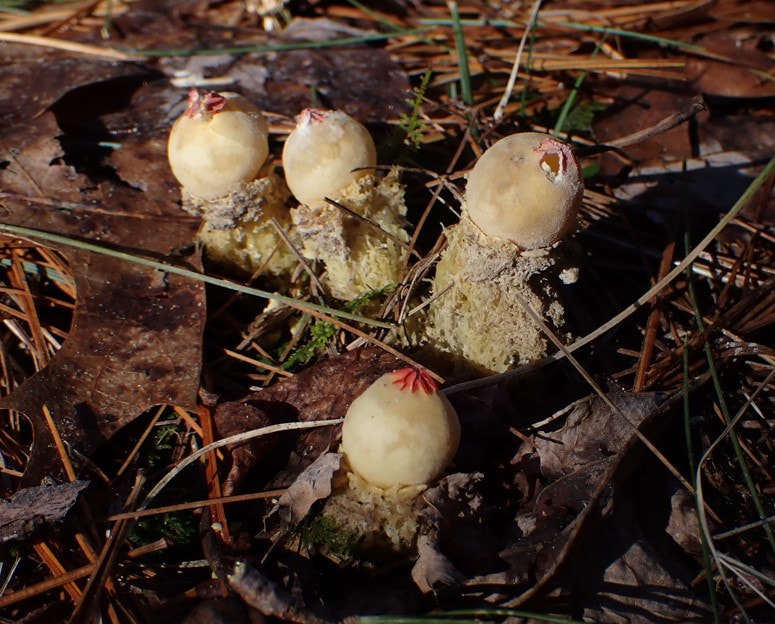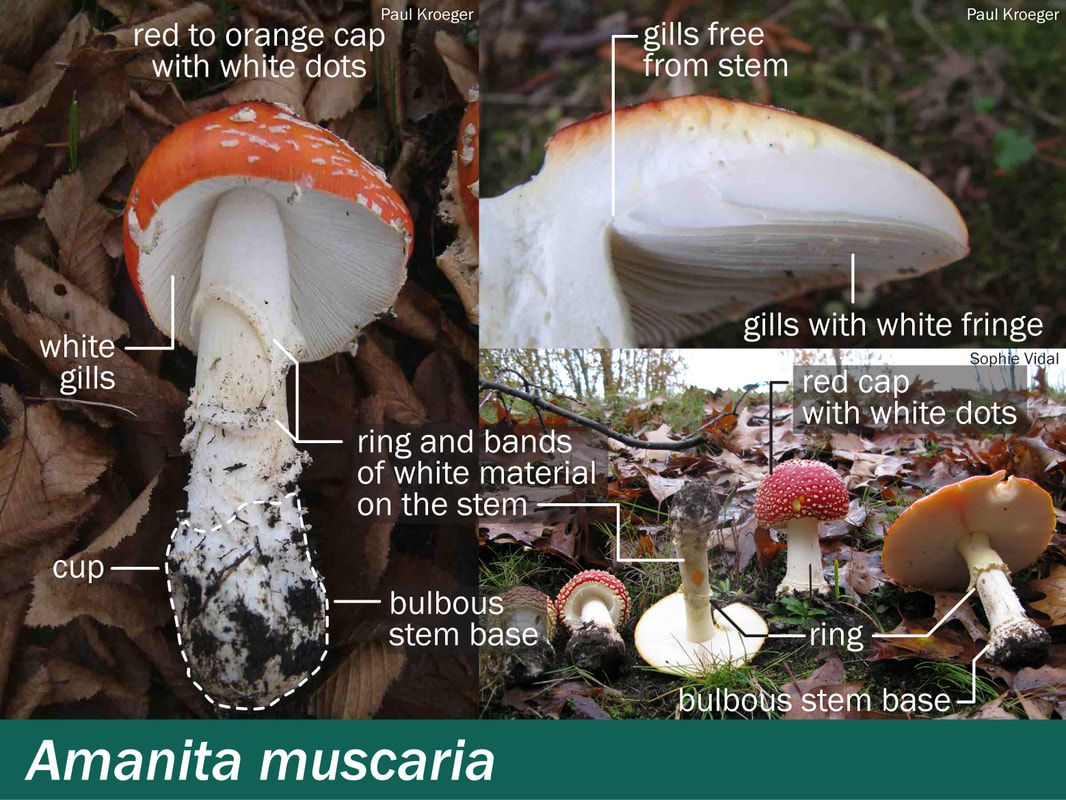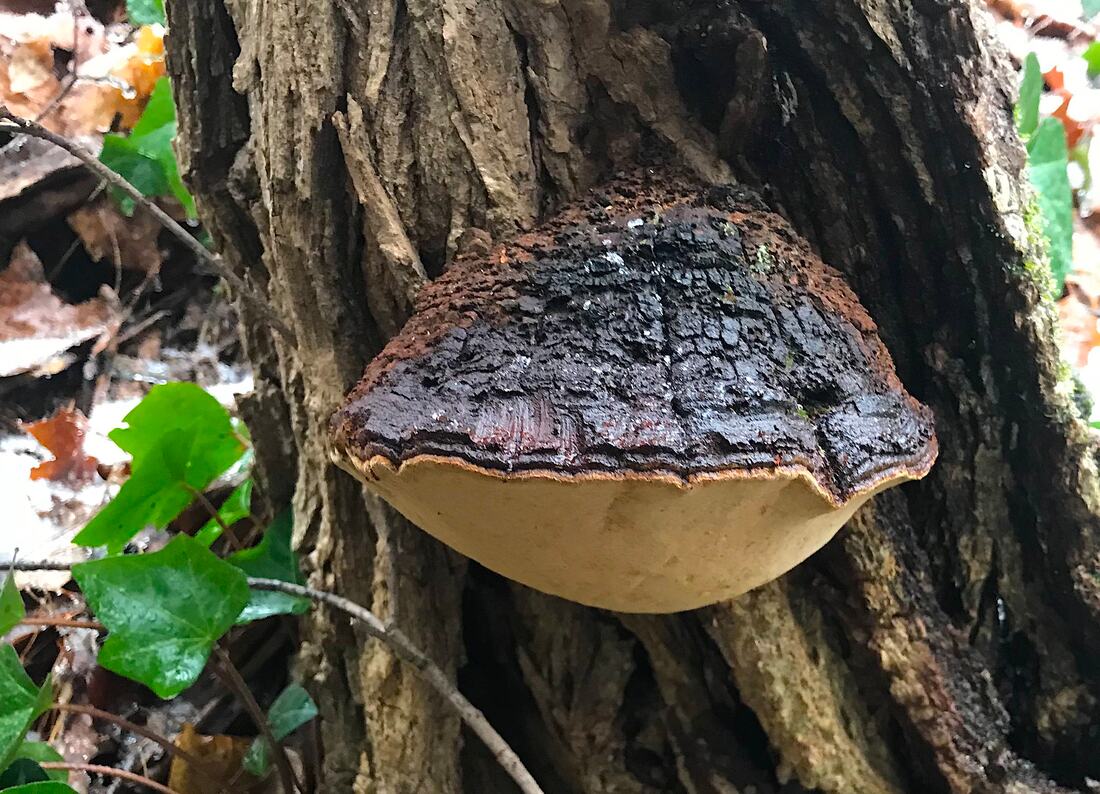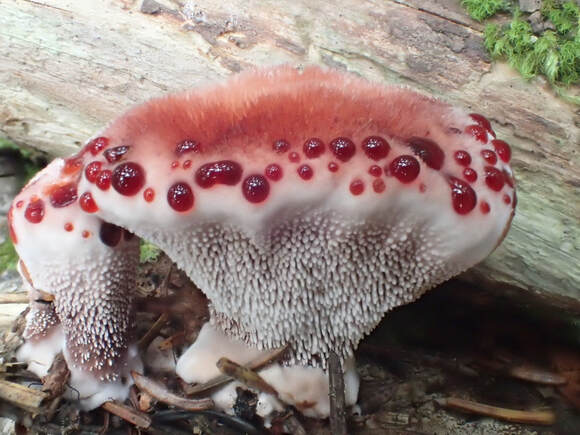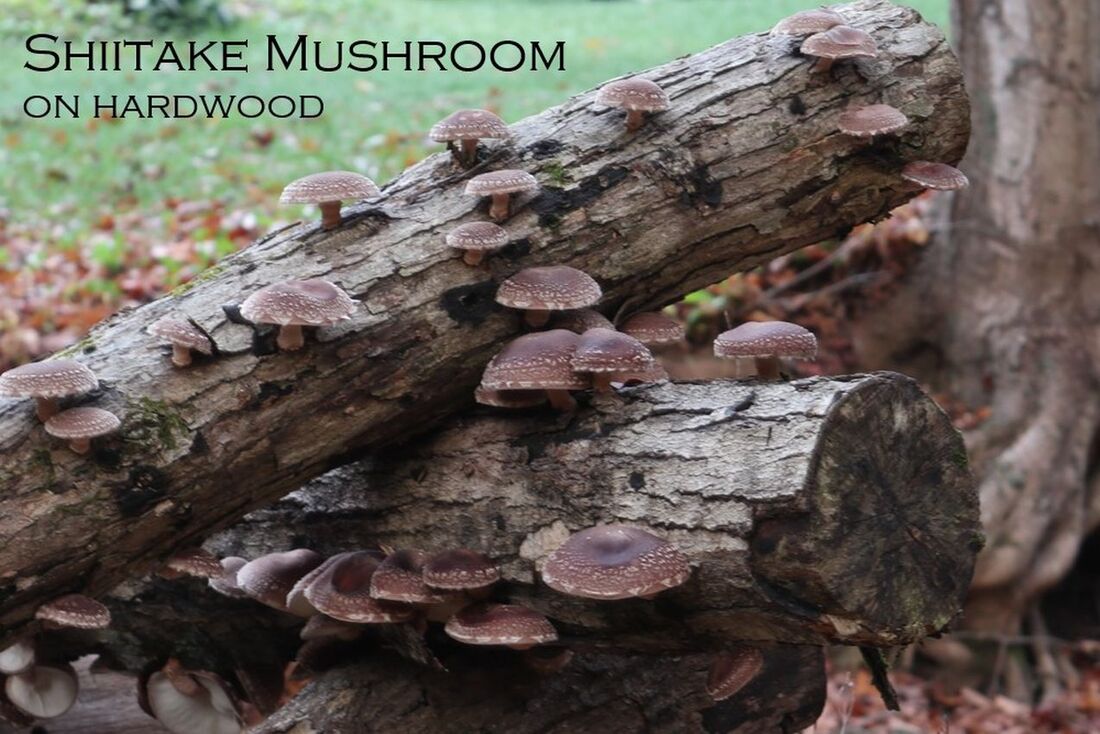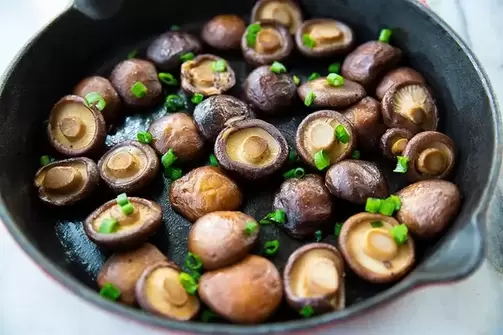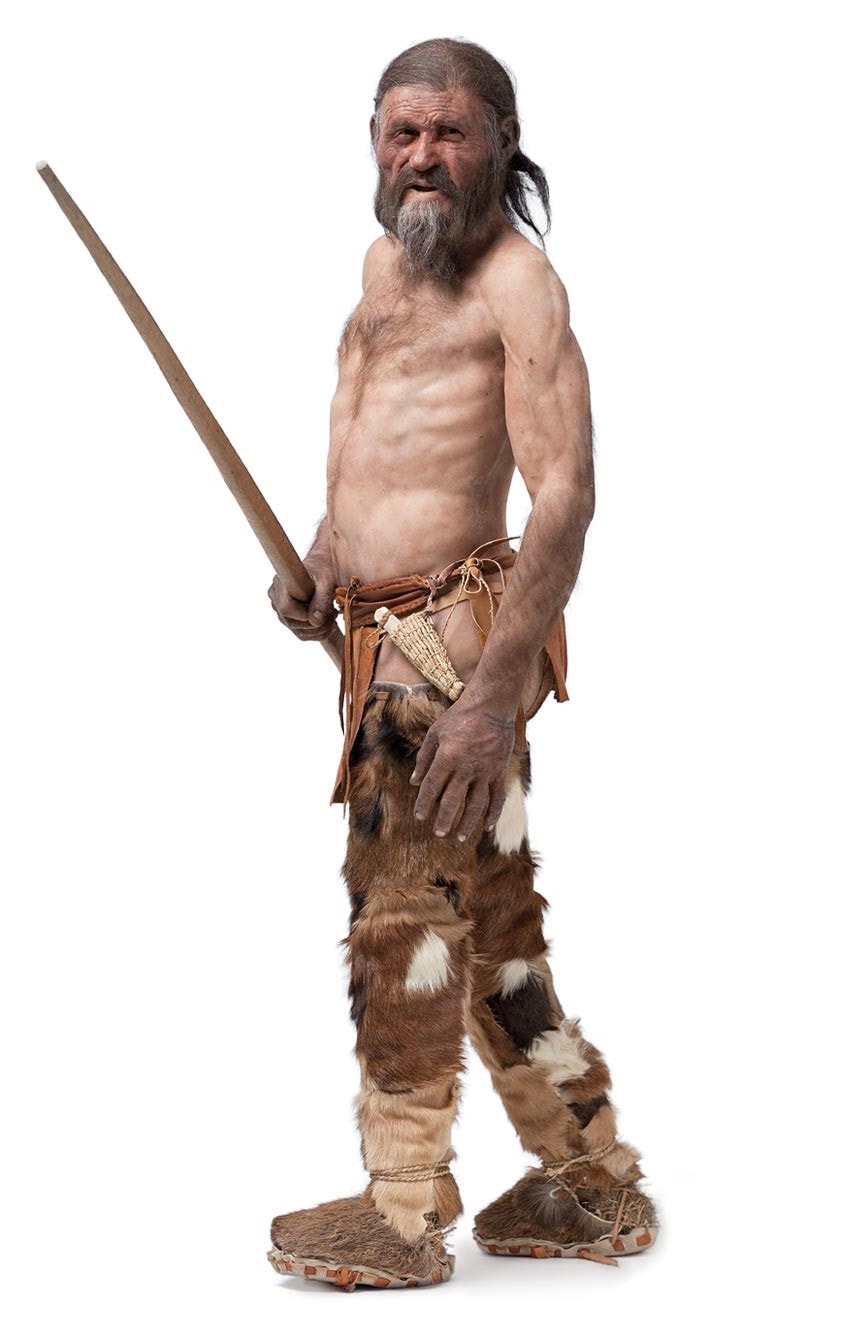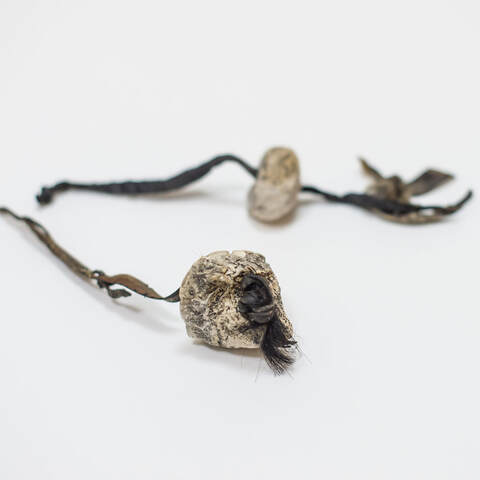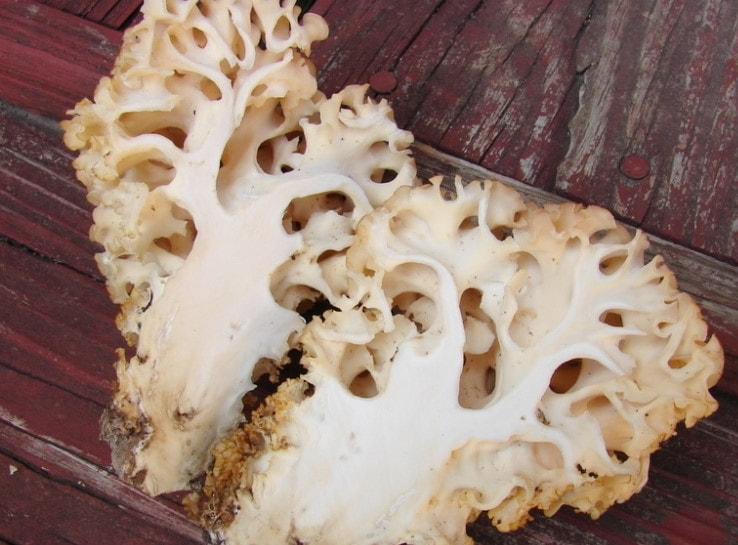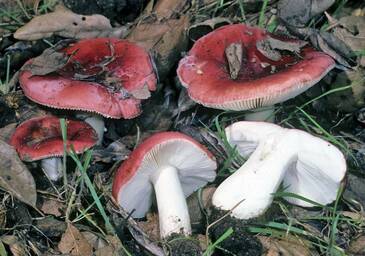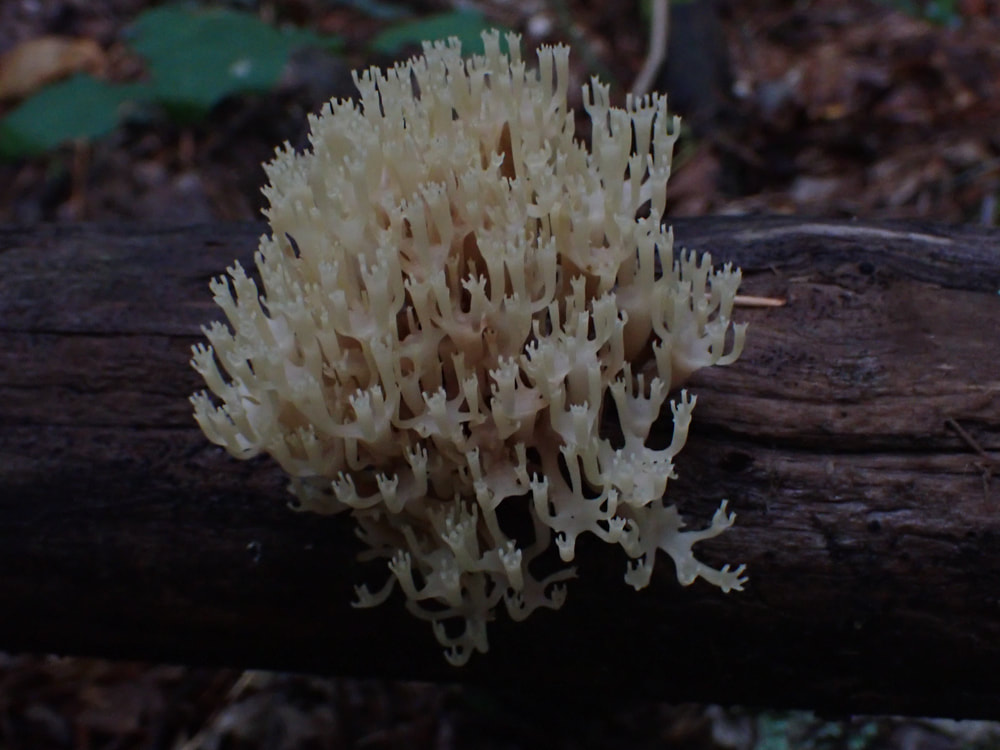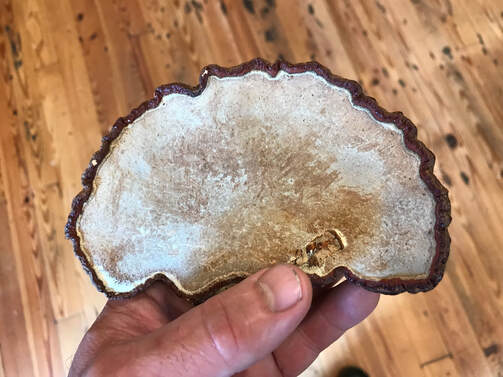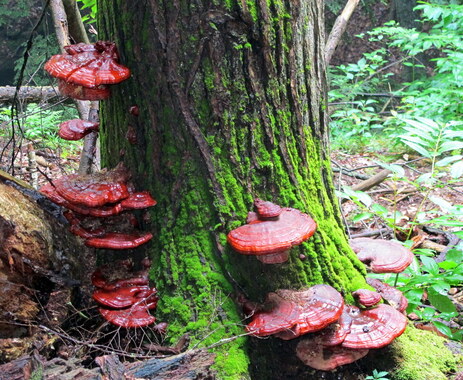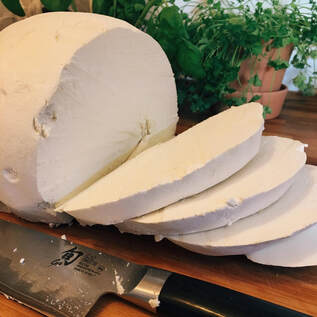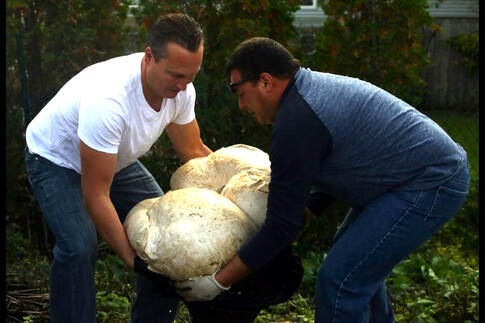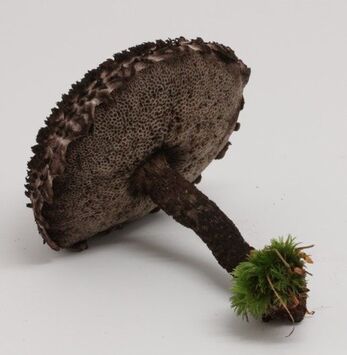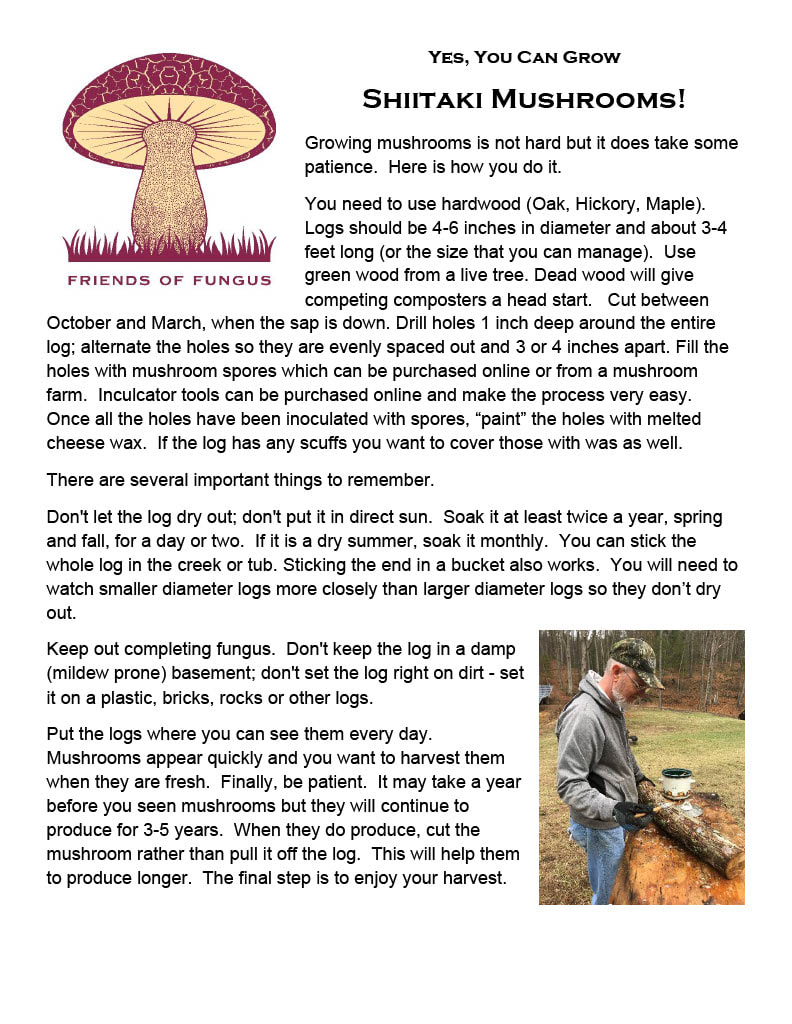The Fungus Among Us
Black Trumpet
Black Trumpet mushrooms (Craterellus fallax), also known as horn of plenty or trumpet of the dead, are choice edible wild mushrooms with a rich, smoky flavor.
In the Shenandoah Valley, they typically appear from mid-July through September, especially after steady rains like we've been having. These elusive mushrooms thrive in moist, mossy hardwood forests, often near oaks and beech trees. They favor north-facing slopes and can be found growing in clusters, sometimes tucked into leaf litter or moss, making them easy to overlook.
In the Shenandoah Valley, they typically appear from mid-July through September, especially after steady rains like we've been having. These elusive mushrooms thrive in moist, mossy hardwood forests, often near oaks and beech trees. They favor north-facing slopes and can be found growing in clusters, sometimes tucked into leaf litter or moss, making them easy to overlook.
Identifying Black Trumpets involves looking for their distinctive hollow, vase-like, trumpet shaped bodies. They are usually colored charcoal to black on the outside and paler grayish-brown on the inner surface. The undersides are smooth or lightly wrinkled.
Although they look unassuming, they pack a punch in the kitchen, concentrating flavor when dried! They have mycorrhizal relationships with trees, forming essential connections underground.
As with all mushrooms, do not eat them unless you are 100% positive of your identification.
If you're lucky enough to find some, you can bring them to
The Necessary Mercantile
and we'll help you with a positive identification.
Although they look unassuming, they pack a punch in the kitchen, concentrating flavor when dried! They have mycorrhizal relationships with trees, forming essential connections underground.
As with all mushrooms, do not eat them unless you are 100% positive of your identification.
If you're lucky enough to find some, you can bring them to
The Necessary Mercantile
and we'll help you with a positive identification.
Previous Fungi
Dryad's Saddle
The Dryad's Saddle mushroom, also known as the Pheasant Back mushroom (Cerioporus squamosus),
is a striking and widespread wild fungus. It gets its common name from the pattern on its cap, which resembles the mottled feathers of a pheasant, and from the mythological image of a dryad riding it like a saddle. These mushrooms are commonly found east of the Rocky Mountains in North America from April through October, and they also grow widely across Europe (July–November), as well as parts of Asia and Australia.
In the Appalachian region, Dryad's Saddle most often fruits in the spring, occasionally making a reappearance in autumn. It grows primarily on dead or dying hardwood trees, especially elm, box elder, and silver maple. Foragers often come across them while searching for morels, as their fruiting seasons overlap. Unlike the elusive morel, Dryad’s Saddle is easy to spot due to its size, distinctive scale-like markings, and fan-shaped caps.
is a striking and widespread wild fungus. It gets its common name from the pattern on its cap, which resembles the mottled feathers of a pheasant, and from the mythological image of a dryad riding it like a saddle. These mushrooms are commonly found east of the Rocky Mountains in North America from April through October, and they also grow widely across Europe (July–November), as well as parts of Asia and Australia.
In the Appalachian region, Dryad's Saddle most often fruits in the spring, occasionally making a reappearance in autumn. It grows primarily on dead or dying hardwood trees, especially elm, box elder, and silver maple. Foragers often come across them while searching for morels, as their fruiting seasons overlap. Unlike the elusive morel, Dryad’s Saddle is easy to spot due to its size, distinctive scale-like markings, and fan-shaped caps.
Mature specimens can grow impressively large. They quickly become tough and woody as they age.
For culinary use, young, tender specimens are preferred. When harvested at the right time,
they offer a crisp texture and a mild, cucumber- or watermelon rind-like scent.
Opinions on the flavor of Dryad’s Saddle vary, ranging from "unremarkable" to "choice edible," depending on the age of the specimen and the method of preparation. One of the most popular ways to enjoy them is pan-fried. For a crispier and more flavorful dish, consider slicing them thin and preparing them with a light tempura batter. This simple upgrade brings out their delicate flavor and makes for an eye-catching appetizer or side dish.
Best of all, Dryad's Saddle is considered a safe mushroom for beginners. There are virtually no dangerous lookalikes, and its unique appearance makes it relatively foolproof to identify.
If you would like to see a dehydrated Dryad's Saddle, stop in to
The Necessary Mercantile.
For culinary use, young, tender specimens are preferred. When harvested at the right time,
they offer a crisp texture and a mild, cucumber- or watermelon rind-like scent.
Opinions on the flavor of Dryad’s Saddle vary, ranging from "unremarkable" to "choice edible," depending on the age of the specimen and the method of preparation. One of the most popular ways to enjoy them is pan-fried. For a crispier and more flavorful dish, consider slicing them thin and preparing them with a light tempura batter. This simple upgrade brings out their delicate flavor and makes for an eye-catching appetizer or side dish.
Best of all, Dryad's Saddle is considered a safe mushroom for beginners. There are virtually no dangerous lookalikes, and its unique appearance makes it relatively foolproof to identify.
If you would like to see a dehydrated Dryad's Saddle, stop in to
The Necessary Mercantile.
The pear-shaped puffball
Apioperdon pyriforme, commonly known as the pear-shaped puffball, is a small to medium-sized fungus with a distinctive pear-like shape. Its fruiting body ranges from .75 to 2.5 inches in diameter and 1 to 2.75 inches in height, tapering to a narrow base connected to a mass of white mycelial threads. The outer surface starts off smooth and pale brown or cream-colored but becomes darker and rougher with age, eventually cracking to reveal a papery outer layer. The interior is initially white and firm, turning olive-brown and spongy as the spores mature. When fully developed, a small opening forms at the top, releasing a cloud of brown spores when disturbed, especially in dry conditions.
This puffball often grows in clusters on decaying wood, logs, or stumps, particularly in moist, shaded forest areas. These mushrooms fruit during autumn months in our region.
This puffball often grows in clusters on decaying wood, logs, or stumps, particularly in moist, shaded forest areas. These mushrooms fruit during autumn months in our region.
This mushroom is edible when young and the interior is completely white.
The pear-shaped puffball is a reminder of the diverse and often hidden roles fungi play in forest ecosystems. Whether you're foraging or simply observing, these little puffballs are a delightful discovery that highlights nature’s ongoing cycle of growth and decay.
The Shaggy Stalked bolete
August is an exciting time of year in our region. A variety of mushrooms are being found in the forest right now. Today someone brought Aureoboletus betula or Shaggy Stalked Bolete mushrooms to the Necessary Mercantile. These are choice edible mushrooms and are easy to identify. The cap/pileus ranges from yellow to very red. The stalk/stipe is unusually long and lacy like an elongated honeycomb. The pores are yellow and turn greenish yellow when old. Flesh green-yellow or orange-yellow.
Shaggy stalked boletes are mycorrhizal and can be found growing on the forest floor beneath hardwoods and pines, especially in mixed pine-oak woods. They can be found growing alone or scattered from summer to fall, and are more common in the southern Appalachian Mountains, but can also be found in Michigan, Pennsylvania, and the southeastern United States.
If you love fungi and want to celebrate, come to The Enchanted Mushroom Festival, Saturday, October 5th, 10AM-5PM in downtown Churchville, VA. For more info: www.EnchantedMushrooms.org
If you love fungi and want to celebrate, come to The Enchanted Mushroom Festival, Saturday, October 5th, 10AM-5PM in downtown Churchville, VA. For more info: www.EnchantedMushrooms.org
The king bolete
Boletus edulis or King Bolete mushrooms are one of the most esteemed edible mushrooms in the world. In England, they are known as Penny Buns. In Italy, they are called Porcini (translation, "little pig"). France refers this these fungal fruits Cèpes. No matter what you call them, they are one of the most prized mushrooms by chefs and gourmonds.
King Boletes can grow in Virginia but are not very common. The peak fruiting time in the Shenandoah Valley region is from July to October. These mushrooms have a convex brown cap and white to cream colored stipe/stem. The stipe can be club shaped to bulbous.
The reproductive surface is pores and the spore print is olive brown.
These mushrooms are mycorrhizal with a variety of trees. They normally partner with Pine, Spruce, Hemlock and Fir but can also be hosted by Chinquapin, Chestnut, Beech, and Oak.
If you're unable to find these culinary delights growing in the forest, fear not.
You can find dehydrated Porcinis at
THE NECESSARY MERCANTILE.
Remember that dehydrating mushrooms concentrates the flavor, so a little goes a long way.
As always, we remind you to never eat a mushroom unless 100% sure of the identification.
Never "munch on a hunch".
These mushrooms are mycorrhizal with a variety of trees. They normally partner with Pine, Spruce, Hemlock and Fir but can also be hosted by Chinquapin, Chestnut, Beech, and Oak.
If you're unable to find these culinary delights growing in the forest, fear not.
You can find dehydrated Porcinis at
THE NECESSARY MERCANTILE.
Remember that dehydrating mushrooms concentrates the flavor, so a little goes a long way.
As always, we remind you to never eat a mushroom unless 100% sure of the identification.
Never "munch on a hunch".
Black Staining Polypore
The Black Staining Polypore (Meripilus sumstinei) is a large (up to 12 inches) mushroom that forms rosette-like clusters. They are broadly fan-shaped and range in color from tan to dark brown.
As the name implies, this mushroom will stain black when bruised or with age. Its reproductive surface consists of white to cream-colored pores on the underside, which also turn black when bruised. This polypore typically grows on the ground at the base of hardwood trees, especially oaks, often on decaying roots or stumps. Other identifying characteristics include its firm yet spongy texture and a strong, earthy odor. The spore print is white.
As the name implies, this mushroom will stain black when bruised or with age. Its reproductive surface consists of white to cream-colored pores on the underside, which also turn black when bruised. This polypore typically grows on the ground at the base of hardwood trees, especially oaks, often on decaying roots or stumps. Other identifying characteristics include its firm yet spongy texture and a strong, earthy odor. The spore print is white.
The Black Staining Polypore is considered a lookalike for Hen of the Woods mushrooms.
It wouldn't be a problem if you made a mistake because they are both edible.
In our region, you can find this mushroom growing May through November with June and July being peak fruiting season.
It wouldn't be a problem if you made a mistake because they are both edible.
In our region, you can find this mushroom growing May through November with June and July being peak fruiting season.
Golden Reishi
Ganoderma curtisii, Golden Reishi is one of the prettiest species of Reishi mushrooms native to our region, this mushroom is glossy like it wears a coat of varnish. The coloring from deep red to orange to yellow/white edges resembles a sunset. The reproductive surface is cream white pores that will bruise if pinched or handled roughly. The spore color is brown.
This mushroom is saprobic and is found growing on dead and dying hardwood trees.
The fungus fruits beginning in early spring and peaks in August in our region.
This mushroom is saprobic and is found growing on dead and dying hardwood trees.
The fungus fruits beginning in early spring and peaks in August in our region.
Ganoderma curtisii is considered inedible because of its texture.
This mushroom has been used for hundreds of years in traditional eastern medicine
for its immune regulating and health-promoting properties.
Scientific studies are now studying this mushroom as a cancer preventative and treatment,
antibiotic, and for blood sugar regulation.
If it is inedible, how can you use this mushroom?
You can use it to make a tincture or an extract.
The simplest way to enjoy this mushroom is to simply slice it and make a tea from it.
You can add honey and herbal teas for a pleasant beverage.
Stop by The Necessary Mercantile this weekend to see one.
This mushroom has been used for hundreds of years in traditional eastern medicine
for its immune regulating and health-promoting properties.
Scientific studies are now studying this mushroom as a cancer preventative and treatment,
antibiotic, and for blood sugar regulation.
If it is inedible, how can you use this mushroom?
You can use it to make a tincture or an extract.
The simplest way to enjoy this mushroom is to simply slice it and make a tea from it.
You can add honey and herbal teas for a pleasant beverage.
Stop by The Necessary Mercantile this weekend to see one.
Xylaria polymorpha, commonly known as dead man's fingers, is a saprobic fungus. It can a distinctive and somewhat eerie appearance resembling fingers. This fungus primarily grows from the bases of rotting or injured hardwood trees, particularly favoring beech and oak. In our region, it fruits from April to November with May being the peak month.
Xylaria polymorpha forms clusters of black, cylindrical, finger-like structures which can range from a few centimeters up to 10 centimeters in length. These fruiting bodies are hard and woody, textured with fine ridges, and although they are predominantly dark, they may start off with a lighter grayish hue before maturing to their characteristic black color.
Xylaria polymorpha is not known to be toxic, but it is not considered edible due to its tough texture.
morels Part 3
The Morel Mushroom (Part 3)
Morchella spp.
We've discussed when and where to find Morel mushrooms.
In this third and final Morel post, we will discuss why you may NOT be finding Morels.
- There may not be any Morels there. Just because you find a pond does not mean that there are fish in it. I have a property with dying Ash trees, Poplars, Sycamores and a couple of old apple trees but have never seen a Morel there. Do recheck areas repeatedly before giving up. Your timing could be off.
- Somebody or something got there before you. Black bears, squirrels, raccoons and other animals enjoy Morels. These critters have the benefit of superior senses of smell and eyesight. If other people are hunting the same spot, it could be that you should have woke up and got out earlier.
- Environmental conditions are not correct. Like every other mushroom, Morels need the right air and soil temperatures, humidity and rainfall. When you do find a Morel, note all of the details so that you can reference them next year.
- You don't have a search image burned into your eyes. You could be looking right at a Morel and not see it. Stare at pictures of Morels or find one in the forest. Study it closely. When you're slowly walking and scanning the ground, block out anything that is not a Morel.
Good luck!
morels Part 2
The Morel Mushroom (Part 2)
Morchella spp.
Last week we focused on when to find the elusive and delicious Morel mushroom. Now we'll cover where to find them. Many mushroom enthusiasts will tell you that they grow wherever they want to. This is true, however some trees will be better bets than others. Tree identification is an important tool when looking for a Morel patch. This can be hard because the leaves aren't generally fully formed by Morel season. The bark of a tree can help with identification.
Sycamores for instance, have a very unique bark.
Tulip Poplars usually have flowers in the canopy at this time of year.
Another way to identify a tree or stand of trees is to look at the dried leaves
that are laying on the ground nearby.
that are laying on the ground nearby.
There are obviously Oak trees nearby.
So where do we look for Morels? Growing around Oaks, Poplars and Sycamores is a good place to look. They are also found around decaying Elm and Ash trees. Morels also like Hickory and apple trees.
We do caution you about hunting Morels in old apple orchards. Fruit growers often use a lot of insecticides. Many of the old insecticides used heavy metals as an active ingredient and those pesticides are persistent in the soil. Mushrooms can bioaccumulate heavy metals to the point of being toxic. Some folks have found Morels in stands of White Pine as well.
In the early part of the season, hunt south facing slopes and other areas where sunlight can warm the soil. Woodland edges can be productive early in the season. As the spring progresses, you can hunt shadier areas and north slopes.
Another area to look is areas where the soil has been disturbed. Clear cuts and burned areas can sometimes produce a boom in Morel growth.
The last advice on where to look for Morel mushrooms is near other Morels. If you've found one, stand still and scan the area because there are most likely more growing nearby.
So where do we look for Morels? Growing around Oaks, Poplars and Sycamores is a good place to look. They are also found around decaying Elm and Ash trees. Morels also like Hickory and apple trees.
We do caution you about hunting Morels in old apple orchards. Fruit growers often use a lot of insecticides. Many of the old insecticides used heavy metals as an active ingredient and those pesticides are persistent in the soil. Mushrooms can bioaccumulate heavy metals to the point of being toxic. Some folks have found Morels in stands of White Pine as well.
In the early part of the season, hunt south facing slopes and other areas where sunlight can warm the soil. Woodland edges can be productive early in the season. As the spring progresses, you can hunt shadier areas and north slopes.
Another area to look is areas where the soil has been disturbed. Clear cuts and burned areas can sometimes produce a boom in Morel growth.
The last advice on where to look for Morel mushrooms is near other Morels. If you've found one, stand still and scan the area because there are most likely more growing nearby.
If you are interested in learning more about mushroom hunting and fungi, Enchanted Nature will be offering a class on Sunday, April 28, 2024 at The Necessary Mercantile. Find out more here: www.enchantednaturetours.com/mushroom-class
morels Part 1
It's April 5. 2024. Morels are being reported to the south and east of our region.
In Churchville and areas west, we need the weather to warm a little.
We're going to re-post our 3 part series from last year. Good luck.
Please let us know when you're finding this fungal gold!
The Morel Mushroom (Part 1)
Morchella spp.
Ah yes, one of the most familiar and sought after wild mushrooms on the planet. It is also one of the most frustratingly elusive fungi in the forest. Chefs and eaters agree that this is one DEEELICIOUS mushroom, so the work of searching for them can be met with great rewards.
The questions that every beginner has are, "when do they grow?" and "where do they grow". We will spend some time discussing this, but first, let's get familiar with the mushroom.
In Churchville and areas west, we need the weather to warm a little.
We're going to re-post our 3 part series from last year. Good luck.
Please let us know when you're finding this fungal gold!
The Morel Mushroom (Part 1)
Morchella spp.
Ah yes, one of the most familiar and sought after wild mushrooms on the planet. It is also one of the most frustratingly elusive fungi in the forest. Chefs and eaters agree that this is one DEEELICIOUS mushroom, so the work of searching for them can be met with great rewards.
The questions that every beginner has are, "when do they grow?" and "where do they grow". We will spend some time discussing this, but first, let's get familiar with the mushroom.
When you first find or see a Morel, the most identifiable characteristic is the cap. Unlike most mushrooms that have gills, pores or ridges, the morel is "pitted". This fungal fruit falls into a unique group known as ascomycetes. There aren't many mushrooms that resemble a Morel so positive identification is reasonably easy. All species of Morel in North America are edible but we caution you to never eat a mushroom unless you are 100% sure that it is safe.
The colors can range from blonde to brown to tinged black.
The height averages 1 to 4 inches, depending on the species, but stories and pictures of 12 inch Morels weighing a pound can be found throughout the internet.
The colors can range from blonde to brown to tinged black.
The height averages 1 to 4 inches, depending on the species, but stories and pictures of 12 inch Morels weighing a pound can be found throughout the internet.
|
When should you start searching for Morels? The "Ol' Timers" will tell you that when the Oak leaves are as big as a mouse's ear, start looking. Other natural indicators are when the Lilacs are budding, the Bloodroot is flowering and when the Mayapples are open. Ideal air temperatures are 60º-70º and 50's at night. The soil temperature should be above 50º. These conditions are beginning.
|
You want to focus on sunny breaks in the trees. Hardwoods are recommended but we will get into more detail about this next week. South facing slopes and any area where the sun may be warming the earth is a good bet. A thermometer that you can poke into the soil is a handy tool. Remember that you want the soil to be 50+ degrees. After a rain, your odds of success increase. Your location, altitude and the local ecosystem will all have an effect on when these elite hide and seek players emerge. Be sure to visit us next week for more information on the Morel mushroom.
If you are interested in learning more about mushroom hunting, Enchanted Nature Tours will be offering a class on Sunday, April 28, 2024 at The Necessary Mercantile. Find out more here: www.enchantednaturetours.com/mushroom-class
If you are interested in learning more about mushroom hunting, Enchanted Nature Tours will be offering a class on Sunday, April 28, 2024 at The Necessary Mercantile. Find out more here: www.enchantednaturetours.com/mushroom-class
The Rusty Gilled Polypore
You might find the Rusty Gilled Polypore growing in our region now. The can be found throughout the year with peak sightings in September. They are also know as Conifer Mazegill and are scientifically called, Gloeophyllum sepiarium.
This mushroom is a bracket fungus with distinctive gill-like structures on the underside. They are actually elongated pores which set it apart from the typical pores found in other polypores.
The color is a rich, rusty-brown coloration that deepens with age, and this fungus colonizes coniferous wood. This species is a perennial mushroom recognized for its ability to withstand desiccation.
It can pause and restart growth with the return of moisture,
making it a fascinating subject of study in fungal biology.
The color is a rich, rusty-brown coloration that deepens with age, and this fungus colonizes coniferous wood. This species is a perennial mushroom recognized for its ability to withstand desiccation.
It can pause and restart growth with the return of moisture,
making it a fascinating subject of study in fungal biology.
The Asian Beauty
The Asian Beauty, Radulodon copelandii, is common in our region.
If you've seen this mushroom, you may mistake it for a young mushroom in
the Hericium genus like Lion's Mane or Bear's Head Tooth.
It is found in Asia and in the Mid-Atlantic and northeastern United States.
This interesting fungus spreads in crust-like patches on the wood of
hardwoods, usually while the bark is stilled attached.
It has clustered spines that are about a centimeter long.
The fungus is whitish at first, but becomes yellowish and eventually brownish with age.
This fungus is listed as inedible.
If you've seen this mushroom, you may mistake it for a young mushroom in
the Hericium genus like Lion's Mane or Bear's Head Tooth.
It is found in Asia and in the Mid-Atlantic and northeastern United States.
This interesting fungus spreads in crust-like patches on the wood of
hardwoods, usually while the bark is stilled attached.
It has clustered spines that are about a centimeter long.
The fungus is whitish at first, but becomes yellowish and eventually brownish with age.
This fungus is listed as inedible.
The thin-walled maze polypore
The Thin-Walled Maze Polypore is also commonly called The Blushing Bracket.
The binomial is Daedaleopsis confragosa.
This mushroom is the fruit of a pathogenic fungi.
It is a white rot that affects injured hardwoods, especially willows.
White rot consumes the lignin and leaves cellulose behind for brown rotters.
The mushrooms are 2 inch-6 inch brackets and can grow up to 8 inches in diameter.
The binomial is Daedaleopsis confragosa.
This mushroom is the fruit of a pathogenic fungi.
It is a white rot that affects injured hardwoods, especially willows.
White rot consumes the lignin and leaves cellulose behind for brown rotters.
The mushrooms are 2 inch-6 inch brackets and can grow up to 8 inches in diameter.
The top of the mushrooms are tan to dark brown with concentric rings.
The reproductive side is elongated pores that can range in color from white to brown but will
bruise with pinkish to reddish tones. The spores are white.
The reproductive side is elongated pores that can range in color from white to brown but will
bruise with pinkish to reddish tones. The spores are white.
Daedaleopsis confragosa is considered inedible because of its leathery and corky texture.
It is used in other parts of the world to make paper and as medicine.
Scientific studies has shown that preparations of Daedaleopsis confragosa
and isolated fractions have anti-tumor and antiviral properties.
It is used in other parts of the world to make paper and as medicine.
Scientific studies has shown that preparations of Daedaleopsis confragosa
and isolated fractions have anti-tumor and antiviral properties.
These mushrooms can be found in our region throughout the year.
They are fairly common in deciduous woodlands.
They are fairly common in deciduous woodlands.
The Sulfur Tuft
The Sulfur Tuft mushroom is also commonly called Clustered Woodlover. The taxonomic name is Hypholoma fasciculare. As we move into March, these mushrooms will become more and more common. Peak fruiting season is October but they can be found throughout the year in our region.
Sulfur Tuft mushrooms can be found growing on dead wood of both deciduous and coniferous trees.
It is more common on deciduous wood due to the lower lignin content compared to conifers.
The cap coloring ranges from yellow to brown. The gills begin yellow and darken to a green brown color. The gills are attached to the stem (adnate). The spore color is purple-brown.
It is more common on deciduous wood due to the lower lignin content compared to conifers.
The cap coloring ranges from yellow to brown. The gills begin yellow and darken to a green brown color. The gills are attached to the stem (adnate). The spore color is purple-brown.
This mushroom is considered poisonous to humans.
In addition to its important job of breaking down material and recycling nutrients, it has an entertaining quality. If you place this mushroom under a black light, it will glow bright green. It is theorized that this may have evolved to attract insects that would carry spores away.
Keep your eyes out for this fungus as warm days begin.
In addition to its important job of breaking down material and recycling nutrients, it has an entertaining quality. If you place this mushroom under a black light, it will glow bright green. It is theorized that this may have evolved to attract insects that would carry spores away.
Keep your eyes out for this fungus as warm days begin.
The Bear's Head Tooth
The Bear's Head Tooth mushroom, scientifically known as Hericium americanum, is a fascinating species of edible mushroom that is popular among foragers in our region. This distinctive mushroom is easily recognizable by its cascading, tooth-like spines that hang down from a single, branching base. It is in the same genus as the Lion's Mane mushroom and looks similar (scroll down to read about Hericium erinaceus). It primarily grows on dead or dying hardwood trees, such as oak.
As you can see, the reproductive surface of this mushroom is spine-like teeth and the spore print is white. This mushroom begins to appear in our region at the end of August. Peak fruiting is in October and diminishes by December. It can rarely be found outside of season as well.
There are no toxic lookalikes, but always be 100% positive of your identification.
"Never munch on a hunch". If you ever need assistance with fungal identification,
stop by The Necessary Mercantile and we'll do our best to help.
There are no toxic lookalikes, but always be 100% positive of your identification.
"Never munch on a hunch". If you ever need assistance with fungal identification,
stop by The Necessary Mercantile and we'll do our best to help.
The Shaggy mane
The Shaggy Mane mushroom is common in our region. It appears at the end of summer, peaks around October, and slows at the end of November. Another common name for this mushroom is Lawyer's Wig. The taxonomic name is Coprinus comatus and it is one of the ink cap mushrooms.
Being an ink cap, this mushroom autodeliquesces, which means it self digests its own cap and gills. Within four to six hours after fruiting, it will have released its spores and turned into a slimy black liquid which can be thinned with water and used as ink. If a lucky mushroom hunter can find a Shaggy Mane in good condition, this mushroom is edible. Be sure not to mix alcohol with dinner if you consume this fungal fruit. The mix will cause severe gastrointestinal symptoms.
Being an ink cap, this mushroom autodeliquesces, which means it self digests its own cap and gills. Within four to six hours after fruiting, it will have released its spores and turned into a slimy black liquid which can be thinned with water and used as ink. If a lucky mushroom hunter can find a Shaggy Mane in good condition, this mushroom is edible. Be sure not to mix alcohol with dinner if you consume this fungal fruit. The mix will cause severe gastrointestinal symptoms.
The conical cap color is white then turns gray as it matures.
The gills begin white, then turn pink, and finish colored black. The spore color is black.
You will find this mushroom usually growing in meadows, grasslands, and open woodlands.
The gills begin white, then turn pink, and finish colored black. The spore color is black.
You will find this mushroom usually growing in meadows, grasslands, and open woodlands.
The Shaggy Mane is another carnivorous fungi. It preys on two species of nematodes that attack plants--Panagrellus redivivus and Meloidogyne arenaria. When they contact the fungus, the worms are damaged by tiny spiny balls at the ends of short hyphae. The hollow spikes on the balls pierce the nematode’s skin. This physical injury partnered with a potent cocktail of poisons released by the spikes, kills the worm within a few minutes. Colonizing hyphae then penetrate the victim’s body through the wounds to digest its contents. Shaggy Manes are saprotrophic so they are not sharing the nutrients with a mycorrhizal partner. They are using the nutrients for their own growth.
The Bicoloured deceiver
The Bicoloured Deceiver, taxonomically known as Laccaria bicolor is a carnivorous fungi that can be found in our region from May through December with it's peak being in September. The fruiting body is edible. Laccaria bicolor can be found in coniferous and mixed forests because partners with Pines and some other trees.
The cap color is buff tan to brown and 0.8-1.8 inches in diameter normally. It starts as a convex shape and flattens as the mushroom matures. The gill color is pinkish-purple/lilac and fades with age. The gills are attached to the stem (adnate). The spore color is white.
The fungi Laccaria bicolor finds some of its nutrition by eating arthropods and primarily Springtails (Collembola). The fungus then shares this nutrition with it mycorrhizal partner. Eastern White Pines can get up to 25% of their nitrogen from springtails.
The Bicoloured Deceiver is an interesting fungal fruit with interesting eating habits and a important ecological role in the forest.
Carnivorous Fungi
This week we are discussing carnivorous fungi. There are about 250 species that have been described. They defy the traditional model of fungi as wood and plant matter decomposers. These unique fungi have evolved to capture and digest small prey, typically microscopic organisms like nematode worms and tiny arthropods.
Unlike plants, fungi lack the ability to photosynthesize and must obtain nutrients from their surroundings. To compensate for this limitation, carnivorous fungi have evolved specialized structures such as adhesive traps, constricting rings, or adhesive knobs to capture their prey. Once a potential meal is captured, these fungi release enzymes to break down the prey's tissues, allowing the fungi to absorb essential nutrients like nitrogen and phosphorus. This carnivorous lifestyle has evolved as an adaptive strategy for survival in nutrient-poor environments where
traditional sources of sustenance are scarce.
Unlike plants, fungi lack the ability to photosynthesize and must obtain nutrients from their surroundings. To compensate for this limitation, carnivorous fungi have evolved specialized structures such as adhesive traps, constricting rings, or adhesive knobs to capture their prey. Once a potential meal is captured, these fungi release enzymes to break down the prey's tissues, allowing the fungi to absorb essential nutrients like nitrogen and phosphorus. This carnivorous lifestyle has evolved as an adaptive strategy for survival in nutrient-poor environments where
traditional sources of sustenance are scarce.
Keep in mind that nematodes are the most abundant animals in soil. The little worms are so common that were the entire planet except nematodes dissolved, a dimly visible Earth-shaped shell of nematodes would be left floating in space. It is only sensible that fungi would develop a mechanism to take advantage of this plentiful food source.
In ecosystems, carnivorous fungi play a needed role in nutrient cycling and ecological balance. By preying on small organisms, they contribute to the regulation of populations of certain species. Additionally, the nutrients obtained through predation are released back into the ecosystem when the fungi decompose their prey. This recycling of nutrients helps maintain the overall health and productivity of the ecosystem.
Carnivorous fungi are particularly important in environments with nutrient limitations.
This is just another captivating example of nature's ingenious adaptations.
In ecosystems, carnivorous fungi play a needed role in nutrient cycling and ecological balance. By preying on small organisms, they contribute to the regulation of populations of certain species. Additionally, the nutrients obtained through predation are released back into the ecosystem when the fungi decompose their prey. This recycling of nutrients helps maintain the overall health and productivity of the ecosystem.
Carnivorous fungi are particularly important in environments with nutrient limitations.
This is just another captivating example of nature's ingenious adaptations.
BLue Roundhead
The Blue Roundhead, taxonomically known as Stropharia caerulea is saprotrophic
and grows in meadows, hedge rows, gardens, road sides, and in mulch.
It is found throughout Europe and North America.
They normally fruit from July through December and are rarely found in January.
and grows in meadows, hedge rows, gardens, road sides, and in mulch.
It is found throughout Europe and North America.
They normally fruit from July through December and are rarely found in January.
The cap is blue to blue green and usually .8 to 3 inches in diameter.
Caps begin as rounded and then flatten out as this mushroom matures.
At the edges of the cap, you will find remnants of a veil.
On top, you will see small white flecks that are also remnants of the veil.
Because this mushroom has a veil, you often will find an annulus (ring) on the stem.
Blue Roundheads average 3.5 inches in height.
Caps begin as rounded and then flatten out as this mushroom matures.
At the edges of the cap, you will find remnants of a veil.
On top, you will see small white flecks that are also remnants of the veil.
Because this mushroom has a veil, you often will find an annulus (ring) on the stem.
Blue Roundheads average 3.5 inches in height.
The sinuate gills begin as pale grey and then turn purple brown as the spores mature.
The spore print is purple black.
The spore print is purple black.
This mushroom is listed as inedible to toxic with symptoms being severe gastric distress.
If you're lucky enough to find a Blue Roundhead,
please stop by and show it to us at The Necessary Mercantile.
If you're lucky enough to find a Blue Roundhead,
please stop by and show it to us at The Necessary Mercantile.
Yellowleg bonnet
The Yellowleg Bonnet mushroom, scientifically known as Mycena epipterygia, is typically found in coniferous or mixed forests. It is saprotrophic, meaning that it decays organic material. They are petite mushrooms with caps ranging from 0.5 to 2 centimeters in diameter. The caps are convex when young, flattening out as they mature, often displaying a yellow to ochre coloration. What sets the Yellowleg Bonnet apart are its slender, bright yellow or orange-yellow stems that stand out against the forest floor. These stems, ranging from 2 to 7 centimeters in length, often support small, bell-shaped caps with finely lined edges.
Another key identifying feature is the adnate (attached) gills. They are a whitish color that gradually takes on a pinkish hue with age. The spores are pale buff to white. This fungus fruits in our region beginning in early autumn and peaks through the winter. It is considered edible but it's diminutive size make this mushroom not worth gathering.
The Deceiver
The Deceiver, taxonomically known as Laccaria laccata, is found in our region and across North America. Their habitats are varied from mixed forests, to coniferous forests, and grasslands. They are mycorrhizal and can have relationships with a variety of both hardwoods and coniferous trees. This mushroom is usually seen in autumn but may also appear in winter and spring.
This mushroom has a convex to flat cap depending on its maturity. It may also have a depression in the center of the cap. The caps are usually between 1 and 2.5 inches. It can be various shades of salmon pink, brick-red, or shades of orange or brown when moist or young, and duller and paler when dry. It's highly varying appearance is what earned this fungal fruit its common name of "The Deceiver". It can resemble many other edible and toxic mushrooms. Laccaria laccata has broad, deep gills interspersed with shorter gills. As the mushroom ages, the tan gills begin losing their color. This is because they get covered in spores. The spores of this mushroom are white.
This mushroom is edible, although listed with an unremarkable flavor and fragrance.
Be extremely careful about your identification. One of the lookalikes is the Funeral Bell mushroom.
If you're interested in wild mushrooms, be sure to stop in and see us at
The Necessary Mercantile.
Be extremely careful about your identification. One of the lookalikes is the Funeral Bell mushroom.
If you're interested in wild mushrooms, be sure to stop in and see us at
The Necessary Mercantile.
Witches' Butter
Witches' Butter is taxonomically named Tremella mesenterica. It is another edible jelly fungus that can be found throughout the year in our region. You will find it growing on still attached and recently fallen branches from deciduous trees. While it is found growing wood, it is not saprotrophic (wood decaying). This pretty little mushroom is the fruit of a parasitic fungi. It survives by feeding on other wood decaying fungi in the Peniophora genus.
This mushroom has other common names including Golden Jelly Fungus, Yellow Brain, Yellow Trembler and The Beauty Mushroom. Some refer to this mushroom as tasteless or inedible but it prized in Asian cuisine. They use it in many soups. Studies have revealed that this mushroom has many health giving powers including immunostimulation, protecting against radiation, antidiabetic, anti-inflammatory, hypocholesterolemic, hepatoprotective, and antiallergic effects.
Another use for Tremella mesenterica is in high-end moisturizing creams. The legendary Chinese Imperial Concubine Yang Guifei (known as one of the "Four Beauties" of ancient China) made it popular by using it as her beauty secret. Recent studies now confirm Tremella to have superior moisture retention ability in comparison to hyaluronic acid.
It is also supposed to promote youthful skin by eating them.
It is also supposed to promote youthful skin by eating them.
There are over 500 species of Tremella mushrooms. If you are interested in trying Tremella without having to find them in the forest for yourself, stop by The Necessary Mercantile.
Black WitcHes' Butter
People often ask if we find mushrooms in the winter and the answer is a resounding "YES"! You can find mushrooms in the forest even when there is snow on the ground. You might find Black Witches' Butter, Exidia glandulosa, in our region all through the winter. Depending on how much rain we've had, they may appear similar to a dried up raisin when dry or resemble a plump blob of gelatin if moist.
It is a jelly fungus.
It is a jelly fungus.
Exidia glandulosa is an edible fungus but the flavor is considered "unremarkable" and it will take on the flavor of whatever it is cooked with. The texture is what many culinary artists use this mushroom for. It is one of the few mushrooms that can be eaten raw.
This mushroom is also commonly called Black Jelly Roll and Warty Jelly Fungus.
This mushroom is also commonly called Black Jelly Roll and Warty Jelly Fungus.
This fungus is saprophytic and you will find it growing on sticks, twigs, and branches of deciduous trees, usually oak. The spore print is white.
Studies on nutrition and health benefits of Witches' Butter are rare but other fungi in the same taxonomic family showed to have many health benefits including reducing blood pressure and cholesterol levels. Similar species also have huge amounts of proteins, fats, polysaccharides and Iron, so eating them regularly could prevent diseases related to iron deficiency such as anemia.
If you would like to see Exidia glandulosa, we have some examples here at
The Necessary Mercantile.
Studies on nutrition and health benefits of Witches' Butter are rare but other fungi in the same taxonomic family showed to have many health benefits including reducing blood pressure and cholesterol levels. Similar species also have huge amounts of proteins, fats, polysaccharides and Iron, so eating them regularly could prevent diseases related to iron deficiency such as anemia.
If you would like to see Exidia glandulosa, we have some examples here at
The Necessary Mercantile.
Bitter Oyster
The Bitter Oyster (Panellus stipticus) can be found in our region late fall into winter. The Bitter Oyster is also called the Luminescent Panellus. This is indicative of one of its defining features; bioluminescence. In dark conditions, this mushroom will emit a soft, greenish glow.
The Bitter Oyster typically grows in clusters on decaying hardwood logs or stumps. Its cap measures around 1-5 centimeters in diameter, displaying a convex to flat shape with a slightly incurved margin. The color ranges from orangish-brown to yellowish-brown. Its forking gills start out whitish before turning yellowish and finally becoming a cinnamon-brown hue.
This mushroom is considered "inedible". It is similar to the edible Oyster mushroom Pleurotus ostreatus. You can tell them apart by their size. Bitter Oyster is smaller. The spore print color of the Bitter Oyster is pale yellow to yellowish-brown, while the Oyster Mushroom is white to lilac. We are always interested in seeing your fungal finds. Stop by The Necessary Mercantile with some mushrooms or pics.
Brick Cap Mushroom
If you take a Thanksgiving walk in the forest, you might come upon Brick cap mushrooms, which are taxonomically known as Hypholoma lateritium. They are fungi recognized for their unique appearance with distinct brick-red to rusty-orange caps. The caps often have a velvety texture.
You will find Brick Caps on decaying wood in the forest. Their caps typically grow between 3.5 - 10 centimeters in diameter, displaying a convex shape that gradually flattens out as they mature. These fungi usually grow in clusters, adding to their visual appeal as they form dense colonies on decaying wood, especially on dead or decaying hardwood tree stumps.
You will find Brick Caps on decaying wood in the forest. Their caps typically grow between 3.5 - 10 centimeters in diameter, displaying a convex shape that gradually flattens out as they mature. These fungi usually grow in clusters, adding to their visual appeal as they form dense colonies on decaying wood, especially on dead or decaying hardwood tree stumps.
The gills of Brick cap mushrooms are initially yellowish, later transitioning to a greenish tinge as the spores mature. The spore color of Hypholoma lateritium is a distinctive olive-green later turning purplish brown, a characteristic feature distinguishing it among other mushroom species.
As decomposers, they aid in breaking down organic matter, contributing to the natural recycling of nutrients in forests. Additionally, these mushrooms serve as a food source for various organisms, including insects and small mammals.
They are edible, but be 100% of your find because there are toxic lookalikes.
They are edible, but be 100% of your find because there are toxic lookalikes.
Lion's Mane Mushroom
The Lion's Mane mushroom (Hericium erinaceus) is an unusual-looking fungus that has teeth for the reproductive (spore producing) surface. In fact it is covered in these "teeth". They are cascading spines that some say resemble the mane of a lion. Another common name for this mushroom is Monkey Head. You can be the judge on its resemblance...
They have no stem. The mushrooms are a white to yellowish ball of teeth.
Lion's mane mushrooms are typically found growing on hardwood trees, particularly beech, oak, and maple from September through January in our region. They are saprophytic, meaning they obtain nutrients by decomposing dead or decaying wood. Lion's mane mushrooms are not only unique in appearance but are highly valued for their culinary qualities. They have a mild, seafood-like flavor and a tender, meaty texture when cooked. If you would like to taste a Lion's Mane mushroom, you can hunt your own or stop in to The Necessary Mercantile.
Below is copy of our Lion's Mane Crab Cake recipe (no crab required):
Lion's mane mushrooms are typically found growing on hardwood trees, particularly beech, oak, and maple from September through January in our region. They are saprophytic, meaning they obtain nutrients by decomposing dead or decaying wood. Lion's mane mushrooms are not only unique in appearance but are highly valued for their culinary qualities. They have a mild, seafood-like flavor and a tender, meaty texture when cooked. If you would like to taste a Lion's Mane mushroom, you can hunt your own or stop in to The Necessary Mercantile.
Below is copy of our Lion's Mane Crab Cake recipe (no crab required):
In addition to their culinary value, studies have show that Lion's Mane mushrooms have potential health benefits. Research shows that bioactive compounds have neuroprotective properties and could potentially offer support with dementia prevention, aid in focus and may eventually be a treatment for cognitive diseases like Alzheimer's and Parkinson's diseases. Some other studies suggest that Lion's Mane may be effective in relieving minor symptoms of depression and anxiety, protect the digestive tract from ulcers, help manage diabetes symptoms, help fight cancer, reduce inflammation, and boost the immune system. This is one mushroom that everyone should try.
The Wood blewit
Wood Blewit, known as Lepista nuda in taxonomy, is an attractive fungal fruit that you may find during autumn in our region. One other common name is, "Blue Leg". It belongs to the Tricholomataceae family. Lepista nuda is widely distributed across North America, Europe, and Asia and is usually found growing on leaves in woodlands. One of the most distinctive features of Lepista nuda is its striking appearance. The cap of the mushroom can range in color from pale lilac to deep purple or violet-brown, and it can grow up to 15 centimeters in diameter.
The gills underneath the cap are closely spaced. Another characteristic feature is the blue or purplish hue on the stem, which gives the mushroom its common name, "Blue-Leg". Lepista nuda is renowned for its delicious taste and is highly valued by mushroom enthusiasts and chefs alike for its
nutty flavor and firm texture.
nutty flavor and firm texture.
All the blewits have creamy white to pale pink spores.
In addition to its culinary appeal, Lepista nuda plays a significant role in the ecosystem as well. It is a saprotrophic mushroom, meaning it helps decompose organic matter in the forest floor.
Hen of the woods
September and October are peak months to find Hen of the Woods Mushrooms in our region. The taxonomic name for this delicious mushroom is Grifola frondosa. It is also sometimes called Sheep's Head or Ram's Head. In Japan, it is called Maitake. This translates to "dancing mushroom". It is said that the people would dance with joy when they found one growing in the forest. Maitake can grow up to a 100 pounds in Japan which earns it the title, "king of mushrooms."
The colors will range from off-white, gray, and brown. It is a polypore that grows in clusters at the base of trees; usually Oaks. Hen of the Woods is a choice edible mushroom.
One cup (about 70 grams) of maitake mushrooms contains approximately:
One cup (about 70 grams) of maitake mushrooms contains approximately:
- 22 calories
- 4.9 grams carbohydrates
- 1.4 grams protein
- 0.1 gram fat
- 1.9 grams dietary fiber
- 4.6 milligrams niacin (23 percent DV)
- 0.2 milligram riboflavin (10 percent DV)
- 0.2 milligram copper (9 percent DV)
- 0.1 milligram thiamine (7 percent DV)
- 20.3 micrograms folate (5 percent DV)
- 51.8 milligrams phosphorus (5 percent DV)
- 143 milligrams potassium (4 percent DV)
They are not just prized for their culinary value. Grifola frondosa has garnered worldwide attention as more and more emerging research continues to unearth its multitude of health-promoting properties. This is largely thanks to the presence of D-fraction, a specific compound extracted from the maitake mushroom that has been shown to have therapeutic effects for cancer patients.
If you would like to try this delicious mushroom, stop in and see us at The Necessary Mercantile.
If you would like to try this delicious mushroom, stop in and see us at The Necessary Mercantile.
Ravenel's Stinkhorn
Ravenel's Stinkhorn, scientifically known as Phallus ravenelii, is an unusual fungus that belongs to the family Phallaceae. It can be found in our region in October. This mushroom begins life as an egg shape. The mushroom emerges from a pink or lavender-colored egg and forms tall, cylindrical, hollow and spongy white stalk with a bell-shaped cap. The remains of the egg persist as a white to pink or lilac volva at the base of the stalk.
The cap is covered in a foul-smelling olive-green spore slime, which attracts insects that help to spread the spores. Sometimes, the cap has a "veil" attached—a thin membrane that hangs underneath. The fungus is named after Henry William Ravenel, a botanist who first discovered it in 1846, though it remained undescribed until 1873.
It is considered to be an edible mushroom while in its egg form. The foul smell, reminiscent of rotting flesh might dissuade you from trying it.
The funeral bell
As you may guess from the common name, this mushroom is not one for eating. Galerina marginata can be found in our region nearly year round but peak observations are in October. This mushroom is sometimes called the Deadly Skullcap. The "deadly" part of both the common names is a warning to heed. These mushrooms contain the same toxin, Aminitin, as Death Caps and Destroying Angels. Symptoms can come on as soon as six hours but usually take twelve or more hours to occur. Depending on how many have been eaten and how quickly treatments begins, symptoms will start with vomiting and diarrhea, lead to severe liver damage and eventually death.
The Funeral Bell fungus is a saprobe that decays wood so you will find it growing on logs, stumps, and wood chips/mulch. If there is buried wood, like an old root, they can appear to be growing from the soil. The caps are tan to brown. The reproductive surface is gills and the spore print is brown. The gills are colored off white to brown.
When the veil beneath the cap breaks, it will leave a membranous ring on the stem (anulus).
This disappears with age.
This disappears with age.
Galerina marginata resembles a few edible mushrooms. One is the Velvet Foot.
As always, we advise you to be 100% positive
with your identification before you eat any wild mushroom.
As always, we advise you to be 100% positive
with your identification before you eat any wild mushroom.
STump Puffball
This week's Fungus Among Us is another puffball commonly found in our region in autumn.
The Stump Puffball, Lycoperdon pyriforme is also called the Pear-Shaped Puffball.
As you can see in the photo above, they are similarly shaped like an upside down pear.
They are saprobes and you will find them growing on decaying stumps and roots.
Lycoperdon pyriforme is sometimes referred to as "The Banana of Mushrooms" because they fruit in dense bunches, sometimes completely engulfing the log or stump.
The Stump Puffball, Lycoperdon pyriforme is also called the Pear-Shaped Puffball.
As you can see in the photo above, they are similarly shaped like an upside down pear.
They are saprobes and you will find them growing on decaying stumps and roots.
Lycoperdon pyriforme is sometimes referred to as "The Banana of Mushrooms" because they fruit in dense bunches, sometimes completely engulfing the log or stump.
Stump Puffballs are edible when they are white. When they turn tan to brown in color, they should not be eaten. There are many reports that the flavor is unremarkable and their fragrance is unappetizing.
Like other puffballs, a small hole will appear in the top of the mushroom when it matures. It will send out the entertaining mushroom clouds of spores in hopes of starting another mycelial colony elsewhere suitable for growth.
Common puffball
The Common Puffball is also called Warted Puffball, Gem-Studded Puffball, Devil's Snuffbox, Wolf Farts and the taxonomic name is Lycoperdon perlatum. I'm not in charge of naming these mushrooms. The genus Lycoperdon is Greek in origin. Lyco translates to "wolf" and perdon translates to "break wind", hence the vulgar common name. More on this later.
This is a very common mushroom that is found in our region among mixed woodlands and in open fields. While you may find them from March to December, peak season is August and September. Common Puffballs start out white and turn brown with age. Size ranges from 5⁄8 to 2+3⁄8 inches in width and 1+1⁄8 to 3+7⁄8 inches in height. The "jewels", which are the spiky bumps on the exterior are easily rubbed off.
Like Giant Puffballs, the interior is solid with spores. If you are 100% sure of your identification, this mushroom is edible when young. The flavor is unremarkable and will absorb the flavors it is cooked with, butter and garlic for instance. Sometimes these mushrooms are called, Poor Man's Sweetbread. You want to slice them in half before cooking because the interior spores will turn yellow before it is apparent on the outside. Once the spores become yellow, they are inedible. The spores will eventually turn brown, as will the fruiting body. A small hole will develop in the top of the mushroom where spores will be ejected when raindrops or animals disturb it.
Studies have revealed that there are some medicinal qualities in this fungal fruit. Common Puffballs contain an alpha-amino acid know as Lycoperdic acid. Extracts of Lycoperdon perlatum have shown antimicrobial activity against Staphylococcus aureus, Pseudomonas aeruginosa, Escherichia coli, Bacillus cereus, Candida albicans and Candida glabrata in the methanol and ethanol Lycoperdon perlatum extracts. The water-based extract was also resistant to all bacterial strains except for Pseudomonas aeruginosa. Antioxidant properties were considerable when water extracts of Lycoperdon perlatum were examined compared to other mushrooms, showing the highest radical-scavenging activity (43.2% at a dose concentration of 4.0mg/ml)*.
Puffballs also have a styptic quality meaning that they can stop bleeding. Native Americans and soldiers used puffballs mixed with spider webs and bark to make wound dressings.
A not so "healthy" story associated with this mushroom took place in 1967. Eight Wisconsin teens thought they could get some a kind-of magic mushroom high from snorting puffball spores. They did not enjoy any euphoric side effects. What they did get was a month in the hospital. When the billions of spores found the moist conditions in their lungs ideal to germinate, they ended up with mushrooms fruiting in their lungs. A series of treatments were able to save all their lives. This is an actual named respiratory condition called Lycoperdonosis, which yes, translates to wolf fart disease. Another of Lycoperdon perlatum's common names, the devil’s snuff-box may be related to this type of incident happening before modern medicine. It certainly would make for a colorful story to tell when they got old, "When we were your age we snorted the devil’s snuff-box and fought wolf-fart disease!”
Lycoperdon perlatum is a saprophytic fungi which means it breaks down dead debris. While they are very entertaining with their puffs of millions of spores being released, Common Puffballs' most important role in the ecosystem is recycling nutrients back into the soil.
*Source: https://ultimate-mushroom.com/edible/208-lycoperdon-perlatum.html
Puffballs also have a styptic quality meaning that they can stop bleeding. Native Americans and soldiers used puffballs mixed with spider webs and bark to make wound dressings.
A not so "healthy" story associated with this mushroom took place in 1967. Eight Wisconsin teens thought they could get some a kind-of magic mushroom high from snorting puffball spores. They did not enjoy any euphoric side effects. What they did get was a month in the hospital. When the billions of spores found the moist conditions in their lungs ideal to germinate, they ended up with mushrooms fruiting in their lungs. A series of treatments were able to save all their lives. This is an actual named respiratory condition called Lycoperdonosis, which yes, translates to wolf fart disease. Another of Lycoperdon perlatum's common names, the devil’s snuff-box may be related to this type of incident happening before modern medicine. It certainly would make for a colorful story to tell when they got old, "When we were your age we snorted the devil’s snuff-box and fought wolf-fart disease!”
Lycoperdon perlatum is a saprophytic fungi which means it breaks down dead debris. While they are very entertaining with their puffs of millions of spores being released, Common Puffballs' most important role in the ecosystem is recycling nutrients back into the soil.
*Source: https://ultimate-mushroom.com/edible/208-lycoperdon-perlatum.html
Orange Mycena
This brilliant little mushroom, taxonomically know as Mycena leaiana can be found growing in dense clusters on dead hardwood logs and branches. It is sometimes also called Lea's Mycena. The striking orange caps (pileus) and stems (stipe) make them visually stand out in the forest.
These mushrooms have gills for the reproductive surface. The way that the gills attach to the stem is called "adnex". This means that they are narrowly attached to the stem
The caps are rounded or bell shaped when young and can become convex with age. These could be mistaken for the edible Velvet Foot/Enoki mushrooms (Flamulina velutipes). While they are not listed as poisonous or "unknown edibility", they are described as mealy in texture with a non-distinct flavor.
The spore print of these mushrooms is white which might seem odd because the gills appear to be orange. The gills of Mycena leaiana are what we call "marginate". If you were to look at the gills with a hand lens, you would find only the outer edge of the gills are orange. Closer to the interior, the gills are white.
These pretty little saprobes can be found April through
November in our region with the peak in late August to Early September.
November in our region with the peak in late August to Early September.
Golden spindles
Clavulinopsis fusiformis, commonly known as the Spindle Coral Fungus or Golden Spindles, is a distinctive species of coral fungus found in various parts of the world including Iran, Nepal, Japan, Europe and North America. Belonging to the family Clavariaceae, this fungus is known for its striking appearance, which resembles a cluster of miniature coral formations sprouting from the forest floor. The fruiting bodies range in color from pale yellow to vibrant orange making it comparatively easy to find in the wild.
This fungus typically thrives in damp and decaying woodlands, often emerging in late summer to early fall. Clavulinopsis fusiformis appears to be growing from the ground with might make one think it is mycorrhizal. It is actually saprobic and decays dead plant material in and on the soil, facilitating nutrient cycling within forest ecosystems.
The vibrant colors and unusual shape of this fungal fruit make it a sought-after subject for nature enthusiasts, photographers, and mycologists alike. We can appreciate their beauty while appreciating their crucial role in the ecosystem.
Indigo Milk Cap Mushroom
Lactarius indigo is the taxonomic name for this edible mushroom. It is found in our region from May to November with August and September being peak season. They are found in hardwood and coniferous forests.
The beautiful indigo blue color is not only on the outside but you will find it inside when you cut this mushroom.
You can see that the cap has indigo colored concentric rings. The fertile surface is gills. This mushroom will show signs of bruising if you pinch it. Like all Lactarius mushrooms, it will exude latex when cut or damaged.
The Indigo Milk Cap is a mycorrhizal fungus that associates with a wide variety of trees promoting healthy forests.
Dyer's Polypore
Phaeolus schweinitzii, commonly known as the dyer's polypore or velvet-top fungus, is an attractive mushroom species belonging to the family Polyporaceae. Widely distributed across North America. The brackets have a a velvety texture. Colors range from rusty-brown to deep orange. You can find the Dyer's Polypore from late summer into autumn in our region.
Its ecological role is a wood-decayer. It is ususally found growing on the trunks and fallen logs of hardwood trees. The Dyer's Polypore contributes to nutrient cycling in forest ecosystems, as all saprobes do. This puts valuable nutrients back into the soil and facilitating the recycling of organic material.
Beyond its ecological significance, Phaeolus schweinitzii has also captured the interest of artisans and traditional craftspeople due to its historical use as a natural dye source. The fungus yields a range of vibrant yellow and orange pigments that can be extracted and used to dye fibers, fabrics, and paper. This cultural and historical connection adds an extra layer of intrigue to the appreciation of this captivating mushroom species, illustrating the diverse ways in which fungi benefit humankind.
The Black Staining Polypore
We have had multiple people showing us pictures of these mushrooms wondering what they are, and of course, are they edible? The Black Staining Polypore, Meripilus sumstinei, grows on both dead and live hardwood. They are usually found at the base of trees and on roots from June to October in our region. Remember that wood can be buried, making it appear as if the mushrooms are growing from the soil.
As the name implies, Black Staining Polypores will develop black staining with age and can bruise black. For identification, give one of the brackets a pinch or cut one off and wait for the stain to appear. The reproductive surface is pores and the spore color is white.
This fungus is considered a lookalike for the Hen of the Woods. Some humorous mushroom hunters have nicknamed this Rooster of the Woods.
As for the question if this is edible. Black Staining Polypores are edible but tough. Young brackets are more tender but still need to be cooked thoroughly to soften them. As with all mushrooms positive identification is the key.
No one should be telling you that a mushroom is edible based on a photograph.
You are welcome to bring your finds to
The Necessary Mercantile
and we will try to help you with a positive identification.
This fungus is considered a lookalike for the Hen of the Woods. Some humorous mushroom hunters have nicknamed this Rooster of the Woods.
As for the question if this is edible. Black Staining Polypores are edible but tough. Young brackets are more tender but still need to be cooked thoroughly to soften them. As with all mushrooms positive identification is the key.
No one should be telling you that a mushroom is edible based on a photograph.
You are welcome to bring your finds to
The Necessary Mercantile
and we will try to help you with a positive identification.
Lobster Mushroom
The Lobster Mushroom is not a crustacean. It does not taste like lobster. It is not even actually a mushroom. Hypomyces lactifluorum is an ascomycete fungus that attacks other mushrooms. It usually attacks Russulas and Lactarius (Milky) mushrooms.
This parasitic fungus turns the host mushroom a bright reddish orange that resembles a lobster's shell when it is cooked.
This parasitic fungus turns the host mushroom a bright reddish orange that resembles a lobster's shell when it is cooked.
There are some field guides that have suggested Hypomyces lactiflorum could possibly grow on Amanita phalloides (Death Cap) and lead to poisoning. I could not find a single case listed. One way to know if you have a poisonous Amanita is to look for an anulus and a volva at the base of the stem. For more Death Cap identifying features, scroll down through "Previous Fungi" and read our Death Cap article.
This fungus coats the host mushroom and prevents it from producing spores. It also contorts the gills and cap of the host mushroom turning it into a different shape. The gills become smooth. This parasite actually changes the chemical composition of the mushroom which changes its flavor profile. It also changes its fragile structure to a solid edible that will keep in the refrigerator for up to two weeks.
You can find Lobster Mushrooms in our region from mid-summer to early autumn.
If you need help with identification of your finds, stop by
The Necessary Mercantile.
You can find Lobster Mushrooms in our region from mid-summer to early autumn.
If you need help with identification of your finds, stop by
The Necessary Mercantile.
Caesar's Mushroom
Amanita caesarea commonly called Caesar's Mushroom can be found growing all over the North American continent. They partner with Oaks and Pines. With its beautiful orange cap and yellow stipe, this fungal fruit stands out from the forest floor.
Caesar's mushroom has yellow gills that are free (not attached to the stipe).
The spore print is white.
The spore print is white.
Like most Amanitas, this mushroom has a sac a the base known as a volva. It also has a ring around the stipe (stem) known as an annulus. While Amanita caesarea is edible, the Amanita genus contains some of the most deadly mushrooms in the world and this leads to an intriguing story of mushroom poisoning...or was it murder?
Claudius Caesar became emperor of Rome in the year 41 when his nephew Caligula was assassinated. Claudius is remembered favorably by most historians but he is also noted for being a womanizer and a lover of mushrooms.
Claudius Caesar became emperor of Rome in the year 41 when his nephew Caligula was assassinated. Claudius is remembered favorably by most historians but he is also noted for being a womanizer and a lover of mushrooms.
Claudius had four wives. The fourth wife, Agrippina had a son named Nero. Claudius adopted the son as his own. Agrippina argued repeatedly that Claudius should make Nero next in line to the throne but Claudius preferred his son Brittanicus who was related by blood. Claudius was poisoned in the year 54. Although there is disagreement, many believe that some deadly Amanitas were mixed with his favorite mushroom dish and that Agrippina was the culprit. Nero did ascend to emperor.
Velvet Foot Mushroom
Flammulina velutipes is commonly called the Velvet Foot or Velvet Shank Mushroom. The tawny to orange/yellow cap has a sticky coating. It is a comparatively smaller cap at 1-5 cm. This mushroom grows all over North America on decaying hardwood. They fruit in the cooler months of fall and winter.
The reproductive surface is gills that are adnate (attached to the stem). The gills are white to start with and turn yellow as the mushroom matures. The stem is usually lighter at the top and darkens to where it attaches to the wood. It can be colored orange to brown.
The spore print is white and this is important. The Velvet Foot is edible but is for advanced foragers only. It has many lookalikes, one of which is the deadly Funeral Bell mushroom (Galerina marginata). Fear not, if you would to taste Flamulina velutipes, you can find a cultivated variety at The Necessary Mercantile.
Enoki mushrooms pictured above are cultivated in the dark so they are albino. They are delicious little mushrooms with a host of medicinal benefits from immune boosting to anti cancer to curative properties for liver diseases and gastroenteric ulcers. For a real treat, try frying them.
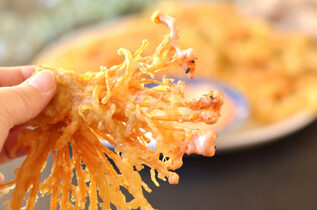
1. Wash your mushrooms and trim the base. You can cut the cluster into pieces or into single mushrooms.
2. Heat a skillet with no oil or butter and add the mushroom. Dry fry them, tossing them occasionally, until they are tender on the inside.
3. Mix 6 tablespoons of corn starch with 2 tablespoons of all purpose flower. Add enough soda water to make a thin batter.
4. Dip the mushrooms into the batter and cook in oil heated to 350f. Fry until they are golden. Salt and pepper to taste.
2. Heat a skillet with no oil or butter and add the mushroom. Dry fry them, tossing them occasionally, until they are tender on the inside.
3. Mix 6 tablespoons of corn starch with 2 tablespoons of all purpose flower. Add enough soda water to make a thin batter.
4. Dip the mushrooms into the batter and cook in oil heated to 350f. Fry until they are golden. Salt and pepper to taste.
Common earthball
Scleroderma citrinum is this mushroom's taxonomic title. The Common Earthball is also called The Pigskin Poison Puffball. That name makes it obvious that it is not edible. If you consume this mushroom, you will spend many hours with nausea and vomiting.
This small, 1-4 inch, round warted mushroom is mycorrhizal with various conifers and deciduous trees. Just because a mushroom is poisonous for us to eat does not mean that humans don't benefit from that particular fungus. Scleroderma citrinum for instance increases its host plant's ability to uptake nutrients and resist abiotic stresses. This equals healthier forests and we all benefit from healthy forests.
This small, 1-4 inch, round warted mushroom is mycorrhizal with various conifers and deciduous trees. Just because a mushroom is poisonous for us to eat does not mean that humans don't benefit from that particular fungus. Scleroderma citrinum for instance increases its host plant's ability to uptake nutrients and resist abiotic stresses. This equals healthier forests and we all benefit from healthy forests.
As you can see, the spore mass of the interior is purple to black. This is the defining feature that helps us not to confuse this with the various edible Puffball mushrooms. Earthballs are also firmer than puffballs.
Common Earthballs can be found growing in our region from summer through fall.
Common Earthballs can be found growing in our region from summer through fall.
Chanterelle Mushrooms
Friends of fungus are rejoicing for the recent rain. With the heat and humidity that has followed, conditions are right to spot these beautiful and delicious mushrooms. There are multiple species of Chanterelles in the Cantharellus genus.
Cantharellus cibarus is common to our region and can be found growing from the soil in coniferous and mixed forests. Their beautiful gold color make them much easier to find than morels.
Cantharellus cibarus is common to our region and can be found growing from the soil in coniferous and mixed forests. Their beautiful gold color make them much easier to find than morels.
Chanterelles have forking ridges that are decurrent on the stem for a reproductive surface. Ridges are similar to gills but not as deep and are more rigid. These mushrooms have a white interior.
Chanterelles grow solitary and occasionally in pairs. They never grow in clusters.
Chanterelles have a unique fragrance similar to apricot.
These mushrooms are delicious but they do have a couple of lookalikes that are toxic, so always be sure of your identification.
If you need help with identification, bring your find to
The Necessary Mercantile
Chanterelles grow solitary and occasionally in pairs. They never grow in clusters.
Chanterelles have a unique fragrance similar to apricot.
These mushrooms are delicious but they do have a couple of lookalikes that are toxic, so always be sure of your identification.
If you need help with identification, bring your find to
The Necessary Mercantile
The JOY OF cooking...mushrooms
As friends of fungus, we have a lot of gratitude for the culinary contributions of the fungal kingdom. Many of our favorite foods and drinks are thanks to fungi. Strolling through the grocery store: bread and baked goods, blue cheese, Camembert, Brie, some cheddars, soy and miso sauces, beer, wine, vinegar, kombucha, and of course fresh mushrooms are all there thanks to the fungal kingdom.
One of the most overlooked and versatile ingredients available is dehydrated mushrooms. There is a perception that "fresh" is always better and this is absolutely not always the case. Dehydrated mushrooms are distilled down to their earthy umami essence. The rich and intense flavor can elevate any dish.
You can find a selection of hard to find, gourmet, dehydrated mushrooms at
The Necessary Mercantile
One of the most overlooked and versatile ingredients available is dehydrated mushrooms. There is a perception that "fresh" is always better and this is absolutely not always the case. Dehydrated mushrooms are distilled down to their earthy umami essence. The rich and intense flavor can elevate any dish.
You can find a selection of hard to find, gourmet, dehydrated mushrooms at
The Necessary Mercantile
Anyone who has ever watched fresh mushrooms turn bad in the fridge will appreciate the longer storage time of dried mushrooms. They will store indefinitely if kept in a sealed, cool, dark place. After many months, they may lose a little of their flavor. Just simply add more to the recipe.
There are virtually endless applications for dehydrated mushrooms.
When you open the package, be sure to take a deep smell of the amazing aroma and let your imagination run wild with options.
You can soak the mushrooms overnight to reconstitute them and then sauté them with butter, oil, garlic, sherry, or all of the above.
Be sure not to throw out the water that the mushrooms were soaking in! It can be reduced and used as a broth. Try flavoring rice or potatoes when boiling.
You can also boil the mushrooms to make amazing stocks for sauces, soups, pastas like risotto, or grain dishes like quinoa. Be sure to dice up the mushrooms and add them to your recipe as well.
When you open the package, be sure to take a deep smell of the amazing aroma and let your imagination run wild with options.
You can soak the mushrooms overnight to reconstitute them and then sauté them with butter, oil, garlic, sherry, or all of the above.
Be sure not to throw out the water that the mushrooms were soaking in! It can be reduced and used as a broth. Try flavoring rice or potatoes when boiling.
You can also boil the mushrooms to make amazing stocks for sauces, soups, pastas like risotto, or grain dishes like quinoa. Be sure to dice up the mushrooms and add them to your recipe as well.
Another option is putting some dehydrated mushrooms into a coffee grinder and making your own seasoning. Try one variety like Hen of the Woods or make your own custom blend of multiple varieties. You can add salt, pepper, spices, and herbs. Your friends and family will be dying to know what the secret ingredient is.
Try adding mushroom powder and bits of mushrooms to a compound butter. This will improve the flavor of everything. When you sauté with it or drizzle it onto your foods, you'll add a mix of salty, creamy, and umami flavors that will delight your diners.
Try adding mushroom powder and bits of mushrooms to a compound butter. This will improve the flavor of everything. When you sauté with it or drizzle it onto your foods, you'll add a mix of salty, creamy, and umami flavors that will delight your diners.
Using dehydrated mushrooms reduces waste and gives many a chance to taste mushrooms they may not have fresh access to. Morel mushrooms have not been successfully cultivated commercially and only occur for a brief time in the spring. Luckily, dehydrating them makes them available in other seasons.
Cooking with dehydrated mushrooms can open up a world of culinary possibilities. The extended shelf life, concentrated flavor, convenience, nutritional value, and versatility make them an extremely valuable ingredient in the kitchen. Dehydrated mushrooms are a fantastic option to add depth and richness to your culinary creations. Be sure to stop in to
The Necessary Mercantile
and check out our selection of Friends of Fungus dehydrated mushrooms.
The Necessary Mercantile
and check out our selection of Friends of Fungus dehydrated mushrooms.
The death cap mushroom
Many people don't hunt wild mushrooms because they are fearful that they would pick the wrong mushroom and poison themselves. The way to alleviate that fear is through learning. It is important to learn the toxic mushrooms as well as the edible, so this week we'll take a look at The Death Cap mushroom (Amanita phalloides). Death Caps are responsible for 90% of the mushroom poisonings world wide, so this is an important fungi to learn.
In the picture above, you will notice that their stems (stipes) and caps are colored yellow to white. The reproductive surface is white gills that are attached to the stem (adnate) and the spore print is white. You will notice the ring around the stem called an annulus.
One of the main defining aspects of Amanita phalloides and most (not all) other Amanitas is the bulbous base called a volva. It begins as an egg shape and then erupts into its typical mushroom shape with a stem and cap
One of the main defining aspects of Amanita phalloides and most (not all) other Amanitas is the bulbous base called a volva. It begins as an egg shape and then erupts into its typical mushroom shape with a stem and cap
A welcomed bit of fungal news recently announced that scientists may have found an antidote to Amitoxin poisoning. Using CRISPR technology, scientists tested more than 3,000 compounds and found that Indocyanine Green (a dye used to test heart and liver function) helped mice survive alpha-aminitin poisoning if given the antidote within 4 hours. You can read the study here: https://pubmed.ncbi.nlm.nih.gov/37193694/.pubmed.ncbi.nlm.nih.gov/37193694/
There are a few things to keep in mind. This is not ready to be administered to humans yet. Amanita poisoning can take as long as 24 hours to show symptoms. While these mushrooms are poisonous to humans, they are quite pretty to look at. Touching the mushroom does not make you sick. In fact, there are no mushrooms on the North American continent that will make you sick by touching them. In Australia, there is one mushroom that is toxic to touch. In closing, it is best to avoid any mushrooms that look like The Death Cap.
There are a few things to keep in mind. This is not ready to be administered to humans yet. Amanita poisoning can take as long as 24 hours to show symptoms. While these mushrooms are poisonous to humans, they are quite pretty to look at. Touching the mushroom does not make you sick. In fact, there are no mushrooms on the North American continent that will make you sick by touching them. In Australia, there is one mushroom that is toxic to touch. In closing, it is best to avoid any mushrooms that look like The Death Cap.
Chicken of the Woods
Laetiporus sulphureus is commonly known as the chicken of the woods, crab of the woods, sulphur shelf or sulphur polypore. It is a bracket fungus that grows in North America and Europe.
It is easy to find and very easily identified with its striking orange and yellow colors. It is a saprophyte so you will find it growing on a variety of hardwood trees in the summer and into the autumn.
It can be weakly parasitic, sometimes causing rot in the heartwood of trees.
The reproductive surface is pores and the spores are white to slightly yellow.
It can be weakly parasitic, sometimes causing rot in the heartwood of trees.
The reproductive surface is pores and the spores are white to slightly yellow.
Chicken of the Woods has an impressive nutritional profile and boasts medicinal qualities as well.
Chicken of the Woods is a choice edible. The flavor and texture is remarkably similar to chicken. A quick search of recipes will show the versatility of this fungal fruit. As always be 100% positive with your identification before you eat it. If you need help with your ID, feel free to bring your find to
The Necessary Mercantile.
The Necessary Mercantile.
Hemlock Varnish Shelf/Reishi
Ganoderma tsugae commonly known as the Hemlock Varnish Shelf or Reishi grows almost exclusively on dying and dead Hemlock trees (Tsuga canadensis). They are sometimes found on Spruce and some Pines. Since the 1950's when the invasive and non-native Hemlock Woolly Adelgid arrived in America, nearly 90% of all the Eastern Hemlock trees in the Appalachians have been impacted. The Hemlock Varnish Shelf is a bioindicator of big changes happening in our Appalachian ecosystems.
Ganoderma tsugae is recognized by its shiny red to orange skin. Gano comes from Greek for shiny and derma for skin, hence its common name "Varnish Shelf". It has pores for a reproductive surface.
Ganoderma tsugae is edible but too tough to be considered a choice edible. It is best used to make a tincture using alcohol and water to extract the medicinal components it contains. It has been used for centuries in Korea, Japan and China for therapeutic purposes.
In Japan it is known as "Reishi". In China it is called Songshan Lingzhi. Lingzhi translates to, "Mushroom of Immortality" or "Herb of Spiritual Potency" or "The Divine Fungus".
The US FDA doesn't like us using the words "medicine or medicinal" when we're not referring to an approved pharmaceutical, so sometimes the term "functional" mushroom is used. Nonetheless, this article is not meant to treat, cure, prevent or diagnose any diseases. Always consult a licensed health professional.
In Japan it is known as "Reishi". In China it is called Songshan Lingzhi. Lingzhi translates to, "Mushroom of Immortality" or "Herb of Spiritual Potency" or "The Divine Fungus".
The US FDA doesn't like us using the words "medicine or medicinal" when we're not referring to an approved pharmaceutical, so sometimes the term "functional" mushroom is used. Nonetheless, this article is not meant to treat, cure, prevent or diagnose any diseases. Always consult a licensed health professional.
The Varnish Shelf belongs to the Ganoderma Genus and shares most of the same medicinal qualites with its more well-known relative Ganoderma lucidum. Ganoderma tsugae contains antioxidants, anti-inflammatory, and immunomodulatory properties.
Antioxidants play a crucial role in neutralizing harmful free radicals and protecting our bodies against oxidative stress. Several studies have demonstrated that extracts of Ganoderma tsugae can reduce cellular damage and mitigate the risk of chronic diseases.
Research has also shown that it is effective as an anti-inflammatory. Chronic inflammation can be associated with cardiovascular disease, diabetes and certain types of cancer.
As an immunomodulator, it enhances the activity of natural killer cells and promotes the production of cytokines, which are important immune system regulators. This can potentially strengthen the body's defense mechanisms; aiding in the prevention of infections and immune-related disorders.
The most noteworthy quality of Ganoderma tsugae is its anticancer qualities. Studies have revealed that bioactive compounds found in extracts exhibit cytotoxic effects on cancer cells and inhibit tumor growth.
If that isn't enough, it has also been found to have beneficial effects on liver health. Research shows that Ganoderma tsugae possesses hepatoprotective properties which help protect the liver caused by toxins, viruses and other factors. This makes it a VERY promising candidate in the management of liver disease.
If you are interested in seeing a Varnish Shelf mushroom, stop in and see one at The Necessary Mercantile. If you want to make your own extract, we have a free information sheet with the instructions. We sell this mushroom dried and we sometimes have fresh for sale.
Antioxidants play a crucial role in neutralizing harmful free radicals and protecting our bodies against oxidative stress. Several studies have demonstrated that extracts of Ganoderma tsugae can reduce cellular damage and mitigate the risk of chronic diseases.
Research has also shown that it is effective as an anti-inflammatory. Chronic inflammation can be associated with cardiovascular disease, diabetes and certain types of cancer.
As an immunomodulator, it enhances the activity of natural killer cells and promotes the production of cytokines, which are important immune system regulators. This can potentially strengthen the body's defense mechanisms; aiding in the prevention of infections and immune-related disorders.
The most noteworthy quality of Ganoderma tsugae is its anticancer qualities. Studies have revealed that bioactive compounds found in extracts exhibit cytotoxic effects on cancer cells and inhibit tumor growth.
If that isn't enough, it has also been found to have beneficial effects on liver health. Research shows that Ganoderma tsugae possesses hepatoprotective properties which help protect the liver caused by toxins, viruses and other factors. This makes it a VERY promising candidate in the management of liver disease.
If you are interested in seeing a Varnish Shelf mushroom, stop in and see one at The Necessary Mercantile. If you want to make your own extract, we have a free information sheet with the instructions. We sell this mushroom dried and we sometimes have fresh for sale.
Plums and Custard Mushroom
The Tait brothers brought another "fun"gal discovery to The Necessary Mercantile for identifying this week. Thanks for sharing your find!
Plums and Custard mushrooms, Tricholomopsis rutilans, are easily recognizable by their distinctive colors. The cap color ranges from reddish-orange to plum purple, giving it an eye-catching appearance. The cap of the mushroom is convex when young, later flattening out. It has gills which are custard yellow and attached to the stem (adnate). The spore print is white. The stem is usually curved away from the stump or trunk that it is growing from. The top of the stem/stipe is pale and then covered in plum colored scales towards the base.
Plums and Custard mushrooms, Tricholomopsis rutilans, grow on dead/decaying coniferous (especially spruce) wood. They are found throughout Europe and North America.
The Devil's Urn Mushroom
Jim and Bill Tait, attendees from our previous Enchanted Nature mushroom class sent a picture of some Devil's Urn mushrooms for help with identification. Thank you for sharing guys!
The Devil's Urn, Urnula craterium, is an attractive mushroom found in eastern North America, Asia and Europe. This mushroom gets its name from its distinctive shape, resembling an urn. Its uncomplimentary moniker of "Devil's Urn" probably comes from it striking black color.
This fungus is a decomposer so you will find it growing on wood; generally firmly attached to sticks and branches. It can be parasitic on Oak and other hardwoods causing cankers to form.
The reproductive surface is pores. The spore print is black to dark brown and if you look at the spores under a microscope, you would find that they are sausage shaped.
While this fungal fruit is not listed as toxic, it is reported to cause severe gastrointestinal distress. Descriptions from those who have tasted it call it tough, foul-tasting and inedible.
The reproductive surface is pores. The spore print is black to dark brown and if you look at the spores under a microscope, you would find that they are sausage shaped.
While this fungal fruit is not listed as toxic, it is reported to cause severe gastrointestinal distress. Descriptions from those who have tasted it call it tough, foul-tasting and inedible.
When the Devil's Urn reaches the end of its maturity, the top can fan out appearing similar to a Black Trumpet mushroom (Craterellus cornucopioides). The distinctive clues to telling the difference between a Devil's Urn and Black Trumpet mushroom are the season and substrate.
Devil's Urn mushrooms appear at the same time Morels do; spring.
Black Trumpets fruit in the summer.
Devil's Urn mushrooms grow on wood. Black Trumpets grow on soil.
If you find any interesting mushroom, please share a pic or bring them in to
The Necessary Mercantile.
Devil's Urn mushrooms appear at the same time Morels do; spring.
Black Trumpets fruit in the summer.
Devil's Urn mushrooms grow on wood. Black Trumpets grow on soil.
If you find any interesting mushroom, please share a pic or bring them in to
The Necessary Mercantile.
Wine Cap Mushrooms
Stropharia rugosoannulata
Stropharia rugosoannulata mushrooms have a few common names: Wine Cap Mushrooms, The Garden Giant, King Stropharia and the Japanese call them Saketsubatake. Seeing the immense size that they can grow to exemplifies where the name, "Garden Giant" comes from.
Stropharia rugosoannulata mushrooms have a few common names: Wine Cap Mushrooms, The Garden Giant, King Stropharia and the Japanese call them Saketsubatake. Seeing the immense size that they can grow to exemplifies where the name, "Garden Giant" comes from.
Wine caps are native to North America and Europe. You find them typically growing in gardens, meadows, and woodlands. The mushroom has a distinctive reddish-brown cap that can reach more than 12 inches in diameter and a thick stem. The gills of the mushroom are initially purple, but as they mature, they become a deep chocolate brown. The spore print is dark purple brown to almost black. This mushroom does have a veil that turns into a ring around the stem. We call this ring an annulus. When the Wine Cap is pulled, you will find large threads that resemble roots. These are called rhizomorphs.
The Wine Cap mushroom is edible. It has a very meaty texture and savory taste. It is often used as a meat substitute in vegetarian dishes. They should be harvested before the cap is fully open for the best flavor and texture. In addition to its culinary uses, the Wine Cap mushroom has been found to have medicinal properties. It contains compounds that have anti-inflammatory, antioxidant, and antitumor effects.
The Wine Cap mushroom is easy to cultivate and has become popular among home gardeners and permaculture enthusiasts. The mushroom can be grown in woodchip mulch, sawdust or straw. Once you've established your bed, they can provide a sustainable source of food for years.
The Wine Cap mushroom is easy to cultivate and has become popular among home gardeners and permaculture enthusiasts. The mushroom can be grown in woodchip mulch, sawdust or straw. Once you've established your bed, they can provide a sustainable source of food for years.
If you are interested in growing Wine Caps, now (spring) is the time to start them. You can build a bed with four logs for sides (bonus points if those logs are inoculated with Shiitake mushroom spawn). Lay cardboard over the ground. Remove any tape or staples if necessary. Then add a 4-6 inch layer of sawdust, wood chips and/or straw. Break up spawn and sprinkle over the layer of substrate.
Then add another few inches of wood chips, saw dust and/or straw. Water, water and water some more. You want your substrate completely saturated and never to dry out completely. Be advised that there are some lookalike mushrooms, so be sure of your identification.
Making Wine Cap beds with your garden plants like blueberries or tomatoes, is a win-win. Stropharia rugosoannulata captures phosphorus, breaks down organic material making nutrients available to plants, attracts earthworms, eats coliform bacteria and reduces erosion. The cardboard and mulch/straw prevents weeds.
Making Wine Cap beds with your garden plants like blueberries or tomatoes, is a win-win. Stropharia rugosoannulata captures phosphorus, breaks down organic material making nutrients available to plants, attracts earthworms, eats coliform bacteria and reduces erosion. The cardboard and mulch/straw prevents weeds.
If you're interested in learning more about Wine Caps or growing your own, stop in and see us at The Necessary Mercantile, 3816 Churchville Avenue, Churchville.
We have a variety of books and can help you get spawn.
The False Morel Mushroom
Gyromitra esculenta
Gyromitra esculenta
The false morel mushroom (Gyromitra esculenta) is a potentially dangerous fungus that can be found in forests of Europe, Asia, and North America. As the name implies, false morels are not morel mushrooms and should not be eaten due to their toxic properties. This mushroom contains a toxin called gyromitrin, which can cause a range of symptoms, including nausea, vomiting, diarrhea, and even death. Gyromitrin, is converted by the liver into N-methylhydrazine (MMH). This chemical is also a component in rocket fuel! Despite the dangers associated with the false morel, some people do eat it claiming that it has health benefits. There is no scientific evidence to support the idea that false morels have any health benefits. In fact, the consumption of false morels has been linked to several cases of severe illness and deaths. Some people mistakenly believe that the false morel can be made safe for consumption by boiling or drying, this is not true. The toxin gyromitrin is not destroyed by cooking, and there is no reliable method for removing it from the mushroom.
The false morel mushroom can be identified by its wrinkled, brain-like cap that ranges in color from brown to reddish-brown. True morels have pits. It typically grows in the same season as true morels and can be found in damp, wooded areas. While field guides call this a lookalike for true morels, you can see that they really don't look that much like each other. Another clue that you have a false morel is that the stem is not hollow. Morels ALWAYS have a hollow stem.
If you are ever unsure about your finds, bring them by
The Necessary Mercantile
and one of our certified mushroom foragers will help you with identification.
The Necessary Mercantile
and one of our certified mushroom foragers will help you with identification.
Which Way Is Up?
Fungi know which way is up.
Fungi know which way is up.
Geotropism, also known as gravitropism, is the response of fungi to the force of gravity. This is how fungi maintain their orientation and grow in the correct direction. With fungi, geotropism is especially important during the formation of the fruiting body. Mushrooms need grow in the upright position to ensure successful spore dispersal.
In the image above, you will notice the larger and older Cracked Cap Polypore mushroom is perpendicular to the ground while the new, younger mushrooms are growing parallel to the ground. This tree trunk was obviously still standing when the larger mushroom formed.
Mushrooms exhibit positive geotropism, which means they grow towards the direction of gravity. As spores begin to germinate, the mycelium grows underground in a horizontal direction. As the mycelium matures and when conditions are right, the mushroom begins to form.
The ability of mushrooms to respond to gravity is an essential component in their growth and survival. Without geotropism, the fruiting body would not be able to grow in the correct orientation, which would impact spore dispersal and reduce the mushroom's ability to reproduce. Additionally, the force of gravity plays a role in the movement of nutrients and water throughout the mushroom, allowing it to maintain its structure and function properly.
Mushrooms exhibit positive geotropism, which means they grow towards the direction of gravity. As spores begin to germinate, the mycelium grows underground in a horizontal direction. As the mycelium matures and when conditions are right, the mushroom begins to form.
The ability of mushrooms to respond to gravity is an essential component in their growth and survival. Without geotropism, the fruiting body would not be able to grow in the correct orientation, which would impact spore dispersal and reduce the mushroom's ability to reproduce. Additionally, the force of gravity plays a role in the movement of nutrients and water throughout the mushroom, allowing it to maintain its structure and function properly.
The Morel Mushroom (Part 3)
Morchella spp.
We've discussed when and where to find Morel mushrooms.
In this third and final Morel post, we will discuss why you may NOT be finding Morels.
- There may not be any Morels there. Just because you find a pond does not mean that there are fish in it. I have a property with dying Ash trees, Poplars, Sycamores and a couple of old apple trees but have never seen a Morel there. Do recheck areas repeatedly before giving up. Your timing could be off.
- Somebody or something got there before you. Black bears, squirrels, raccoons and other animals enjoy Morels. These critters have the benefit of superior senses of smell and eyesight. If other people are hunting the same spot, it could be that you should have woke up and got out earlier.
- Environmental conditions are not correct. Like every other mushroom, Morels need the right air and soil temperatures, humidity and rainfall. When you do find a Morel, note all of the details so that you can reference them next year.
- You don't have a search image burned into your eyes. You could be looking right at a Morel and not see it. Stare at pictures of Morels or find one in the forest. Study it closely. When you're slowly walking and scanning the ground, block out anything that is not a Morel.
Good luck!
The Morel Mushroom (Part 2)
Morchella spp.
Last week we focused on when to find the elusive and delicious Morel mushroom. Now we'll cover where to find them. Many mushroom enthusiasts will tell you that they grow wherever they want to. This is true, however some trees will be better bets than others. Tree identification is an important tool when looking for a Morel patch. This can be hard because the leaves aren't generally fully formed by Morel season. The bark of a tree can help with identification. Sycamores for instance, have a very unique bark.
Tulip Poplars have flowers in the canopy.
Another way to identify a tree or stand of trees is to look at the dried leaves
that are laying on the ground nearby.
that are laying on the ground nearby.
There are obviously Oak trees nearby.
So where do we look for Morels. Growing around Oaks, Poplars and Sycamores is a good place to look. They are also found around decaying Elm and Ash trees. They also like Hickory and apple trees. We do caution you about hunting Morels in old apple orchards. Fruit growers often use a lot of insecticides. Many of the old insecticides used heavy metals as an active ingredient and those pesticides are persistent in the soil. Mushrooms can bioaccumulate heavy metals to the point of being toxic. Some folks have found Morels in stands of White Pine.
In the early part of the season, hunt south facing slopes and other areas where sunlight can warm the soil. Woodland edges can be productive early in the season. As the spring progresses, you can hunt shadier areas and north slopes.
Another area to look is areas where the soil has been disturbed. Clear cuts and burned areas can sometimes produce a boom in Morel growth.
The last advice on where to look for Morel mushrooms is near other Morels. If you've found one, stand still and scan the area because there are most likely more growing nearby.
So where do we look for Morels. Growing around Oaks, Poplars and Sycamores is a good place to look. They are also found around decaying Elm and Ash trees. They also like Hickory and apple trees. We do caution you about hunting Morels in old apple orchards. Fruit growers often use a lot of insecticides. Many of the old insecticides used heavy metals as an active ingredient and those pesticides are persistent in the soil. Mushrooms can bioaccumulate heavy metals to the point of being toxic. Some folks have found Morels in stands of White Pine.
In the early part of the season, hunt south facing slopes and other areas where sunlight can warm the soil. Woodland edges can be productive early in the season. As the spring progresses, you can hunt shadier areas and north slopes.
Another area to look is areas where the soil has been disturbed. Clear cuts and burned areas can sometimes produce a boom in Morel growth.
The last advice on where to look for Morel mushrooms is near other Morels. If you've found one, stand still and scan the area because there are most likely more growing nearby.
The Morel Mushroom (Part 1)
Morchella spp.
Ah yes, one of the most familiar and sought after wild mushrooms on the planet. It is also one of the most frustratingly elusive fungi in the forest. Chefs and eaters agree that this is one DEEELICIOUS mushroom, so the work of searching for them can be met with great rewards.
The questions that every beginner has are, "when do they grow?" and "where do they grow". We will spend some time discussing this, but first, let's get familiar with the mushroom.
When you first find or see a Morel, the most identifiable characteristic is the cap. Unlike most mushrooms that have gills, pores or ridges, the morel is "pitted". This fungal fruit falls into a unique group known as ascomycetes. There aren't many mushrooms that resemble a Morel so positive identification is reasonably easy. All species of Morel in North America are edible but we caution you to never eat a mushroom unless you are 100% sure that it is safe.
The colors can range from blonde to brown to tinged black.
The height averages 1 to 4 inches, depending on the species, but stories and pictures of 12 inch Morels weighing a pound can be found throughout the internet.
The colors can range from blonde to brown to tinged black.
The height averages 1 to 4 inches, depending on the species, but stories and pictures of 12 inch Morels weighing a pound can be found throughout the internet.
|
When should you start searching for Morels? The "Ol' Timers" will tell you that when the Oak leaves are as big as a mouse's ear, start looking. Other natural indicators are when the Lilacs are budding, the Bloodroot is flowering and when the Mayapples are open. Ideal air temperatures are 60º-70º and 50's at night. The soil temperature should be above 50º. These conditions are beginning. Although it is unusually early, soil temps are 50+ degrees and daytime temps are falling within the window of Morel magic. With the rain this weekend, I would recommend keeping your eyes open if you are walking in the woods.
|
You want to focus on sunny breaks in the trees. Hardwoods are recommended but we will get into more detail about this next week. South facing slopes and any area where the sun may be warming the earth is a good bet. A thermometer that you can poke into the soil is a handy tool. Remember that you want the soil to be 50+ degrees. After a rain, your odds of success increase. Your location, altitude and the local ecosystem will all have an effect on when these elite hide and seek players emerge. Be sure to visit us next week for more information on the Morel mushroom.
If you are interested in learning more about mushroom hunting, Enchanted Nature Tours will be offering a class on Sunday, April 24, 2024 at The Necessary Mercantile. Find out more here: www.enchantednaturetours.com/mushroom-class
If you are interested in learning more about mushroom hunting, Enchanted Nature Tours will be offering a class on Sunday, April 24, 2024 at The Necessary Mercantile. Find out more here: www.enchantednaturetours.com/mushroom-class
The Mica Cap Mushroom
Coprinellus micaceus
Mica cap mushrooms belong to the genus Coprinellus and are related to Shaggy Manes and Inky Caps . Mica Cap mushrooms are found in North America, Europe, and Asia. You will find them growing in clusters on dead wood. They prefer stumps, logs and buried wood but you may also find them growing at the base of trees that look perfectly healthy as well.
Mica Caps have gills that are attached (adnate) to the stem. The gills are dark brown to black and the spore print is black. The top of the brown caps are coated with salt-like granules resembling mica, hence the name. They grow larger than inky caps in spring, summer, fall and sometimes winter in milder climates.
One unique aspect of mica cap mushrooms is their tendency to self-digest as they age. As the cap of the mushroom matures, it begins to liquefy and turn black, a process known as autodigestion. This process can occur rapidly. Some mica cap mushrooms can be fully digested within a few hours of emerging from the ground. This "inky" goo can be mixed with water and used to draw pictures or write poetry about mushrooms.
They have a delicate texture and a mild, nutty flavor that makes them a popular ingredient in soups, stews, and sautés. Two cautions should be heeded. Never eat a wild mushroom unless you are 100% sure that it is safe. Like Shaggy Manes, the Mica Cap mushroom contains a chemical known as Coprine. When mixed with alcohol, Coprine can cause side effects including facial flushing, nausea, vomiting, malaise, palpitations, excessive salivation, headache and tingling in your limbs. Avoid the Chardonnay if you're consuming Mica Caps.
In addition to their culinary uses, mica cap mushrooms also have potential medicinal properties. Studies have shown that compounds found in mica cap mushrooms may have anti-inflammatory and antioxidant effects, making them a potential treatment for a range of health conditions. More research is needed.
In addition to their culinary uses, mica cap mushrooms also have potential medicinal properties. Studies have shown that compounds found in mica cap mushrooms may have anti-inflammatory and antioxidant effects, making them a potential treatment for a range of health conditions. More research is needed.
The False Turkey Tail Mushroom
Stereum ostrea
The False Turkey Tail (Stereum ostrea) mushroom is a saprophytic fungi commonly found growing on dead or dying trees, especially hardwood trees. They can live on over 70 different genera of hardwood trees and several conifers in the United States. They are a fan-shaped bracket fungi that resemble the tails of turkeys, hence their name. False Turkey Tail mushrooms can be found all over the world, but they are particularly common in North America.
These mushrooms are thin and fan shaped with a tough, leathery texture. The main distinctive difference in appearance between true Turkey Tails and False Turkey Tails is the underside. The true Turkey Tail has a white fertile surface while the false Turkey Tail has a parchment colored underside.
While False Turkey Tail mushrooms are not poisonous, they are not typically consumed because of their tough texture and bitter taste.
False Turkey Tails are not as well studied and don't seem to have the same medicinal compounds that True Turkey Tails do. One study shows that water and ethanol extracts may have some anti-bacterial and antifungal qualities. You can read that study here: https://www.ncbi.nlm.nih.gov/pmc/articles/PMC3763174/
False Turkey-tail mushrooms are an important component of forest ecosystems because they help break down dead trees and recycle nutrients back into the soil. They also provide food and shelter for a wide variety of insects and other animals.
While False Turkey Tail mushrooms are not poisonous, they are not typically consumed because of their tough texture and bitter taste.
False Turkey Tails are not as well studied and don't seem to have the same medicinal compounds that True Turkey Tails do. One study shows that water and ethanol extracts may have some anti-bacterial and antifungal qualities. You can read that study here: https://www.ncbi.nlm.nih.gov/pmc/articles/PMC3763174/
False Turkey-tail mushrooms are an important component of forest ecosystems because they help break down dead trees and recycle nutrients back into the soil. They also provide food and shelter for a wide variety of insects and other animals.
The Column Stinkhorn
Clathrus columnatus
This week's Fungus Among Us was submitted by one of our Friends of Fungus that was visiting South Carolina. When we received the pictures, identification was not obvious like many other mushrooms. Some of the pictures resemble a small Puffball or Amanita mushroom but the picture that looks like a soft boiled egg cracked open didn't add up.
Clathrus columnatus
This week's Fungus Among Us was submitted by one of our Friends of Fungus that was visiting South Carolina. When we received the pictures, identification was not obvious like many other mushrooms. Some of the pictures resemble a small Puffball or Amanita mushroom but the picture that looks like a soft boiled egg cracked open didn't add up.
After we got a couple more details, like the fact that it had a foul odor, it became clear that this was a Column Stinkhorn (Clathrus columnatus) mushroom. Stinkhorns have evolved to emit odors that range from manure to rotting flesh. This scent draws flies which will land on the mushroom, get covered in spores and then carry those spores off to a new area. This is similar to pollinators being attracted to flowers, except stinkhorns don't smell like flowers. They are interesting and strange looking mushrooms though. Below is a mature Column Stinkhorn.
Like other Stinkhorns, the mushroom emerges from an egg that has long strings on the bottom that resemble roots. The mushroom is covered in Stinkhorn slime that emits the foul odor and sticks the spores to insects.
If you're interested in learning more about mushrooms, stop in and see us at
The Necessary Mercantile
|
The Lumpy Bracket Trametes gibbosa At first glance, you might assume that this is a Mossy Maze mushroom if you spotted it in the forest. After a closer examination you would find that it isn't. An older specimen can gain a green tint due to algal growth but this mushroom is actually white. The Lumpy Bracket is a polypore. It is a saprophyte and found on decaying hardwood trees with a preference for Beech trees. Some of the main identifying characteristics are the bumpy hump where the mushroom is attached to the wood, the pores on the reproductive surface, the cream-white spore print, and its crusty hard flesh. Medical studies have found that extracts of Trametes gibbosa may have anti-cancer, anti-inflammatory and antiviral effects. These pretty little brackets can be found in our region right now and all year as they are a perennial fungus. If you would like to see one and some other mushrooms too, stop by and see us at: The Necessary Mercantile Thursday-Saturday 10-2 |
|
Stinking Orange Oyster Phyllotopsis nidulans Phyllotopsis nidulans is also called the Stinking Orange Oyster, Mock Oyster or Orange Oyster mushroom. It can be found in our region at this time of year; autumn to late winter. It is saprophytic and you will find them growing in clusters on decaying hardwoods and conifers alike. Although it looks like an Oyster mushroom, it is not. The cap is orange, which can fade to a yellow orange as it ages. The cap surface is hairy. The reproductive surface is gills. The spore print is light pink. Often there is no stem and if there is, it is usually not well formed. One of the most notorious identifying features of this mushroom besides its lovely orange color is it's odor. The aroma is described as rotten eggs, skunk or skunk cabbage, hence the common name of Stinking Orange Oyster. As it ages, the odor may lessen. It is not listed as toxic. However, it is listed as inedible and foul-tasting. With an odor like a skunk, it's not hard to imagine why. |
Mossy Maze Mushrooms
Cerrena unicolor Jack brought us this pretty cluster of Mossy Maze mushrooms this week. It is a polypore fungus, therefore the reproductive surface is pores. This fungus is common in North and Central America, Europe and Asia. The mushrooms resemble the common Turkey Tail mushroom (Trametes versicolor) but the pores are much coarser in texture. The underside is usually a smoky gray color unlike the Turkey Tails' smooth creamy white reproductive surface. This mushroom has a "mossy" green coating on the top which is probably why the common name was created. This is actually a misnomer because moss very rarely occurs on top of this fungus. It is actually algae. Is anybody else thinking of a lichen in the making? This mushroom is saprophytic, so you will always find it growing on decaying wood. Hardwood species are its preferred diet. The mushroom is not toxic but it is tough and corky in texture leading field guides to list it as inedible. If you're interested in getting a closer look at some Mossy Maze mushrooms, please stop in and see us at The Necessary Mercantile 3816 Churchville Avenue Churchville Thursday-Saturday 10-2pm |
|
Medicine of Mushrooms
Any lover of edible mushrooms has heard the term, "medicinal mushrooms". You may have also heard the term, "functional mushrooms". The latter is often used to avoid the US Food and Drug Administration from prosecuting or sending a warning letter regarding claims that mushrooms contain medicinal qualities despite overwhelming scientific evidence to the contrary. Even studies that try to negate the power of fungi admit that there are "secondary metabolites" that may contain medicinal qualities. The FDA does not regulate "supplements" unless they make a claim of diagnosing, treating, mitigating or curing diseases. They have the power to confiscate products, criminally prosecute and fine. The FDA definition of a drug is: * A substance (other than food) intended to affect the structure or any function of the body. * Biological products are included within this definition and are generally covered by the same laws and regulations, but differences exist regarding their manufacturing processes (chemical process versus biological process) In many Asian cultures, mushrooms have been and continue to be used as medicine. For centuries, humans have been harnessing the "medicinal" power of fungi to prevent and treat many diseases. Here in the United States, we can thank fungi for many of our conventional medicines. The world population would surely be far lower if Alexander Fleming had not discovered Penicillium rubens was such a powerful antibacterial in 1928. Many of us may not be here right now if our elders or ourselves hadn't had access to Penicillin. |
Cholesterol lowering statins are from Pleurotis (Oyster) mushrooms. Cyclosporine, a drug that lowers our immune response allowing organ transplants comes from Tolypocladium inflatum.
If we move beyond FDA approved pharmaceuticals, we find that many mushrooms contain chemicals that may benefit the human condition by preventing inflammation, preventing and slowing cancer growth, preventing dementia, and helping with a host of other ailments. The three main components, although there are many, are called polysaccharides, triterpenes and beta-glucans. These claims of medicinal properties are supported by many scientific studies in well respected medical journals. You can find these studies, for free, with a quick search of the term, "medicinal mushrooms" on https://pubmed.ncbi.nlm.nih.gov/
Some of these mushrooms that provide "medicinal" benefits are not palatable because they're tough and I usually compare them to chewing on shoe leather. Two major examples include Reishi (Ganoderma spp.) and Turkey Tails (Trametes versicolor). Another issue is that our digestive enzymes are unable to make the beneficial components available to our bodies. They often need to be extracted with water and/or alcohol first. The process is not hard and we actually have a free information sheet describing the process available at The Necessary Mercantile for the taking. We also stock both Turkey Tail and Reishi mushrooms.
Thankfully, there are also a variety of health bestowing mushrooms that are not only edible but incredibly delicious and culinarily versatile. Oyster mushrooms come in many colors, shapes and sizes.
They do NOT taste like oysters and they do NOT have an oyster consistency. The name comes from the similarity that one variety has in appearance to the mollusk...if you have a vivid imagination.
If we move beyond FDA approved pharmaceuticals, we find that many mushrooms contain chemicals that may benefit the human condition by preventing inflammation, preventing and slowing cancer growth, preventing dementia, and helping with a host of other ailments. The three main components, although there are many, are called polysaccharides, triterpenes and beta-glucans. These claims of medicinal properties are supported by many scientific studies in well respected medical journals. You can find these studies, for free, with a quick search of the term, "medicinal mushrooms" on https://pubmed.ncbi.nlm.nih.gov/
Some of these mushrooms that provide "medicinal" benefits are not palatable because they're tough and I usually compare them to chewing on shoe leather. Two major examples include Reishi (Ganoderma spp.) and Turkey Tails (Trametes versicolor). Another issue is that our digestive enzymes are unable to make the beneficial components available to our bodies. They often need to be extracted with water and/or alcohol first. The process is not hard and we actually have a free information sheet describing the process available at The Necessary Mercantile for the taking. We also stock both Turkey Tail and Reishi mushrooms.
Thankfully, there are also a variety of health bestowing mushrooms that are not only edible but incredibly delicious and culinarily versatile. Oyster mushrooms come in many colors, shapes and sizes.
They do NOT taste like oysters and they do NOT have an oyster consistency. The name comes from the similarity that one variety has in appearance to the mollusk...if you have a vivid imagination.
Oyster mushrooms are native to our region and these are the mushrooms that contain Lovastatin. Research has also shown that they have anti-tumor properties. This is one of my favorite mushrooms to cook and eat.
Hen of the Woods (Grifola frondosa), which is native to our area has been found to contain components that stimulate the immune system, have anti-cancer properties and regulate blood sugar.
These mushrooms are often called Maitake.
Lion's Mane (Hericium erinaceous), native to our region may protect against dementia, reduce anxiety and depression, prevent inflammation and boost the immune system.
Shiitake (Lentinus edodes) may boost whites cell production to fight off pathogenic microbes. They also have been shown to contain anti-inflammatory components and may protect against cell damage.
Over and above the many "medicinal" properties, mushrooms are a nutritional powerhouse and contain many antioxidants. Add some variety to your life and explore the many fungal offerings available.
When someone says that they "don't like mushrooms", my first reaction is that there are so many varieties with different textures, different aromas, different shapes and different flavors, not to mention a virtually infinite amount of ways to cook them, that they haven't been exposed to all the fungal kingdom has to offer. White button mushrooms from a can are not exactly the best ambassadors for fungi.
If you're interested in trying many of these mushrooms, we usually carry them at The Necessary Mercantile. Just give a call to confirm that we have them in stock, (540) 712-7996.
We can also help with cooking suggestions.
Hen of the Woods (Grifola frondosa), which is native to our area has been found to contain components that stimulate the immune system, have anti-cancer properties and regulate blood sugar.
These mushrooms are often called Maitake.
Lion's Mane (Hericium erinaceous), native to our region may protect against dementia, reduce anxiety and depression, prevent inflammation and boost the immune system.
Shiitake (Lentinus edodes) may boost whites cell production to fight off pathogenic microbes. They also have been shown to contain anti-inflammatory components and may protect against cell damage.
Over and above the many "medicinal" properties, mushrooms are a nutritional powerhouse and contain many antioxidants. Add some variety to your life and explore the many fungal offerings available.
When someone says that they "don't like mushrooms", my first reaction is that there are so many varieties with different textures, different aromas, different shapes and different flavors, not to mention a virtually infinite amount of ways to cook them, that they haven't been exposed to all the fungal kingdom has to offer. White button mushrooms from a can are not exactly the best ambassadors for fungi.
If you're interested in trying many of these mushrooms, we usually carry them at The Necessary Mercantile. Just give a call to confirm that we have them in stock, (540) 712-7996.
We can also help with cooking suggestions.
If you're interested in learning to grow and forage for these mushrooms, we still have seats available in our upcoming mushroom classes on Tuesday, February 27th or Sunday, March 5th. You can sign up for the class here: https://enchantednaturetours.com/mushroom-class
†This article is not meant to diagnose, treat, mitigate or cure any diseases.†
Seriously, if you have a medical condition, seek proper medical attention and advice.
†This article is not meant to diagnose, treat, mitigate or cure any diseases.†
Seriously, if you have a medical condition, seek proper medical attention and advice.
|
Velvet Foot Mushroom
Flamulina velutipes Greetings Friends of Fungus. We hope that you've found some time to spend observing the wonders of winter. One mushroom that you may find in our region at this time of year is the Velvet Foot mushroom. It has a sticky, rubbery brown cap that can be tinged orange, reddish or yellowish. The reproductive surface is gills. This mushroom grows from hardwood species. The white Enoki (aka Enokitake) mushrooms that you sometimes find at grocery store are actually a cultivated variety of this mushroom. While Velvet Foot mushrooms are edible, we advise extreme caution in being 100% sure of your identification. The lookalike for this mushroom is Galerina marginata whose common name is The Deadly Galerina! I think the name is explicit enough to explain our caution. The Velvet Foot has a white spore print while the Deadly Gallerina has a brown spore print. Another defining characteristic is that Gallerina marginata has a ring (called annulus in mycologist vernacular) while Flammulina velutipes does not. If you are enjoying our weekly mushroom postings, please stop by The Necessary Mercantile and let us know. We have a selection of field guides, maps, mycology books, mushroom knives and lots of mushrooms to see and touch. We still have a few logs left too if you would like to grow your own mushrooms. |
|
Scarlet Elf Cup
Sarcoscypha austriaca Hello Friends of Fungus. This week we're going to look at the Scarlet Elf Cup mushroom. As you can see, it is easy to spot in the forest because of it's striking red color. It's not hard to imagine where the name came from. Their cheery red color and water holding cup shape could inspire visions of woodland elves using them for some liquid refreshment. Sarcocypha austriaca can be found between December and April in damp deciduous forests. They are saprotrophic, so you will find them growing from downed sticks. They have a preference for moss covered Sycamore, Willow, and Beech wood. As they decompose the wood, they release necessary nutrients for early spring plants. Unlike most other edible mushrooms, Elf Cups are ascomycetes. This means that they actively shoot their spores, which are white, into the air. The more common basidiomycetes simply drop their spores through gills or pores. You might be able to observe the spore "shooting" by gently blowing on them. The moving air may trigger them to shoot up a cloud of spores. |
Scarlet Elf Cups are edible and lend themselves to interesting presentations by filling them up with meats, herbs or more mushrooms. The stunning red color can brighten up any dish. As always, we caution you to never eat a mushroom unless you are 100% sure that it is safe.
|
Witch's Butter
Tremella mesenterica Hello Friends of Fungus. In winter, we see a lot of polypores like Turkey Tails and other bracket fungus as we search the forest. You might be lucky enough find this pretty little jelly fungus. Witch's Butter also called Golden Jelly Fungus or Yellow Trembler is normally found on deadwood. Often you will spot them on hardwood sticks a couple of inches or smaller. You may think that this is a saprobe (decomposer) because it is found on dead wood. It is actually a parasitic fungus that consumes the mycelium of a crust fungus in the genus Peniphora. The fruiting body is smooth and gelatinous. These fungi are common throughout the world. They are edible but not considered "choice" as the flavor is bland. One interesting use of Tremella mesenterica is its presence in cosmetics and creams. One "anit-aging" lotion that I found online charges $75.00 for a 2 ounce jar of cream. Before you start smearing jelly fungus all over your face, realize that there are some doppelganger fungi that can only be distinguished by looking at your specimen with a microscope. With a name like Witch's Butter, you know there is a lot of folklore associated with it. The most common story is that it would be found on door frames of old houses before the days of chemical paints and treatments. If you found it on the door, your house was cursed by a witch. Another story says that a group of witches would steal milk from the family cow and leave bit's of Witch's "Butter" lying about. A different take says that if you throw Witch's Butter into a fire, you can defend yourself against witchcraft. |
|
LATTICE PUFFBALL
Calostoma lutescens One of our Friends of Fungus submitted these pics of Lattice Puffballs growing from a very cold and icy George Washington National Forest. There many fungi and lichens in the forest all winter long. If you find any, please send a pic to ChurchvilleStore@gmail.com This mushroom is not kin to giant puffballs (Calvatia gigantea) or stalked puffballs in the genus Podaxis It is in the same family as Castoloma cinnabarina, and shares a strikingly unique fruiting body. The cap isn't a cap. It is a spore casing on top of the stem. These type of fungi used to belong to a group named gasteroid fungi (stomach fungi) because they produce their spores on the interior rather than on an out surface. That term is now obsolete and the class is polyphyletic. These fungi are common in Virginia and the southern Appalachians. They are saprotrophic meaning that they decay dead or dying material. |
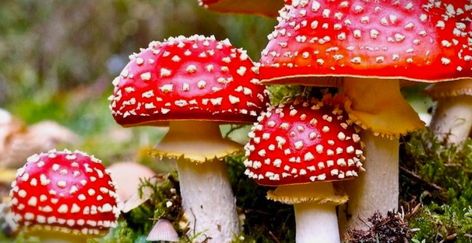
The Fly Agaric Mushroom Amanita muscaria This pretty little mushroom is often found depicted in children's books with elves or fairies. Being an Amanita, it has a bulbous base known as a volva. The reproductive surface is gills. The gills are free meaning that they do not connect to the stem. The red cap with white warts is probably the most recognizable characteristic. If you look at the stem (stipe), you will notice a ring that is called an annulus. You can find some cute Amanita Muscaria earrings at The Necessary Mercantile if you're looking for a last minute gift. |
Cracked Cap Polypore
Phellinus robiniae
If you ask a mushroom forager and a mycologist if there are mushrooms out in the winter, you might get two different answers. A forager is searching for something edible while a mycologist is keeping a lookout for all things fungal. There are most definitely mushrooms revealing themselves during the winter. What you will usually find are perennial polypores if you live in the seasonal climates. The photograph above was taken during an ice storm in the middle of December.
Phellinus robiniae is both parasitic and saprophytic. It is usually found on Locust trees. It can be found on other decaying hardwoods as well. It is a disease for Locust trees but will decay a variety of hardwoods after they have died.
Phellinus robiniae is currently being studied in medicinal applications for hyperglycemia and diabetes. If you would like to see the mushroom in the picture above, stop by The Necessary Mercantile.

Strawberries and Cream Mushrooms
Hydnum peckii
The kingdom of fungi is full of peculiar and beautiful life forms. Hydnum peckii is a perfect example. It is peculiarly beautiful.
Hydnum peckii is also called strawberries and cream, bleeding tooth fungus, devil's tooth, bleeding hynellum, and bile tooth.
The red exudate on top of the mushroom makes it easy identify. When plants and fungi exude liquids like this, the process is called guttation.
These mushrooms may resemble strawberries and cream to some but they do not taste the same. While this fungi is not toxic, it is too bitter to eat. These mushrooms contain medicinal properties. A study revealed that a 70% ethanol extract of Hydnellum peckii had an effective anticoagulant known as Atromentin which is similar to the pharmaceutical Heparin. In vivo, 1mg of the ethanol extract was equivalent to .58 units of Heparin.
The shape can vary wildly. It is cream colored with red liquid exuding from the top. As you can see in the picture above, it has teeth as a fertile surface.
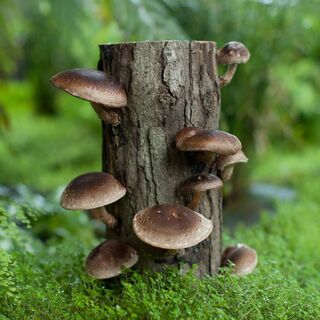
Growing
Humans have been using fungi for food, drink, and medicine for thousands of years. Edible mushrooms can turn into amazing culinary creations. Yeast gives us leavened bread, wine, and beer. Many conventional medicines come from fungi. Think of the thousands of lives that have been saved by Penicillin. Fungi can also be used to improve soil health, clean up toxic chemicals, purify water, replace foam packaging, and new applications are consistently being discovered. Fungi is truly a gift to humanity.
Just like hunter/gatherers evolved into farmers, humans have figured out how to cultivate fungi instead of relying solely on Mother Nature. Small scale mushroom "gardening" is gaining popularity because people are discovering that you don't need a laboratory to achieve success. They can be grown on logs, in bags, on straw, in garden beds, in vegetable gardens and on waste like newspaper. You can grow mushrooms by simply purchasing a pre-inoculated bag and placing it in a bowl of water.
Mushrooms have been gaining popularity worldwide and there is no end in sight. In London, the Kew Gardens' kitchen garden now includes mushrooms. Next year, the Royal Horticultural Society will create a fungi display at the Chelsea flower show for the first time. Books, movies and television shows are following the trend too.
Growing your own has many benefits. You can grow gourmet varieties that are not available at your local grocery. Mushrooms can be grown in unused spaces under the shade of a tree, in a shed, or anywhere indoors. Mushrooms can be grown in your vegetable garden while helping your vegetable plants to thrive.
If you're interested in growing your own mushrooms, The Necessary Mercantile can get you started.
|
Shiitake Mushroom Lentinula edodes Shittaké are edible mushrooms native to East Asia and cultivated around the world. Shiitake comes from the Japanese language. Shii is from the Japanese Chinquapin tree, which they may be found growing on, and také is for mushroom. Lentinula edodes grows on hardwood logs and are reasonably easy to cultivate in our region. They have a brown cap with cream colored spots. The reproductive surface is gills. The flavor is rich and earthy. The texture is meaty, making this an extremely versatile ingredient. Try mixing 4 tablespoons of soy sauce with 1/2 tablespoon of sesame oil. Mix the ingredients well. After you sauté your mushrooms, drizzle the mix over them. Shiitake mushrooms have been used in traditional medicine for generations. Lentinula edodes contain polysaccharides like lentinans and other beta-glucans. They also have one of the highest contents of naturally occurring copper. Copper supports healthy blood vessels, bones, and immune system functions. A half cup serving of Shiitake mushrooms provides 72 percent of your recommended daily intake (RDI) of copper. That same serving provides 33 percent of your RDI of selenium. If you're interested in learning how to grow these delicious and nutritious culinary treasures, stop by The Necessary Mercantile and we will give you some pointers. |

The White Button Mushroom
Agaricus bisporus
Many people will be gathering with loved ones next week to celebrate the American holiday of Thanksgiving. Some of you may be looking for mushrooms to broaden the gustatory offerings on the menu. If you are lucky enough to find Oyster mushrooms, Maitake mushrooms, or Shiitake mushrooms, take advantage of your good luck. Most will only find or simply choose the ubiquitous White Button Mushroom.
This mushroom may not have the rock-star status of many other gourmet mushrooms but it is a work-horse ingredient for chefs worldwide. Many people that say they don't like mushrooms have only tried this variety. There are numerous edible mushroom varieties to try and a nearly infinite number of ways to prepare them.
Agaricus bisporus can be found growing naturally in North America. They are native. Cultivated mushrooms are consistent in color and shape. White Button mushrooms actually turn into Portobello mushrooms when they mature. In the wild, the color can vary not only from where you find the mushroom growing, but by the age of the mushroom. The often deadly Destroying Angel mushroom could be confused as a lookalike.
There is a debate among professional chefs, foragers and amateurs about whether to wash your mushrooms or not. Some will advise to brush off your mushrooms and at most "wipe them" with a damp cloth. As someone that is experienced with food safety, cooking, mushroom foraging, and mushroom cultivation, it is my advice that you should ALWAYS wash your mushrooms and ALWAYS cook them. Some edible mushrooms can you make you quite ill when raw.
Store mushrooms in a breathable package like a paper bag. The plastic wrap that you find covering White Buttons in the grocery is actually perforated. Mushrooms must have air exchange or they will quickly rot.
Wash your mushrooms just before using them. Wet mushrooms will rot. Mushrooms make a delicious and nutritious addition to any meal.
The Artist's Conk
Ganoderma applanatum
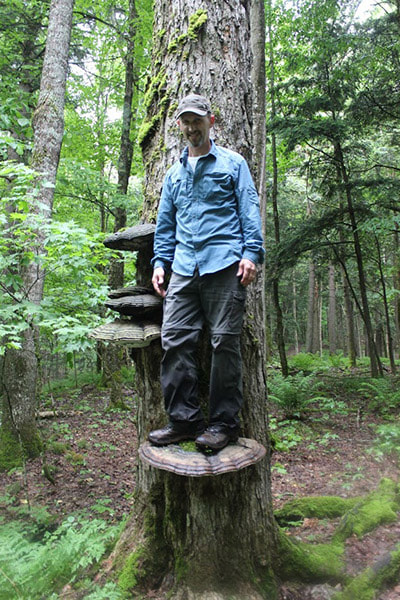
These mushrooms can grow quite large and colors on top are extremely variable. The main lookalike for Ganoderma applanatum is the Red Belted Polypore which is easily distinguished by the red "belt" along the outer edge.
Artist's Conk has been used medicinally in China for thousands of years. It is too tough to eat, but is often cut up and steeped to make a tea. It can also be powdered and added to a smoothie.
Artist's conk is high in antioxidants. It is also being studied for cancer prevention and treatment.
Artist's conk contains many beneficial compounds. It contains beta-glucan polysaccharides which work to improve immune function. They also contain triterpenes which are know to support digestive function, hepatic function, aid in the assimilation of nutrients, and aid in the elimination of waste in the body. There are also many sterols and polypheolic compounds that likely add to its medicinal properties. If you're interested in learning more, check out research on the
National Institute of Health.
If you would like to see some Artist's Conk mushrooms, stop by the Necessary Mercantile. We have some on display.
Artist's Conk has been used medicinally in China for thousands of years. It is too tough to eat, but is often cut up and steeped to make a tea. It can also be powdered and added to a smoothie.
Artist's conk is high in antioxidants. It is also being studied for cancer prevention and treatment.
Artist's conk contains many beneficial compounds. It contains beta-glucan polysaccharides which work to improve immune function. They also contain triterpenes which are know to support digestive function, hepatic function, aid in the assimilation of nutrients, and aid in the elimination of waste in the body. There are also many sterols and polypheolic compounds that likely add to its medicinal properties. If you're interested in learning more, check out research on the
National Institute of Health.
If you would like to see some Artist's Conk mushrooms, stop by the Necessary Mercantile. We have some on display.
The Iceman Fungus
Fomes fomentarius
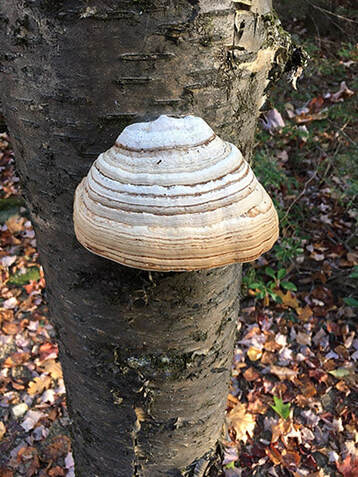
Fomes fomentarius is commonly known as the hoof fungus because of its resemblance to a horse's hoof. It is also known as a tinder conk. This name comes from it's ability to smolder for days at a time. Before matches and lighters were invented, starting a fire involved a lot of effort. This fungus could be carried as a glowing ember. With just a few strong blows, one could get a fire started.
This mushroom is a bit of a celebrity in the fungal world for another reason. In 1991, hikers in the Alps along the border of Austria and Italy made an accidental yet amazing discovery. They found Ötzi, a glacier mummy preserved by the ice. This mummy is older than the pyramids and Stonehenge. He is over 5,300 years old and he carried two pieces of Fomes fomentarius on rawhide. It is believed that he used the fungus medicinally for its antibiotic and styptic qualities. If you are interested in seeing some Iceman Fungus, stop by the Necessary Mercantile. We have some on display!
Left: A replica of Otzi
|
The Fungus That Eats Insects
Ophiocordyceps unilateralis
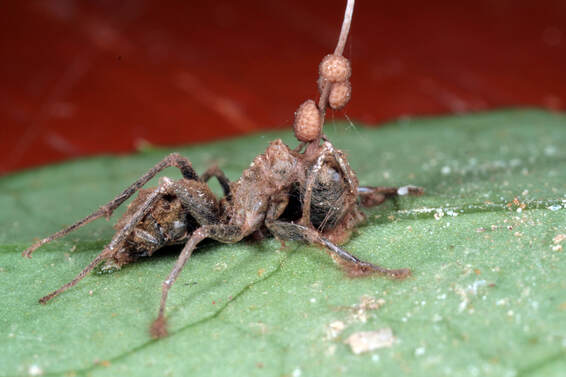
Halloween is just a few days away and this is the perfect time to learn about Ophiocordyceps unilateralis. It was once thought that this fungus only existed in tropical regions. In 2009, a species of this fungus was found in the United States. Ophiocordyceps infects ants and then takes control of their bodies. This fungal behavior is what gives it the name "zombie fungus". Here's how it works. A microscopic spore lands on the ant's cuticle and fuses itself to the ant. It then uses a massive amount of pressure to get itself through the ants exoskeleton. The pressure the fungus produces is equal to the amount of pressure in the tire of a 747 jet. Once the spore makes its way into an ant's bloodstream, it begins to replicate itself. As these spores reproduce, they fuse together to form a mycelium in the ant. The fungus infiltrates the hollow spaces between the muscles and penetrates the muscles themselves. It is debated whether the fungus actually penetrates the brain or exudes chemicals that control it. Either way, the fungus directs the host to leave the colony. Other workers would obviously notice their coworkers odd behavior, kill it and drag it to a graveyard away from the colony's home base. The fungus then directs the ant up a tree to bite down on the vein of a leaf. This seems to reliably bee at a specific height every time. At this point, the fungus kills the ant and the actual mushroom forms on the back of the ant's head. The mushroom then rains spores on the other ants below and the process begins again.
Cordyceps are being studied for many uses including: free radical scavenging, antisenescence, anti-inflammatory, and as an antiartherosclerotic. Medical research is also studying its effects on the nervous system, glucose metabolism, the respiratory, hepatic, cardiovascular, and immune systems, immunologic disease, cancer and diseases of the kidneys.
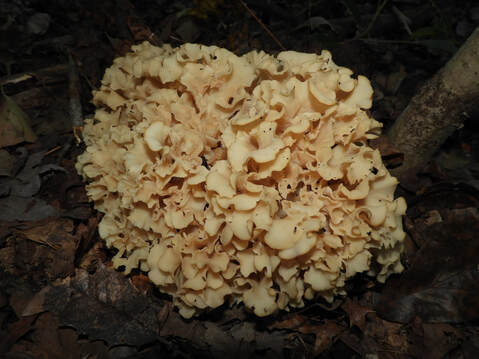
The American Cauliflower Mushroom
Sparassis americana
This mushroom looks like somebody dumped a pot of egg noodles in the forest. The American Cauliflower mushroom is white to a light cream color. It is saprotrophic and found at the base dying or decaying conifers. They have a white spore print. Like Hen of the Woods, you only find them at the base of the tree. You won't find them growing from the trunk.
These mushrooms can grow to over 10 pounds. Cauliflower mushrooms are considered a choice edible. If you are lucky enough to find one and decide to harvest it, always cut it at the base. Do not pull it. This fungal fruit will continue to produce for years, so mark your GPS and your calendar if you find one.
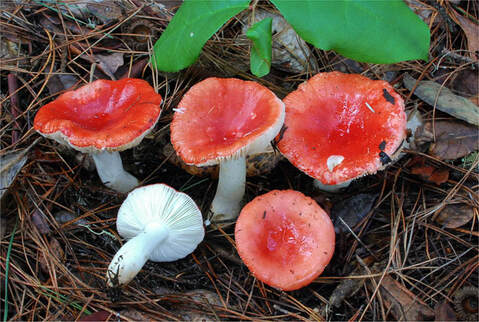
The Sickener Mushroom
Russula emetica
Both the common and binomial names of this fungal fruit are clues that you don't want to eat it. If you know what an emetic does, you will know what would happen to someone that foolishly eats this mushroom. Russula emetica is common in coniferous forests. They occur throughout Britain, Ireland mainland Europe, North America, as well as in northern Africa and some Asian countries. The white stems and gills contrasting with the red caps make them extremely easy to spot and identify. The reproductive surface is gills and the spore print is white to light cream.
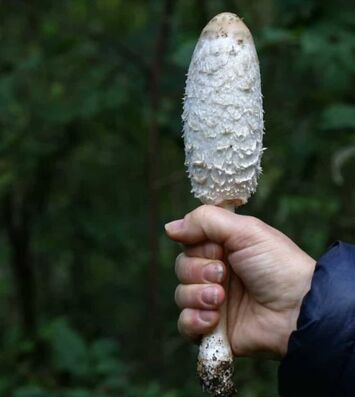
Shaggy Mane Mushroom
Coprinus comatus
This easily identified mushroom is commonly called the Shaggy Mane, Shaggy Inkcap, or Lawyer's Wig mushroom. It grows on soil but is saprobic because it gets its food from decaying organic material.
The Shaggy Mane was first described by Danish naturalist Otto Friedrich Müller in 1780 as Agaricus comatus. Its current binomial name, Coprinus comatus was given by Christian Hendrick Persoon in 1797.
The "shaggy" cap that initially covers most of the stem is the first identifiable feature to look for. The species name, comatus is derived from the Latin word for "hairy" or "shaggy".
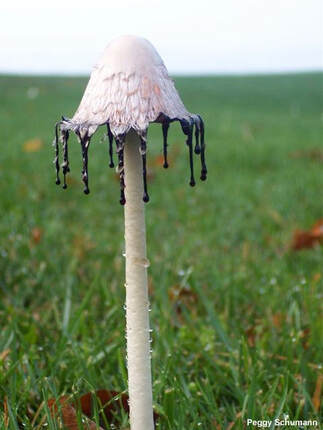
When cut in half, Shaggy Manes have a hollow stem with a string in the middle of it. You will also notice that it has a bulbous stem base.
Shaggy Manes are one of the approximately 350 species known as Inky Caps. If you let this mushroom rot in a bowl, the resulting black "ink" can be thinned with water and used for writing or drawing. The ink has a bit of a foul odor until it dries.
This mushroom is edible but there are some toxic fungi that look similar, so always be 100% sure before you eat any mushroom. Be advised that this mushroom contains a chemical known as coprine. When mixed with alcohol it will cause some extremely unpleasant side effects. This phenomenon is the reason for one of its other common names, Tippler's Bane. Symptoms of coprine poisoning include facial reddening, malaise, tingling in the limbs, headaches, excessive salivation, agitation, palpitations, nausea, and vomiting.
Shaggy Manes are one of the approximately 350 species known as Inky Caps. If you let this mushroom rot in a bowl, the resulting black "ink" can be thinned with water and used for writing or drawing. The ink has a bit of a foul odor until it dries.
This mushroom is edible but there are some toxic fungi that look similar, so always be 100% sure before you eat any mushroom. Be advised that this mushroom contains a chemical known as coprine. When mixed with alcohol it will cause some extremely unpleasant side effects. This phenomenon is the reason for one of its other common names, Tippler's Bane. Symptoms of coprine poisoning include facial reddening, malaise, tingling in the limbs, headaches, excessive salivation, agitation, palpitations, nausea, and vomiting.
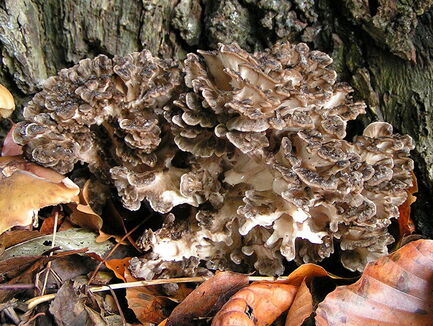
Hen of the Woods Mushroom
Greetings Friends of Fungus. Last week, we introduced the Chicken of the Woods mushroom. This week, Hen of the Woods (Grifola frondosa) is our featured fungus. This mushroom is also called Maitake (Dancing Mushroom), Sheep's Head, and King of the Mushrooms. In China, it is known as "hui-shu-hua" which means grey tree flower.
Grifola frondosa is a polypore fungus that grows at the base of old hardwood trees, generally Oak and Maple. It is native to North America, parts of Asia, and Europe.
The reproductive surface (underside) is pores. This mushroom is always found growing on wood.
Grifola Frondosa has been used in traditional medicine for centuries to enhance immunity, control diabetes, as an anti-hypertensive, as an anti-viral, to control non-fatty liver disease, as an anti-tumor, and many other applications. Medical research is ongoing.
This is a choice edible. There are some similar mushrooms. One called Berkley's Polypore is sometimes mistaken for Hen of the Woods. If you're interested in trying Hen of the Woods, we have them for sale at The Necessary Mercantile in Churchville.

Cooking Suggestion
*Wash your Hen of the Woods thoroughly just before cooking.
Pat them dry.
*In a skillet/frying pan, melt some butter and olive oil, some bacon drippings, or use your favorite cooking oil.
*Place the whole clump of Hen of the Woods into the skillet and then place a cast iron skillet on top of the mushrooms to press them down. If you don't have a heavy skillet, a pan with a rock in it will work.
*Sear the mushroom for about 4 minutes without disturbing it.
*Flip the mushroom and sear for another 4 minutes.
*Remove it from the heat and season it with salt and pepper to taste. At this point, you could also use steak sauce, worcestershire sauce, barbecue sauce, or any other condiment that you like. The result is a delicious and nutritious steak like fare that can be paired with seasonal vegetables for an exquisite culinary experience.
*Wash your Hen of the Woods thoroughly just before cooking.
Pat them dry.
*In a skillet/frying pan, melt some butter and olive oil, some bacon drippings, or use your favorite cooking oil.
*Place the whole clump of Hen of the Woods into the skillet and then place a cast iron skillet on top of the mushrooms to press them down. If you don't have a heavy skillet, a pan with a rock in it will work.
*Sear the mushroom for about 4 minutes without disturbing it.
*Flip the mushroom and sear for another 4 minutes.
*Remove it from the heat and season it with salt and pepper to taste. At this point, you could also use steak sauce, worcestershire sauce, barbecue sauce, or any other condiment that you like. The result is a delicious and nutritious steak like fare that can be paired with seasonal vegetables for an exquisite culinary experience.
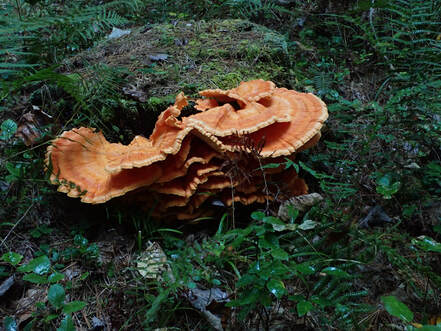
Chicken of the Woods Mushroom
Howdy-do Friends of Fungus. The fungus of the week is Chicken of the Woods (Laetiporus sulphureus). These mushrooms are also commonly called crab of the woods, sulphur shelf, and sulphur polypore.
It is a bracket fungus that ranges in color from bright orange to sulphur yellow. It is found in North America and Europe. The reproductive surface (underside) is pores. This mushroom is always found growing on wood.
Laetiporus sulphureus was first described as Boletus sulphureus in 1789 by French mycologist Pierre Bulliard. It was given its current name in 1920 by American mycologist William Murrill. Pharmacological research supports traditional medicinal claims/uses and has revealed new possibilities. Cytotoxic, anticancer, antimicrobial, anti-inflammatory, hypoglycemic, and antioxidant effects have been observed.
This is a choice edible but as always, it is up to know what you're eating. There are some similar mushrooms that can cause terrible gastrointestinal problems. Chicken of the Woods must be cooked. If you're interested in trying Chicken of the Woods, we have some for sale at The Necessary Mercantile in Churchville this weekend. If you can't make it in on Thursday, there may still be some left on Saturday from 10-2:00.
|
Crown Tipped Coral Mushroom Hello Friends of Fungus. We hope that you've had some time to spend mushroom hunting. With the recent rain and temperature fluctuations, fungal fruits of various varieties have been popping up. The fungus among us this week is the Crown Tipped Coral Mushroom (Artomyces pyxidatus (formerly Clavicorona pyxidata). These beautiful mushrooms get their name from the resemblance to the invertebrate creatures under the sea. There are many coral mushroom varieties. Some are edible and some are toxic. This one happens to be edible and quite delicious. It can make a stunning presentation as a garnish on a special meal. Identification begins with their coral like shape. Crown Tipped Corals always grow on dead and dying hardwood. The color ranges from cream to tan. Looking closely at the tips, you see the crown like protrusions that give this mushroom its name. If you're interested in learning more about mushroom identification, we will be offering a presentation at The Necessary Mercantile in Churchville, VA this Saturday, September 17th at 10:30 am. For more information: Follow us on Facebook. On Saturday, October 1, 2022 at 1:00 pm, we will be meeting at The Necessary Mercantile in Churchville, VA. From there, we will caravan to Braley Pond for an expedition and exploration of all things fungal. A delicious lunch will be provided by White's Wayside. More details coming soon. For more information: Follow us on Facebook. |
|

Varnish Shelf Mushroom
Ganoderma tsugae
This stunning mushroom is commonly called the Varnish Shelf or Hemlock Varnish Shelf because of it's shiny surface. It grows almost exclusively on Hemlock trees, whose taxonomic name is Tsuga. The Ganoderma genus includes about 80 species including the often cultivated Ganoderma lucidum.
G. tsugae was first described by American mycologist William Alphonso Murrill in the Bulletin of the Torrey Botanical Club, Vol. 29 in 1902. In Japan, they refer to this mushroom as Reishi. For over 7,000 years the Chinese have been using Reishi in traditional medicine. It is so revered that they call it Lingzhi which translates to, "the mushroom of immortality". This mushroom is not a choice edible but is often used to make tinctures and teas.
A quick search of The National Library of Medicine reveals that these mushrooms and the polysaccharides that they contain are being studied for various medical benefits.
As you can see, the color ranges from a deep burgundy color to a brownish cream color along the edge. The reproductive surface is pores. These pores are normally cream colored and it is a bracket fungus. They are saprobic so they will always be on wood. The spore print is brown.
If you would like to see this mushroom in person come see us at The Necessary Mercantile. We offer a variety of teas made with Reishi mushrooms and also sell dried Reishi so that you can make your own tinctures and teas.
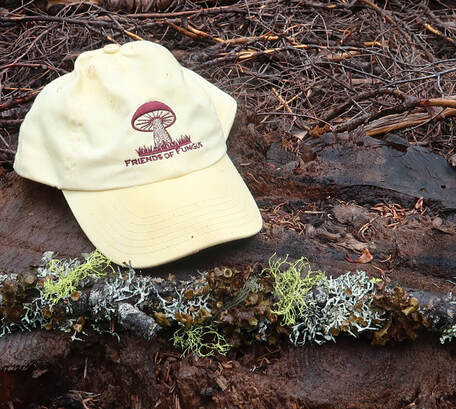
Lichens
Greetings Friends of Fungus. The fungus of the week is something a little out of the ordinary. We are likin' lichens lately. Lichens are actually two or more different organisms. They are a fungus that has teamed up with algae and/or cyanobacteria. Fungus provides structure and protection from the elements for the photosynthesis performing partners. The cyanobacteria/algae shares some of the food it produces with the fungus. Lichens are essentially there own self-contained symbiotic ecosystem. We cannot begin to cover all of the interesting information about lichens in this post. You're in luck though! Friends of Fungus will be teaming up with Enchanted Nature Tours to offer an informative presentation and guided hike in the George Washington National Forest. On Saturday, October 1, 2022 at 1:00 pm, we will be meeting at The Necessary Mercantile in Churchville, VA. From there, we will caravan to Braley Pond for an expedition and exploration of all things fungal.
A delicious lunch will be provided by White's Wayside.
More details coming soon. For more information: Follow us on Facebook.
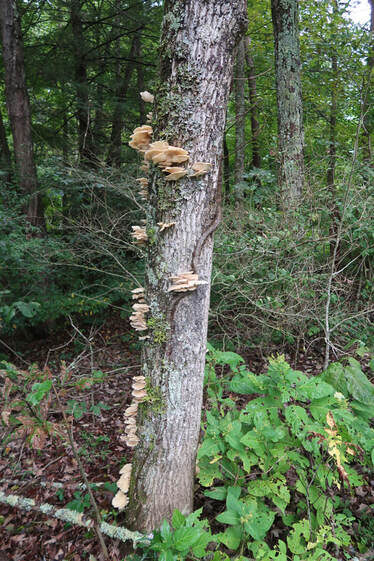
Oyster Mushroom
Pleurotus ostreatus
The AMAZING Oyster Mushroom has been found in our region recently. Pleurotus ostreatus mushrooms are amazing because of their many wonderful qualities.
Oysters are delicious and nutritious. The name comes from their resemblance to the mollusk. The flavor does not taste like seafood at all. Pleurotus ostreatus also produces the chemical Lovastatin which is used as a cholesterol-lowering pharmaceutical. A quick search of Pleurotus ostreatus on
https://pubmed.ncbi.nlm.nih.gov/
will reveal that these fungi are being studied for many other medicinal properties as well.
Oyster mushrooms are cream colored and fruit on wood in shelf like clusters. They have gills. While the mushrooms themselves are found growing on wood, the mycelium is found in soil too. In fact, soil is often inoculated with Pleurotus ostreatus to control plant killing nematodes and for mycoremediation. To see an example of mycoremediation, watch the video below.
Oyster mushrooms come in many colors and are relatively easy to cultivate. If you are interested in growing your own, The Necessary Mercantile in Chuchville, VA has ready to grow kits called "Shroom Blooms" for sale.
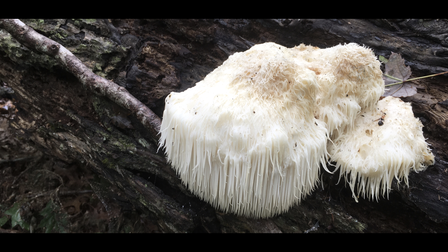
Lion's Mane
Hericium erinaceus
Lion's Mane mushrooms should be appearing soon here in the Shenandoah Valley. They will be spotted growing on dead and dying hardwood trees (Saprophytic). Unlike most other fungi, Lion's Mane will grow on Black Walnut trees.
They are white and have an unusual shape. They are covered with teeth (sometimes called spines), which look like draped white hairs. There are other similar species in the Hericium genus but there are no lookalikes for the Lion's Mane. When cooked with butter, Lion's Mane tastes similar to lobster or crab. If you're interested in tasting some that have been cultivated, The Necessary Mercantile in Chuchville, VA has dehydrated mushrooms for sale.
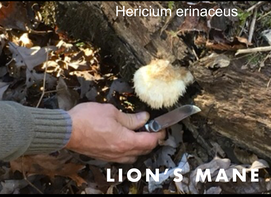
Research has demonstrated that Lion's Mane may protect against dementia, reduce mild symptoms of anxiety and depression, and help repair nerve damage. It also has strong anti-inflammatory, antioxidant and immune-boosting abilities and been shown to lower the risk of heart disease, cancer, ulcers and diabetes in animals.
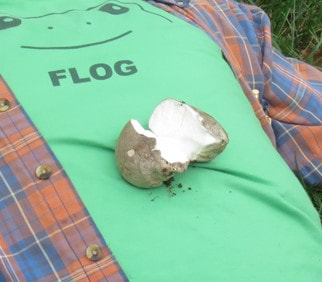
GIANT PUFFBALL
Calvatia gigantea
In a previous fungi post, we learned about the Lattice Puffball. This week, we will discuss the more popular and edible Giant Puffball. Calvatia gigantea is a harbinger that autumn is approaching. When the leaves begin to turn, you will find these fungi growing in meadows and along wooded edges.
Giant Puffballs grow from the soil, but are actually saprobic. This means that they are breaking down organic material. They are easily recognized by their smooth white exterior. Often, they appear more like a partially deflated ball than a perfect sphere, but never like an inverted pear.
The interior is white, turning yellow-green with age, and finally brown as it dissolves into trillions of spores. The shape, color, and texture is very similar to buffalo mozzarella cheese.
Calvatia gigantea
In a previous fungi post, we learned about the Lattice Puffball. This week, we will discuss the more popular and edible Giant Puffball. Calvatia gigantea is a harbinger that autumn is approaching. When the leaves begin to turn, you will find these fungi growing in meadows and along wooded edges.
Giant Puffballs grow from the soil, but are actually saprobic. This means that they are breaking down organic material. They are easily recognized by their smooth white exterior. Often, they appear more like a partially deflated ball than a perfect sphere, but never like an inverted pear.
The interior is white, turning yellow-green with age, and finally brown as it dissolves into trillions of spores. The shape, color, and texture is very similar to buffalo mozzarella cheese.
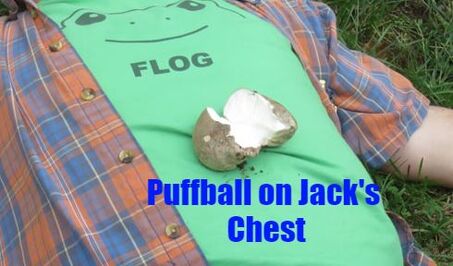
Jack Among The Jack O'Lanterns
(Omphalotus illudens)
Jack is lying among Jack O'Lantern mushrooms. These pretty orange mushrooms grow on decaying wood (saprophytic). You can see that they are growing out of a stump and rotting roots. The mushrooms growing out of the roots appear to be growing in the soil because the wood is buried. This phenomenon can lead some enthusiasts to mistake Jack Lanterns for delicious Chanterelle mushrooms. If you eat Jack Lanterns you will regret it. They will cause extreme digestive distress. So how do you tell the difference? Chanterelles always grow on soil and Jack Lanterns always grow on wood. Jack Lanterns have gills while Chanterelles have ridges. Chanterelles have a distinctive apricot-like aroma while Jack Lanterns do not. One other interesting characteristic of Ompholotus illudens is that it glows in the dark (bioluminescent). The mushroom on Jack's chest is a Puffball. We will discuss that mushroom in a future post.
(Omphalotus illudens)
Jack is lying among Jack O'Lantern mushrooms. These pretty orange mushrooms grow on decaying wood (saprophytic). You can see that they are growing out of a stump and rotting roots. The mushrooms growing out of the roots appear to be growing in the soil because the wood is buried. This phenomenon can lead some enthusiasts to mistake Jack Lanterns for delicious Chanterelle mushrooms. If you eat Jack Lanterns you will regret it. They will cause extreme digestive distress. So how do you tell the difference? Chanterelles always grow on soil and Jack Lanterns always grow on wood. Jack Lanterns have gills while Chanterelles have ridges. Chanterelles have a distinctive apricot-like aroma while Jack Lanterns do not. One other interesting characteristic of Ompholotus illudens is that it glows in the dark (bioluminescent). The mushroom on Jack's chest is a Puffball. We will discuss that mushroom in a future post.
|
Old Man of the Woods Mushroom
(Strobilomyces spp.) The Old Man of the Woods is a wonderfully photogenic mushroom in the Bolete family. It is found on the forest floor (mycorrhizal with Oaks). The cap and the stem are covered in shaggy scales . The reproductive surface is pores. This is an edible mushroom but we do not eat them or tell others to. This tasteless beauty is a treat for your camera only. |
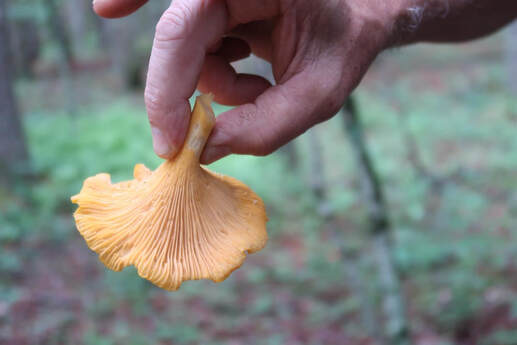
Chanterelle
(Cantharellus cibarius)
Chanterelle mushrooms are one of the choice edibles that grow wild in our region. They are easy to spot in the forest due to their yellow to orange color. They are mycorrhizal with coniferous trees. They always will be growing on the soil and never found growing out of wood. When you slice or tear them open, the interior is white. They have ridges on the underside of the cap. This is different than the normal pores, teeth, or gills. The ridges look similar to gills, however they are much more rigid. Gills are more fragile and break easily if you brush your finger across them. Another identifier is the fragrance. If you smell a Chanterelle, you will notice a mild apricot-like aroma.
(Cantharellus cibarius)
Chanterelle mushrooms are one of the choice edibles that grow wild in our region. They are easy to spot in the forest due to their yellow to orange color. They are mycorrhizal with coniferous trees. They always will be growing on the soil and never found growing out of wood. When you slice or tear them open, the interior is white. They have ridges on the underside of the cap. This is different than the normal pores, teeth, or gills. The ridges look similar to gills, however they are much more rigid. Gills are more fragile and break easily if you brush your finger across them. Another identifier is the fragrance. If you smell a Chanterelle, you will notice a mild apricot-like aroma.
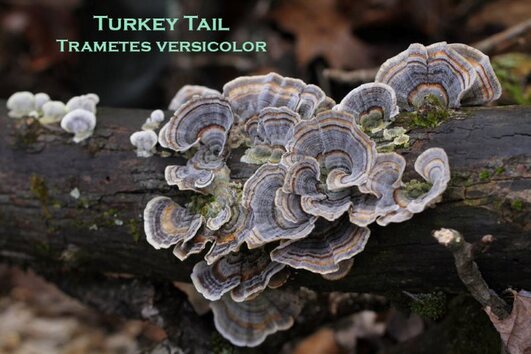
Turkey Tails are one of the great medicinal mushrooms and quite common in our woods.
The second pic shows False Turkey Tails (Stereum Ostrea).
They are beautiful and harmless, but not what we are looking for.
You can buy dried, locally harvested Turkey Tails and the Necessary Mercantile.
We’ve also posted suggestions on how to process them into an extract.
Jack’s quick and happy method for extracting Turkey Tails.
I. Add dry or fresh Turkey Tail to your evening libation - Enjoy
II. In the morning, move the Turkey Tail to your morning tea or coffee
The second pic shows False Turkey Tails (Stereum Ostrea).
They are beautiful and harmless, but not what we are looking for.
You can buy dried, locally harvested Turkey Tails and the Necessary Mercantile.
We’ve also posted suggestions on how to process them into an extract.
Jack’s quick and happy method for extracting Turkey Tails.
I. Add dry or fresh Turkey Tail to your evening libation - Enjoy
II. In the morning, move the Turkey Tail to your morning tea or coffee
